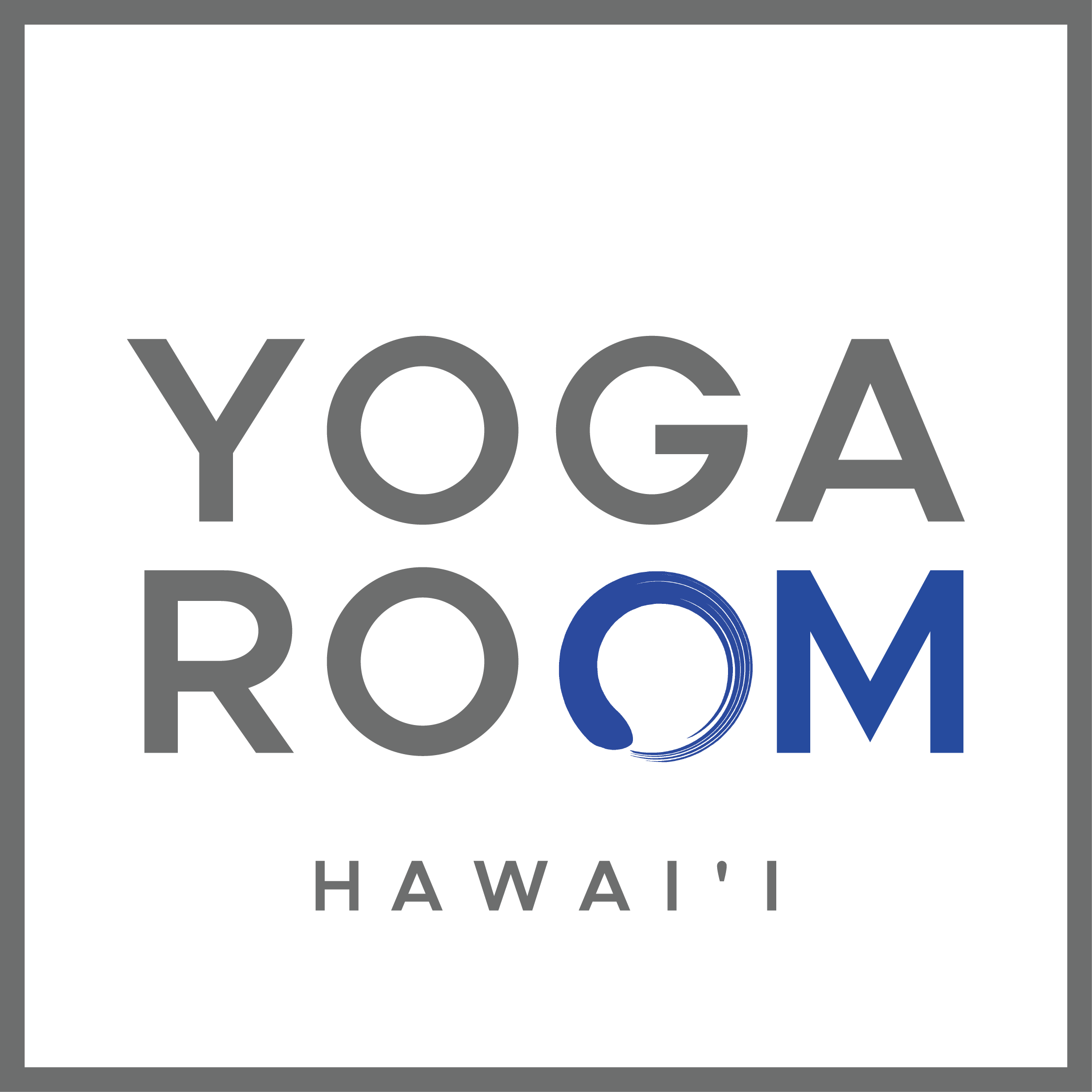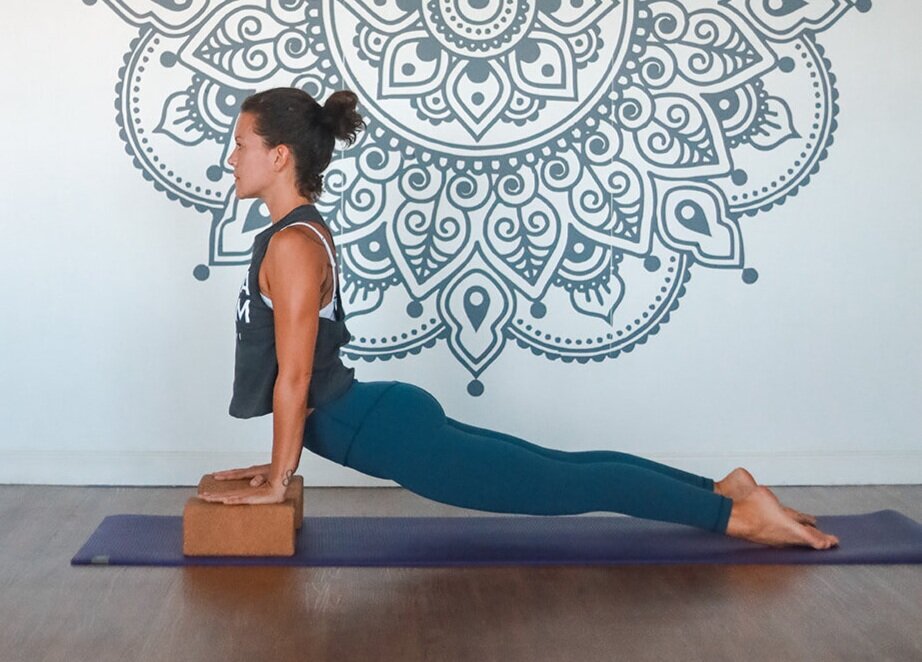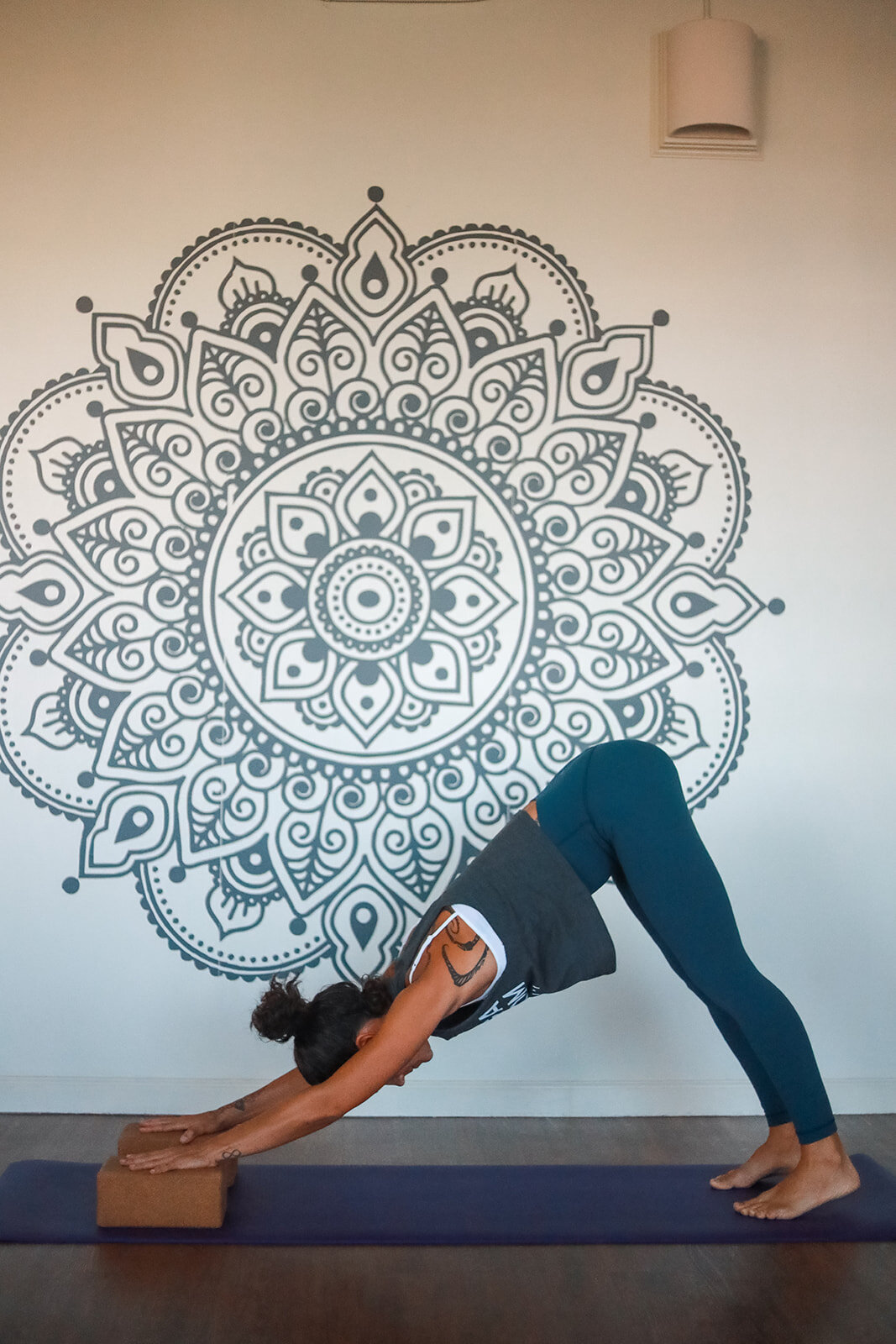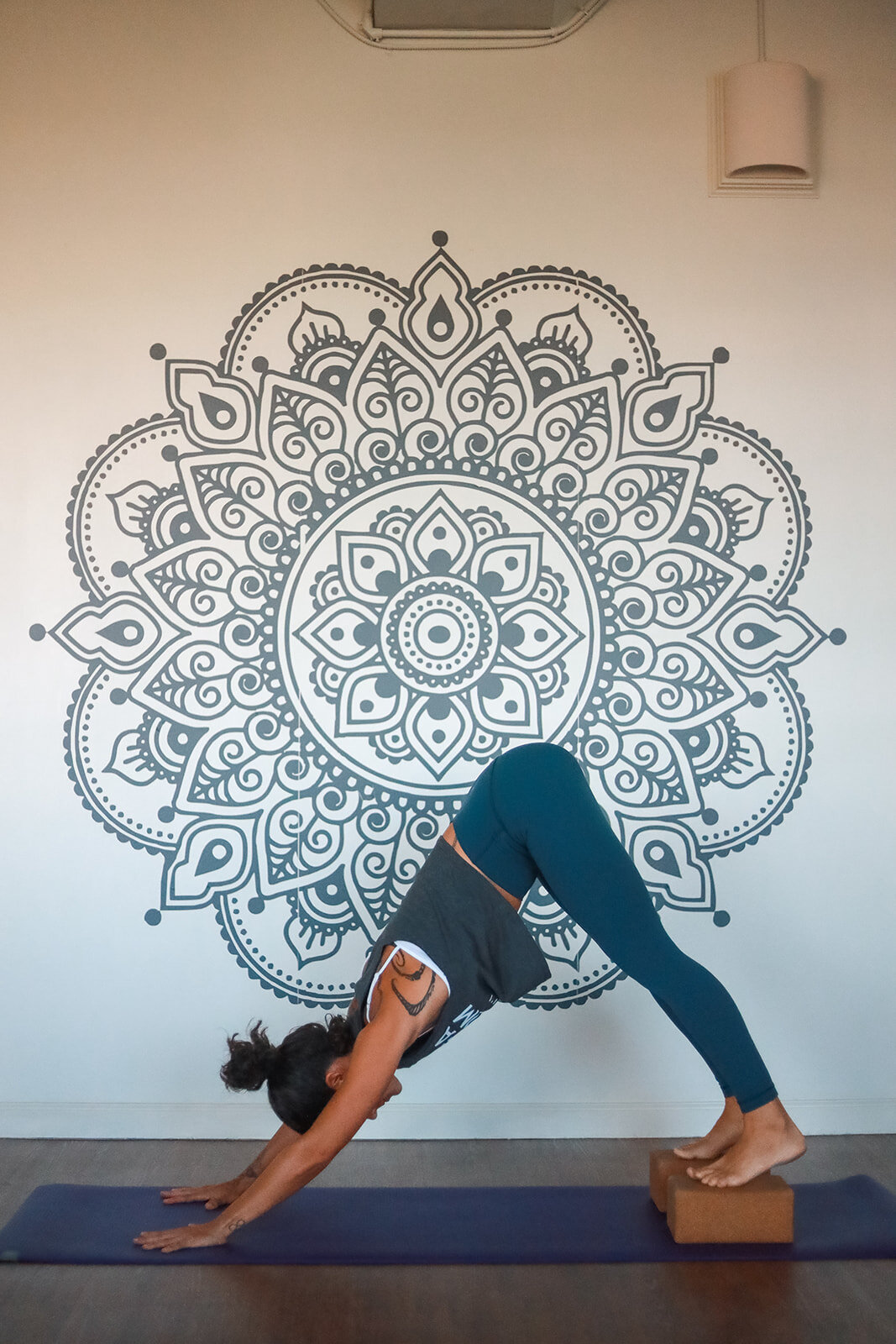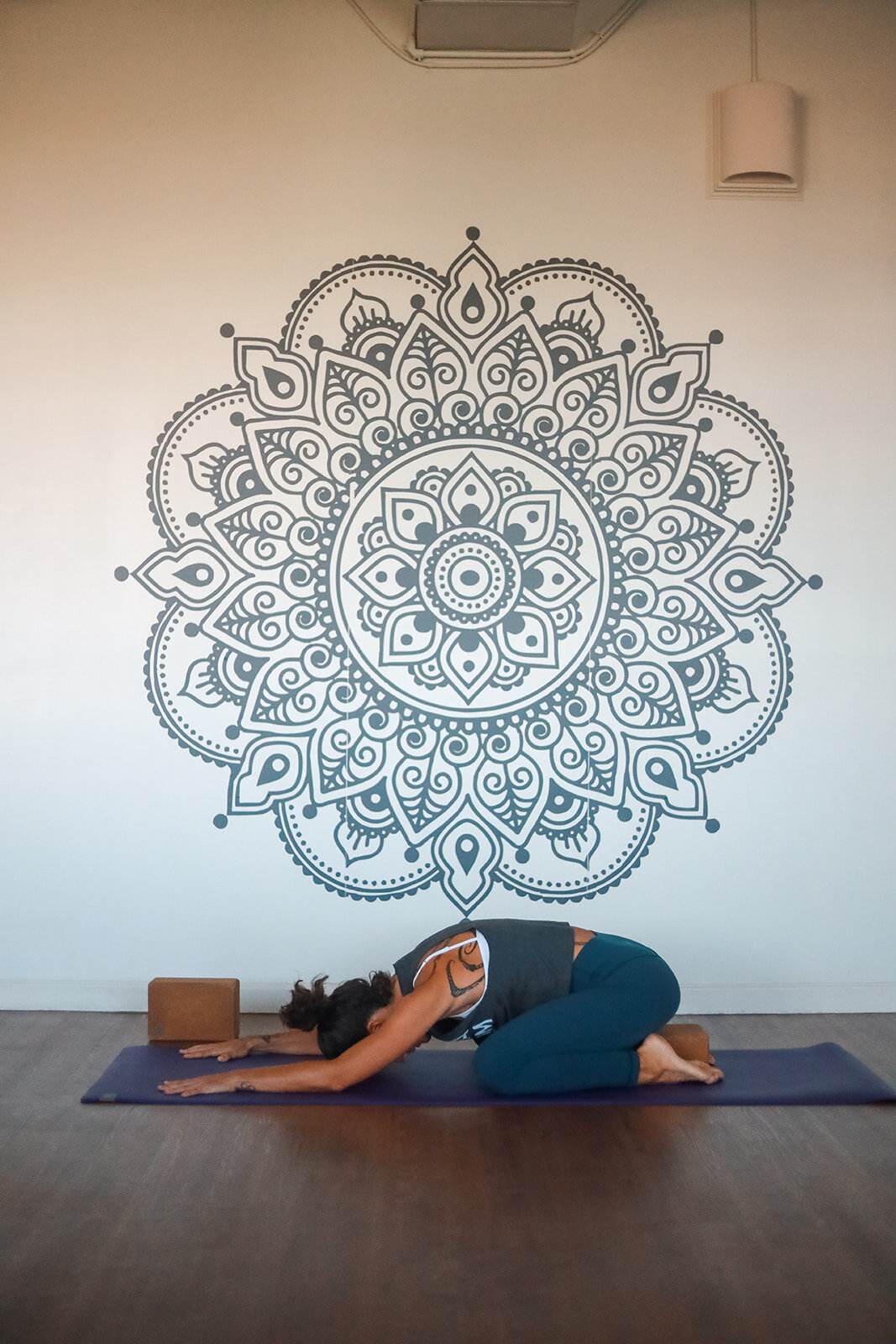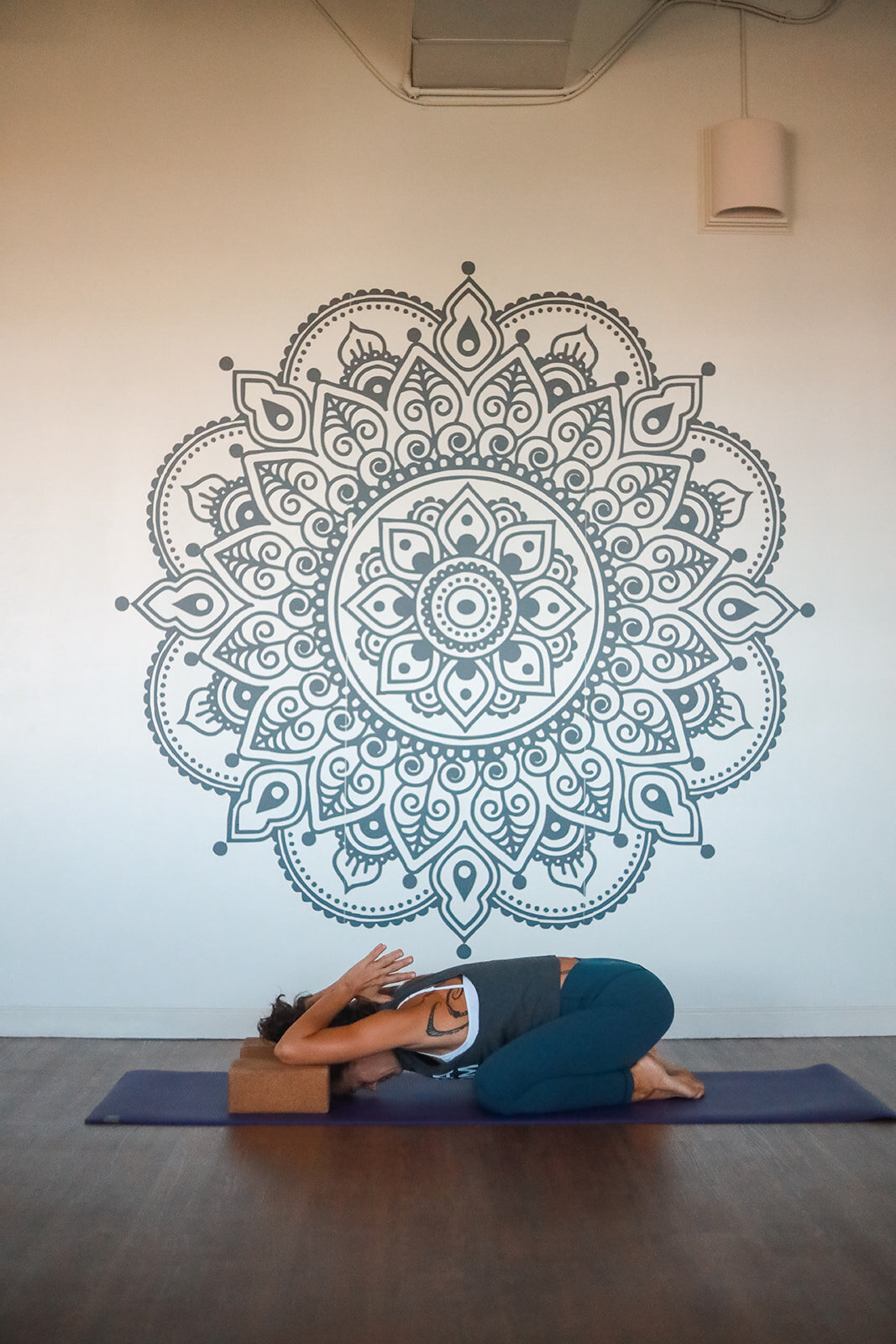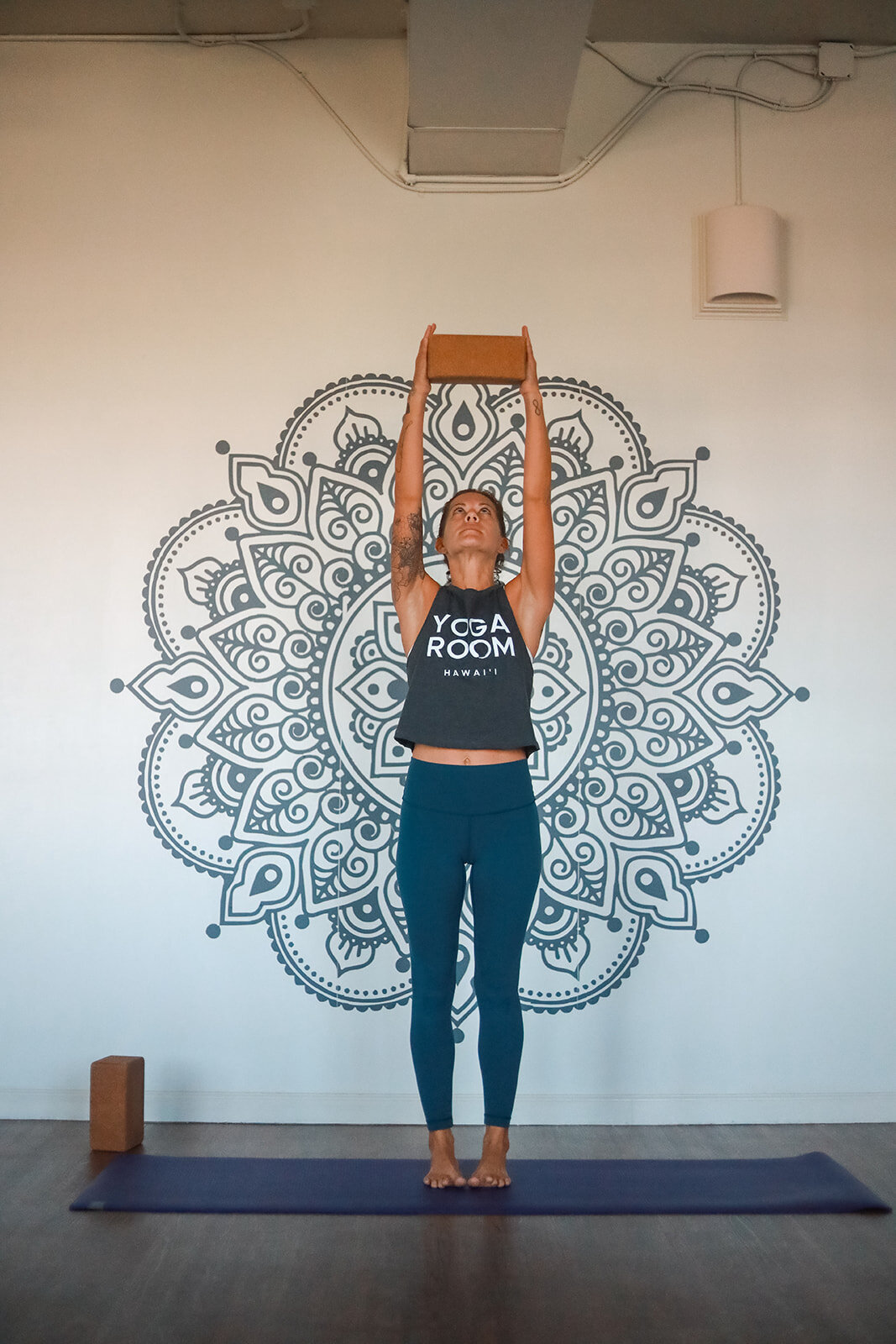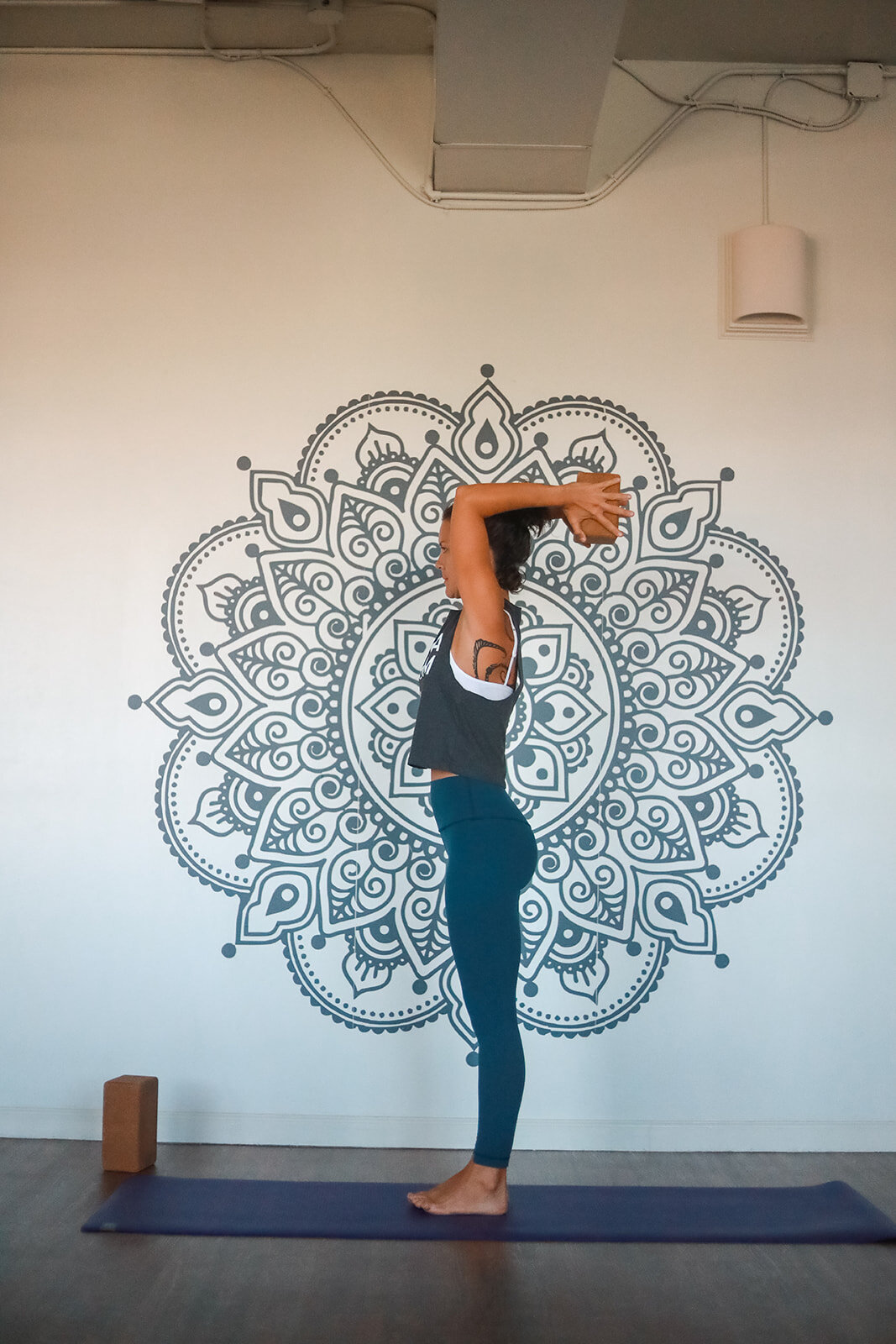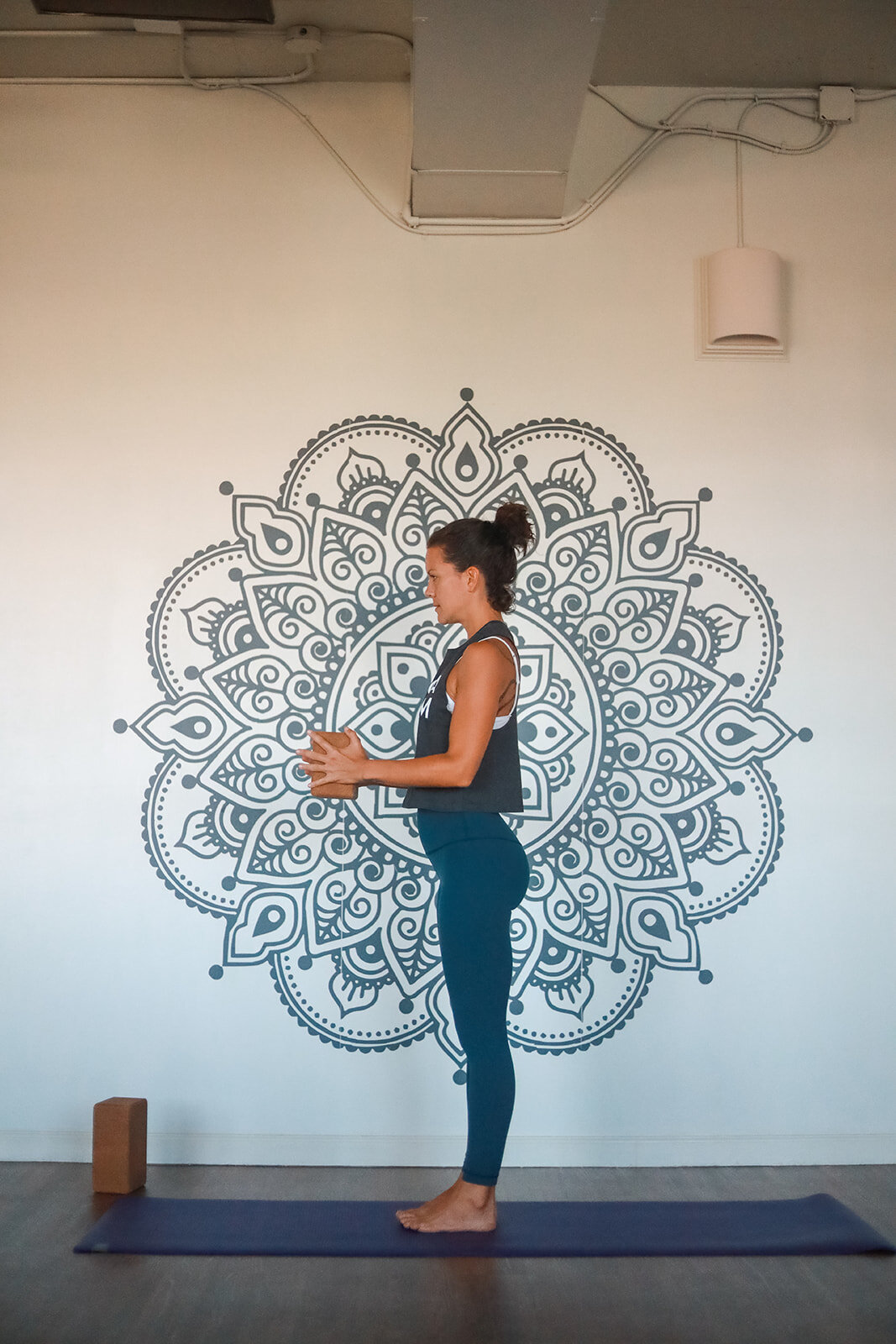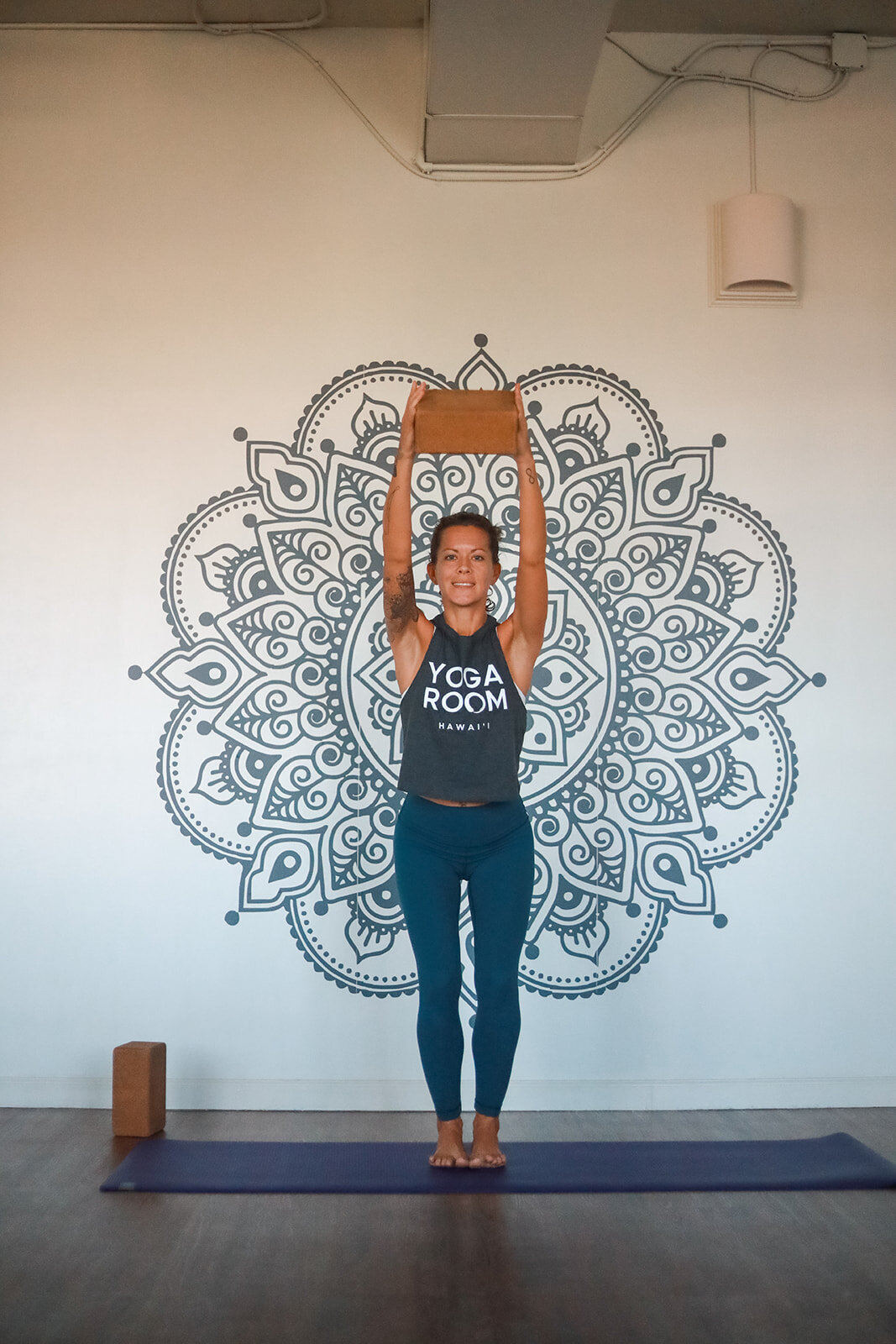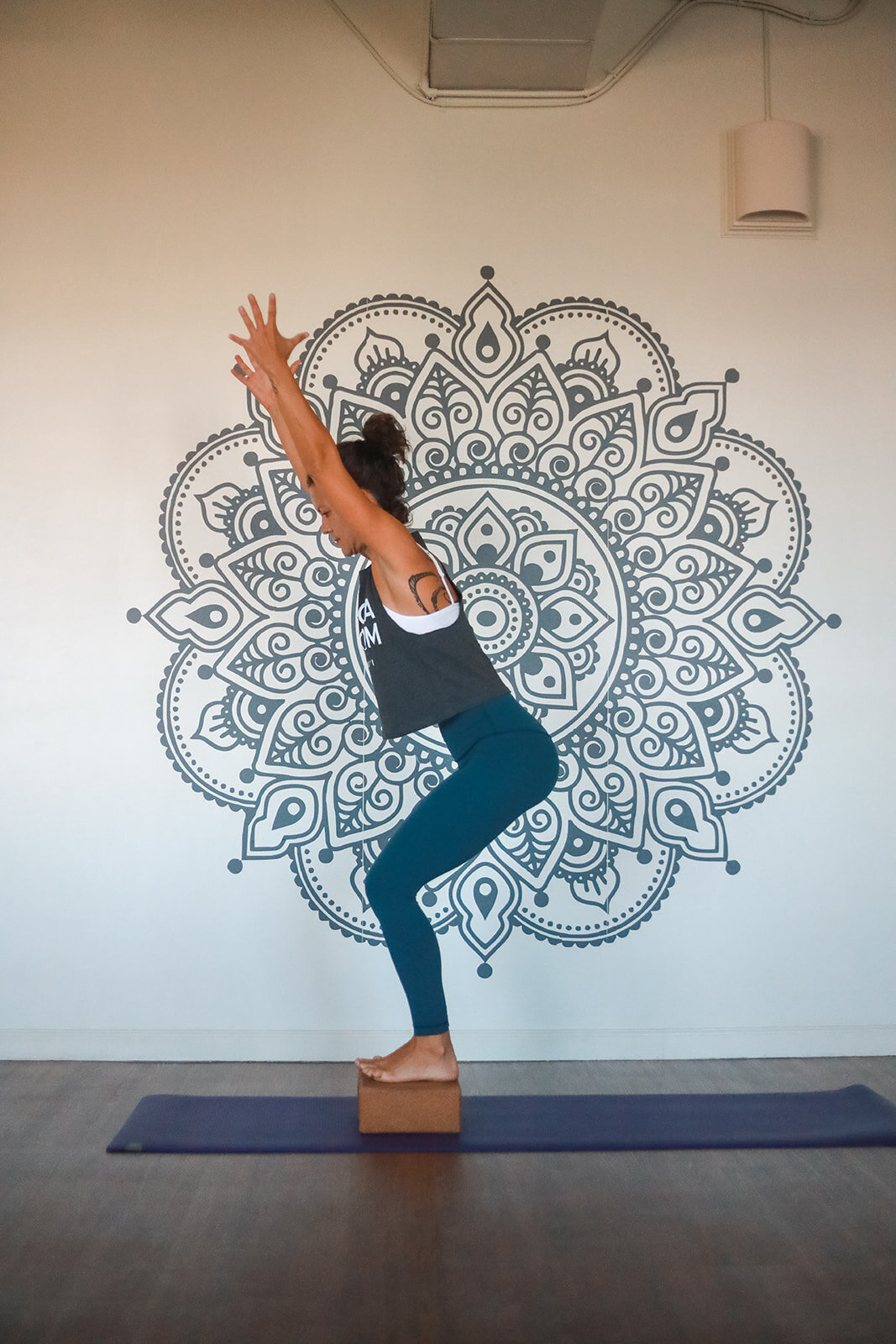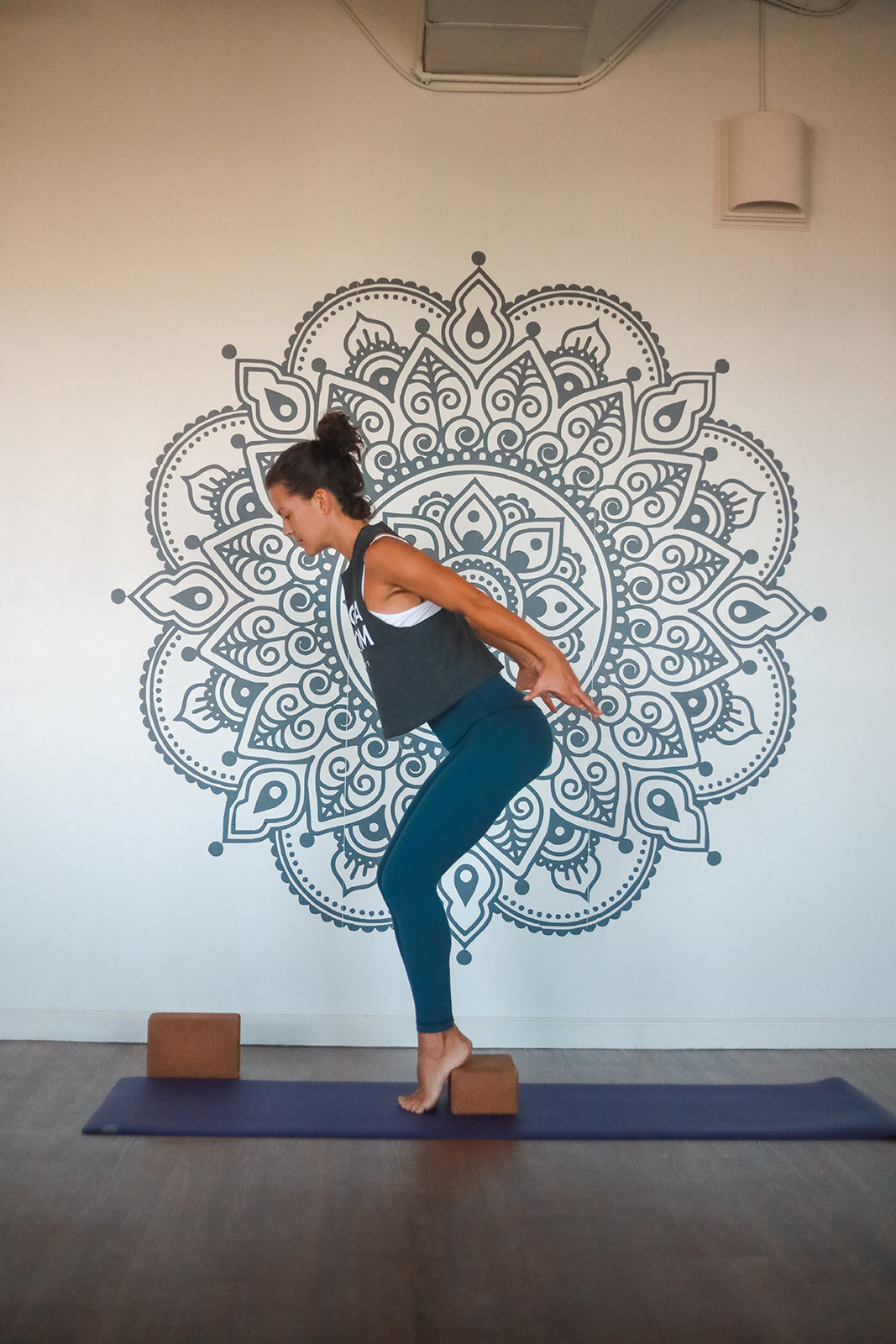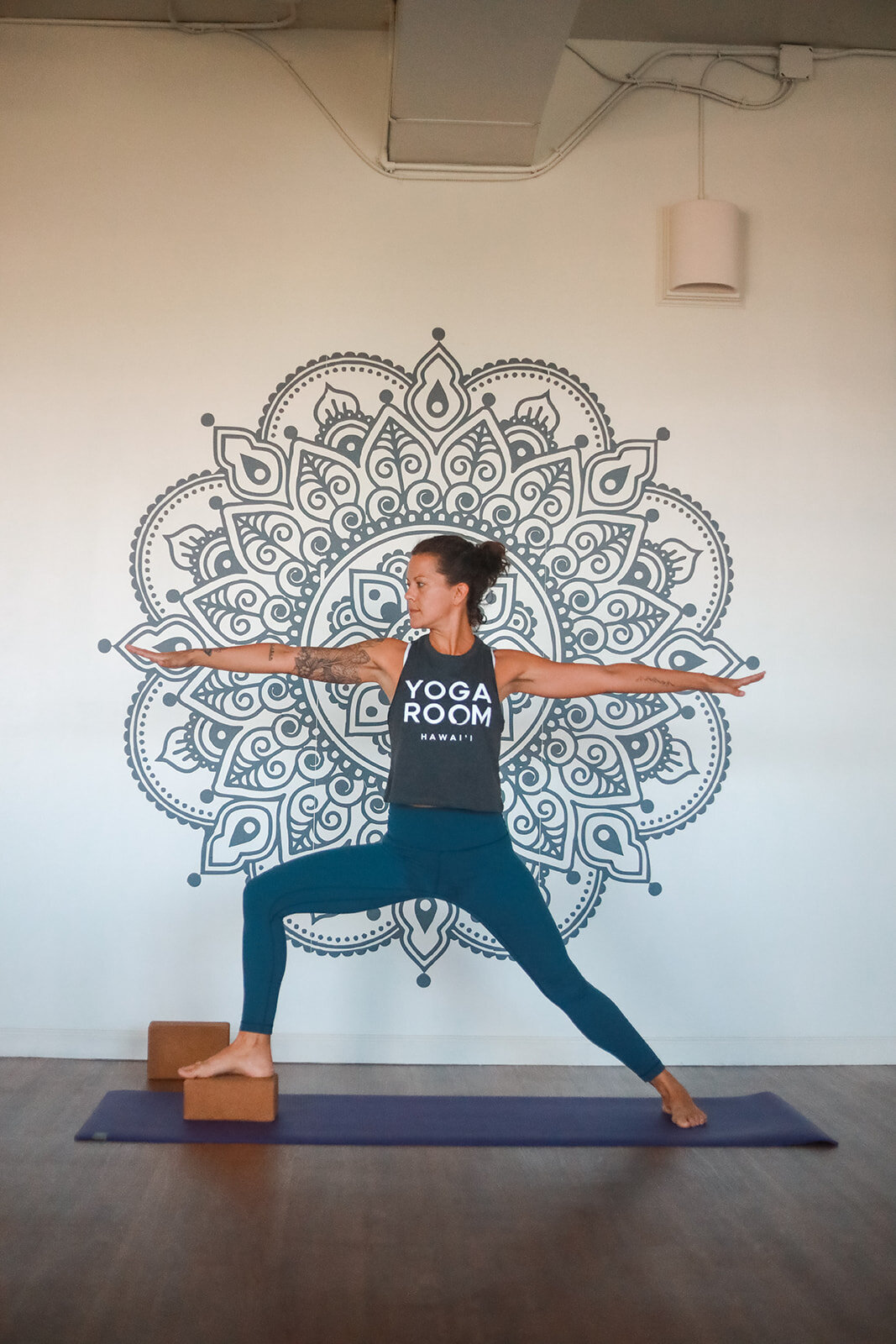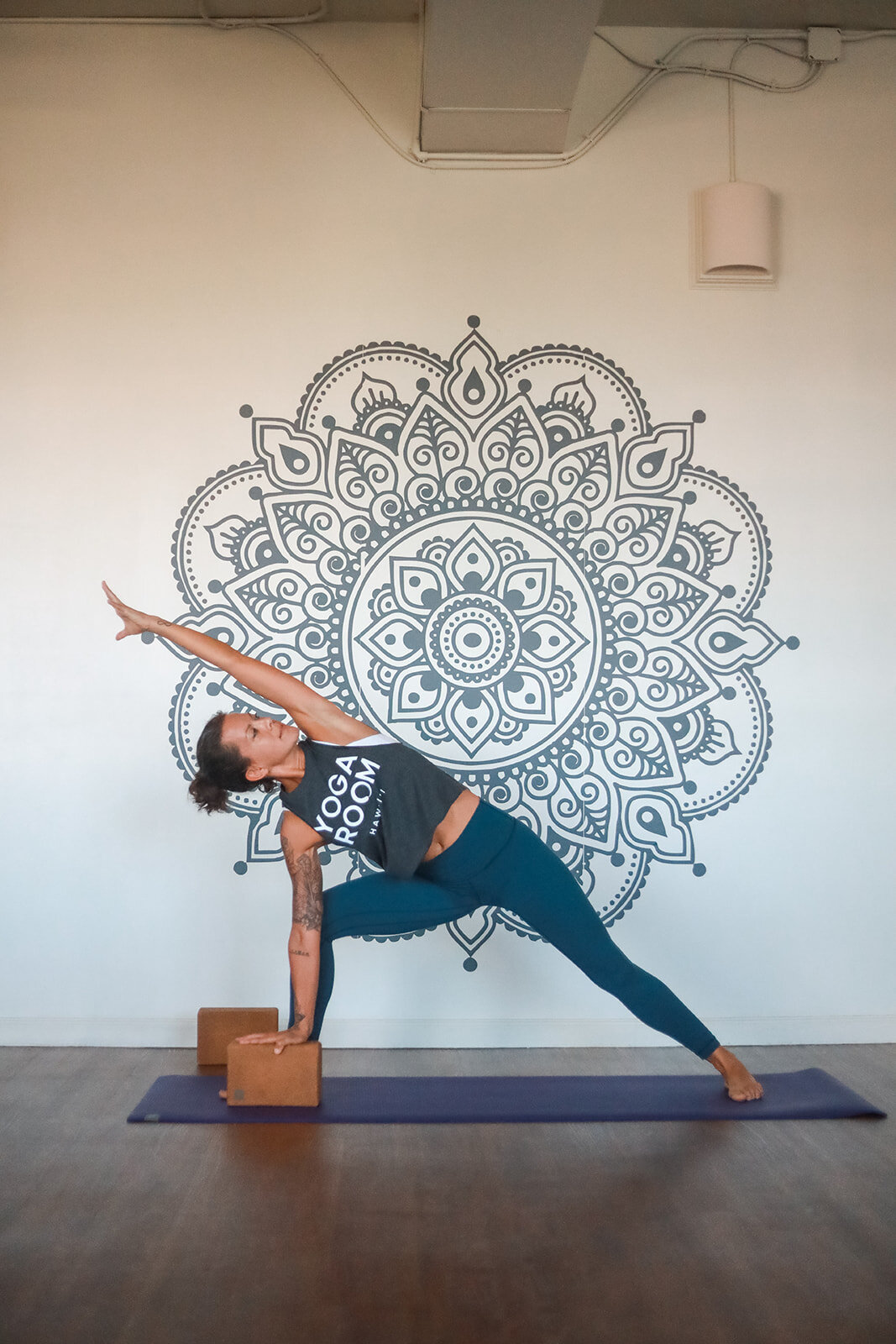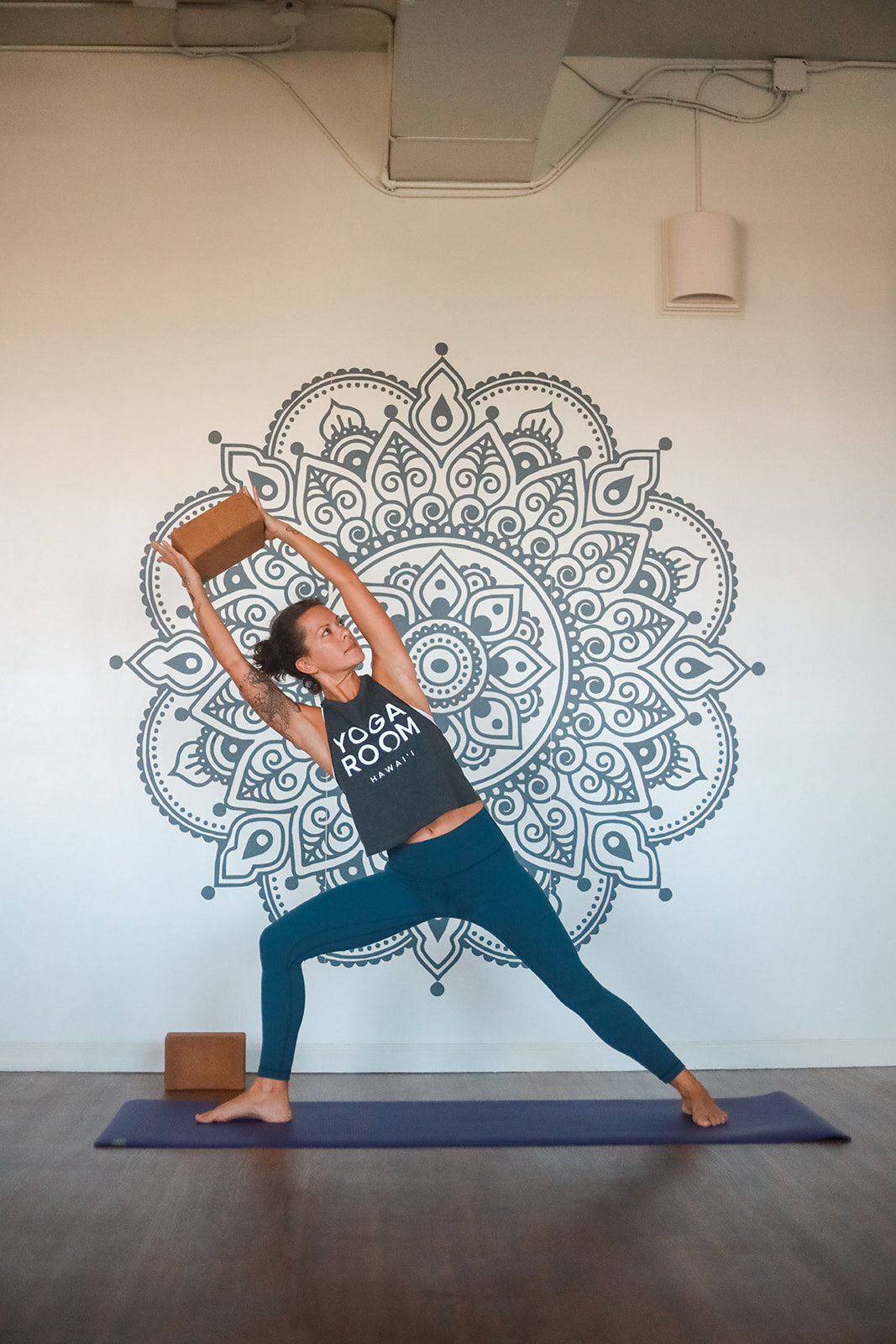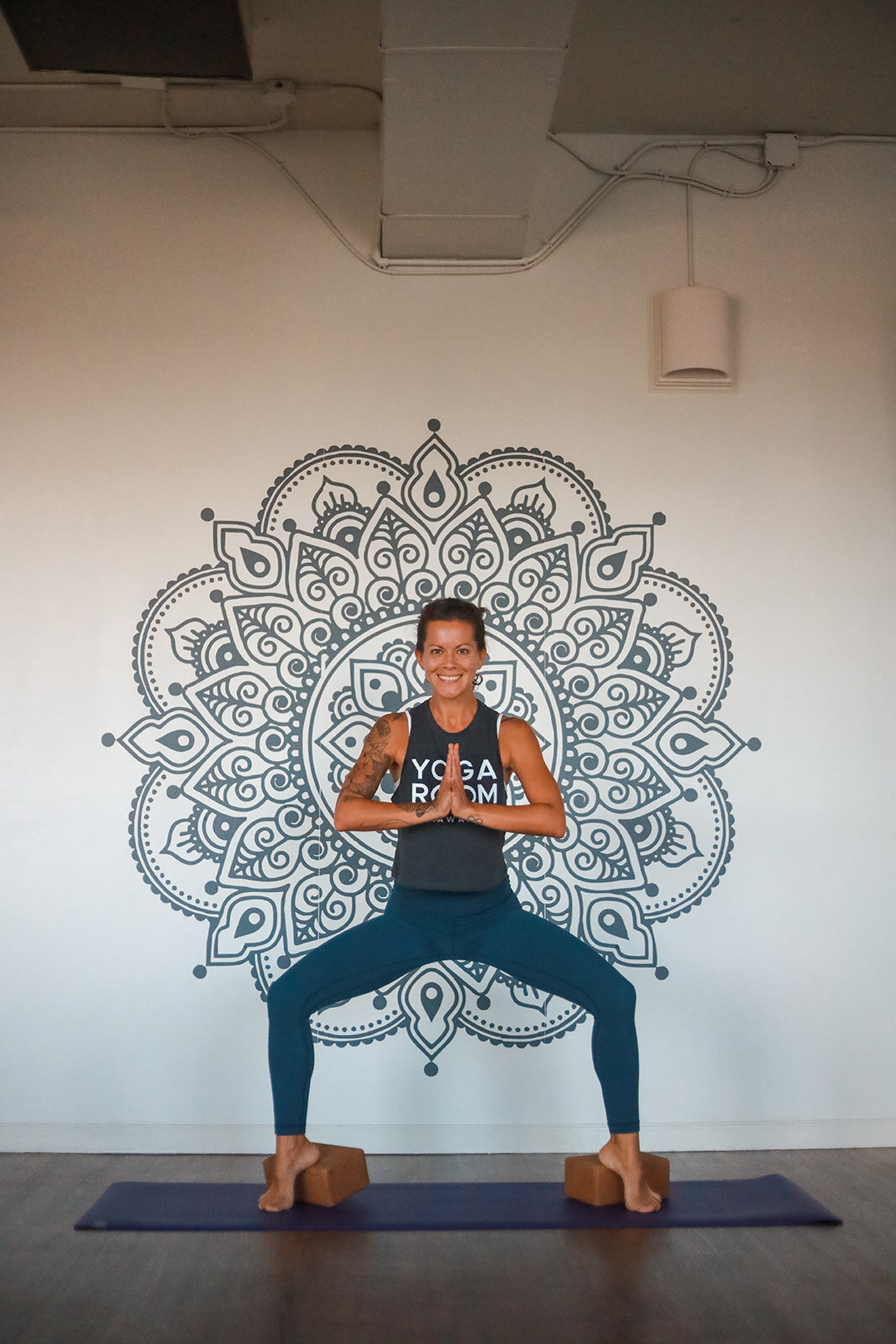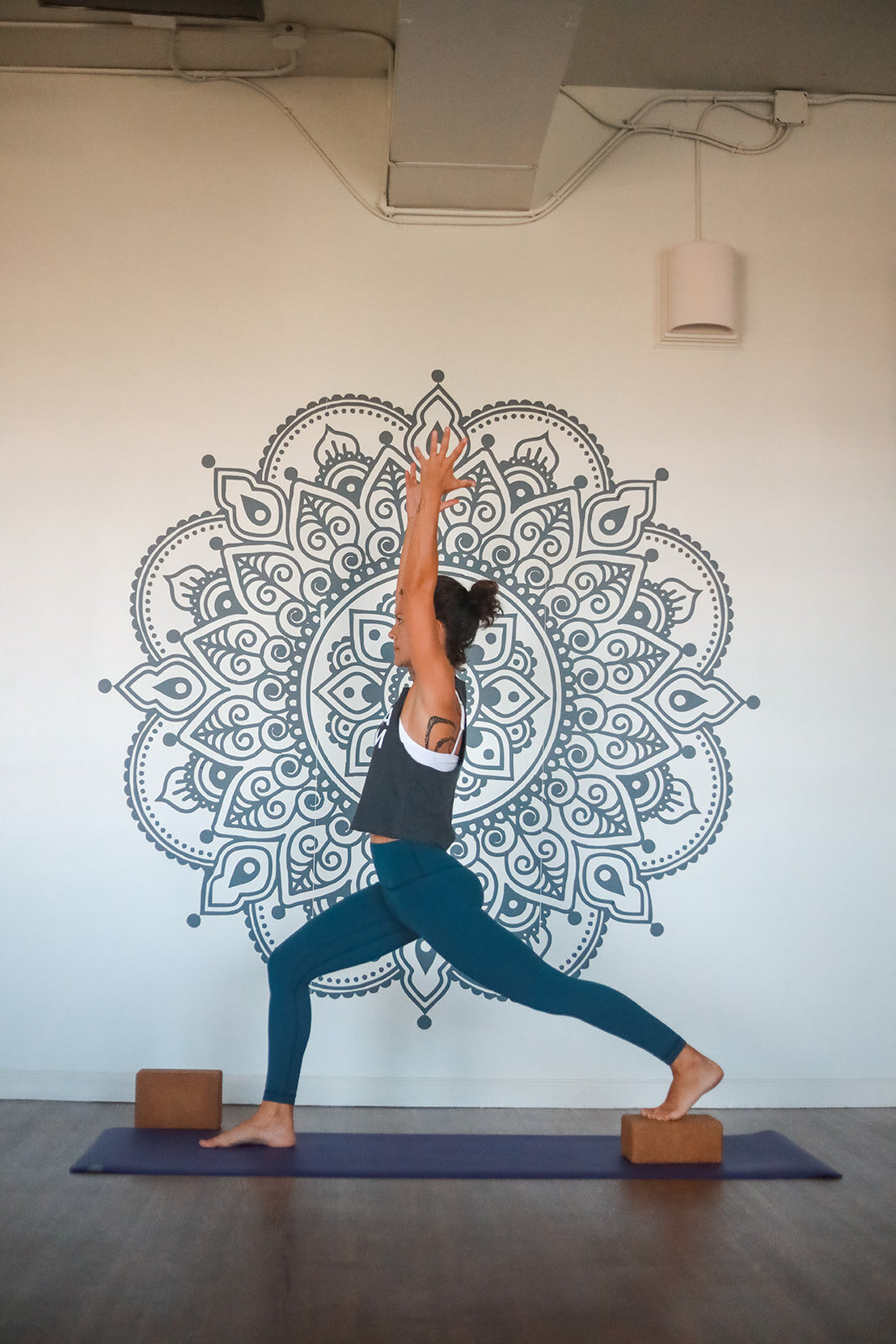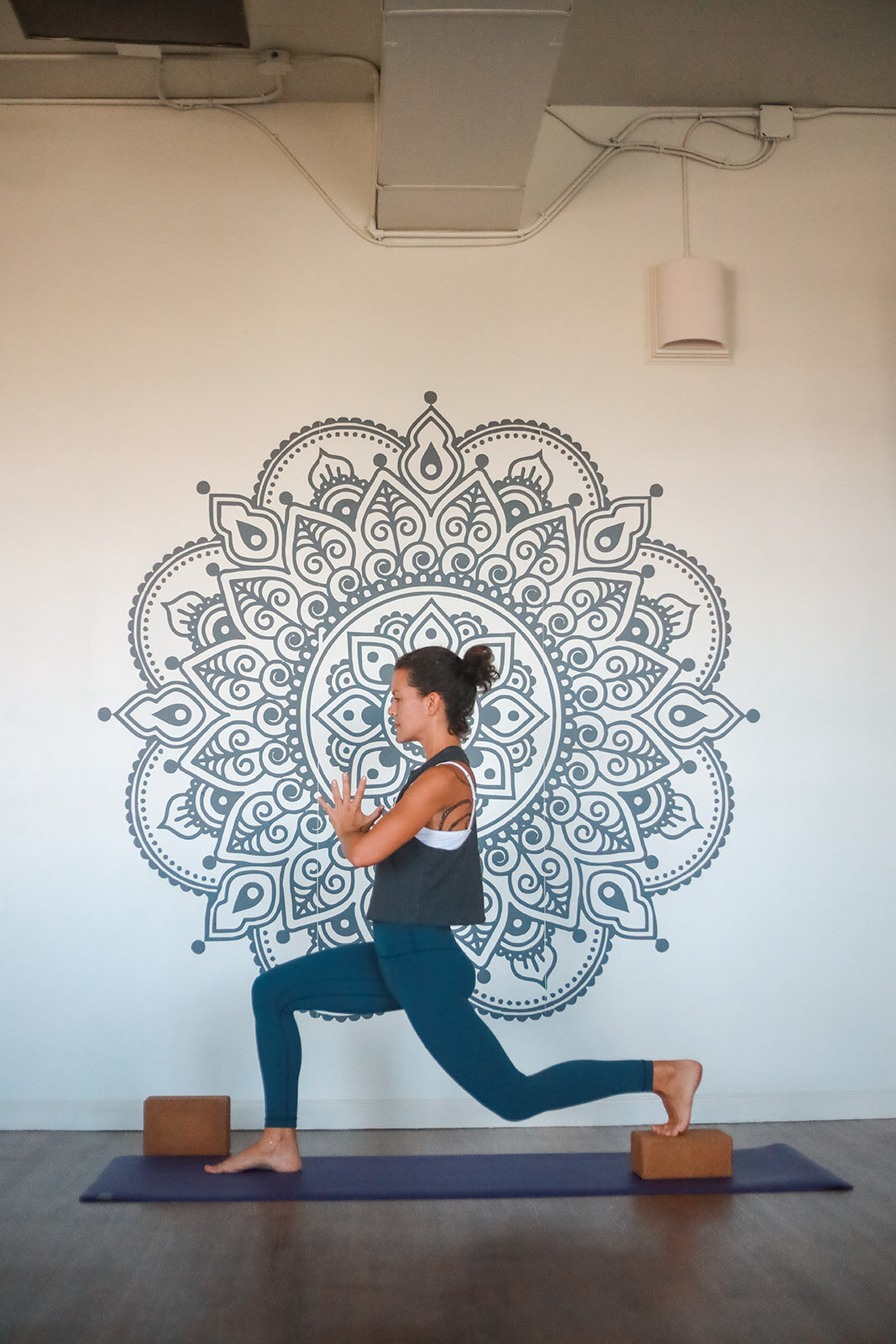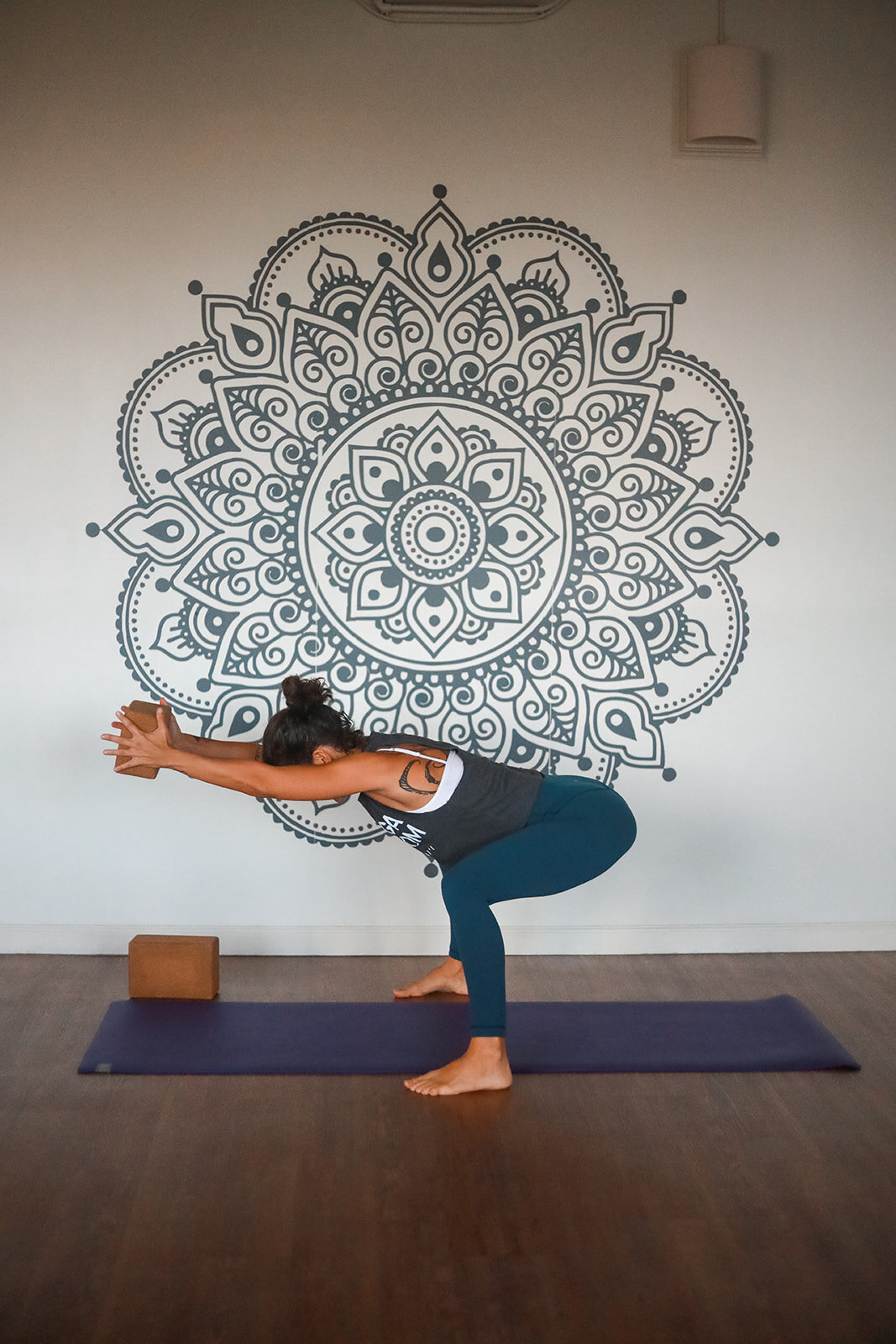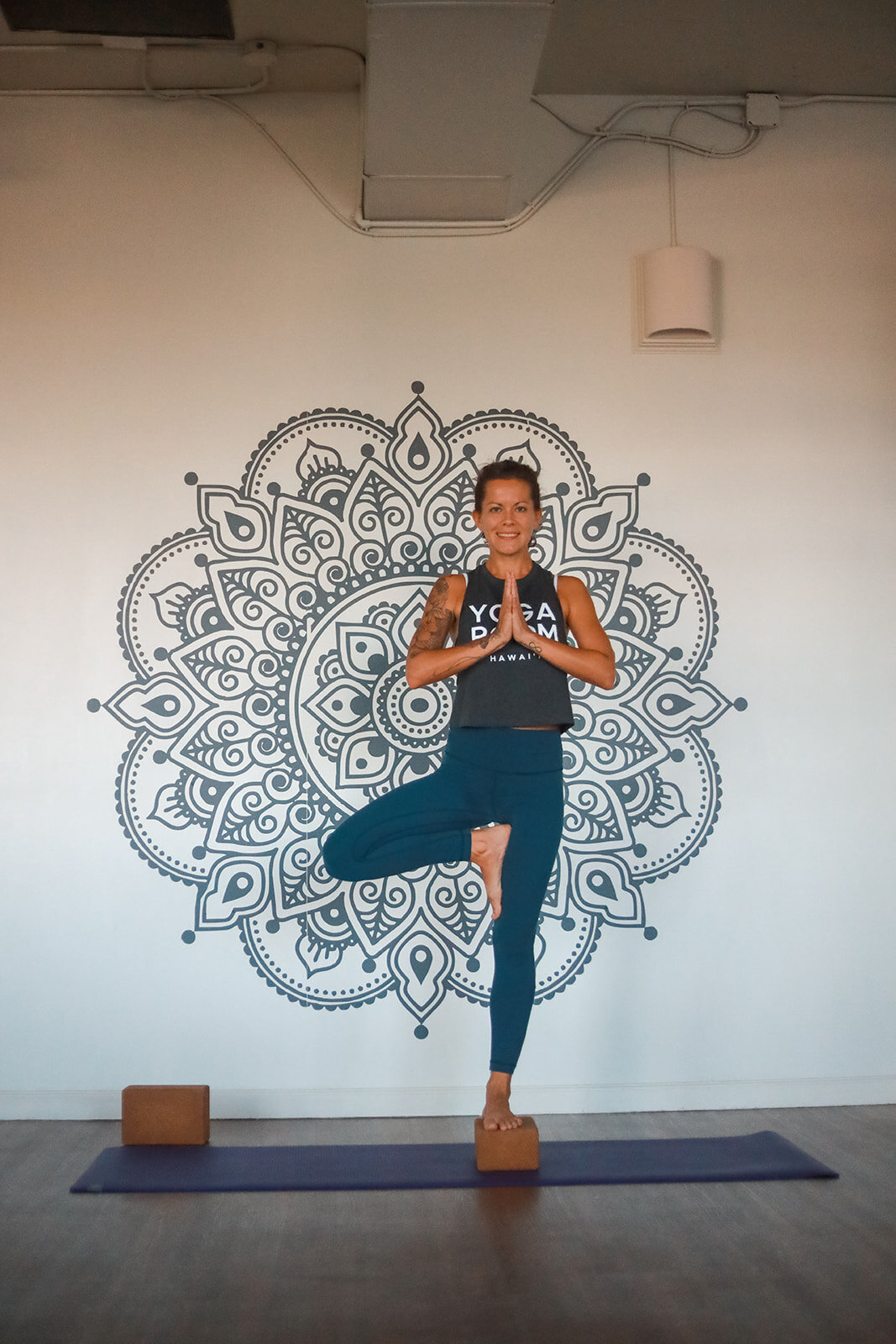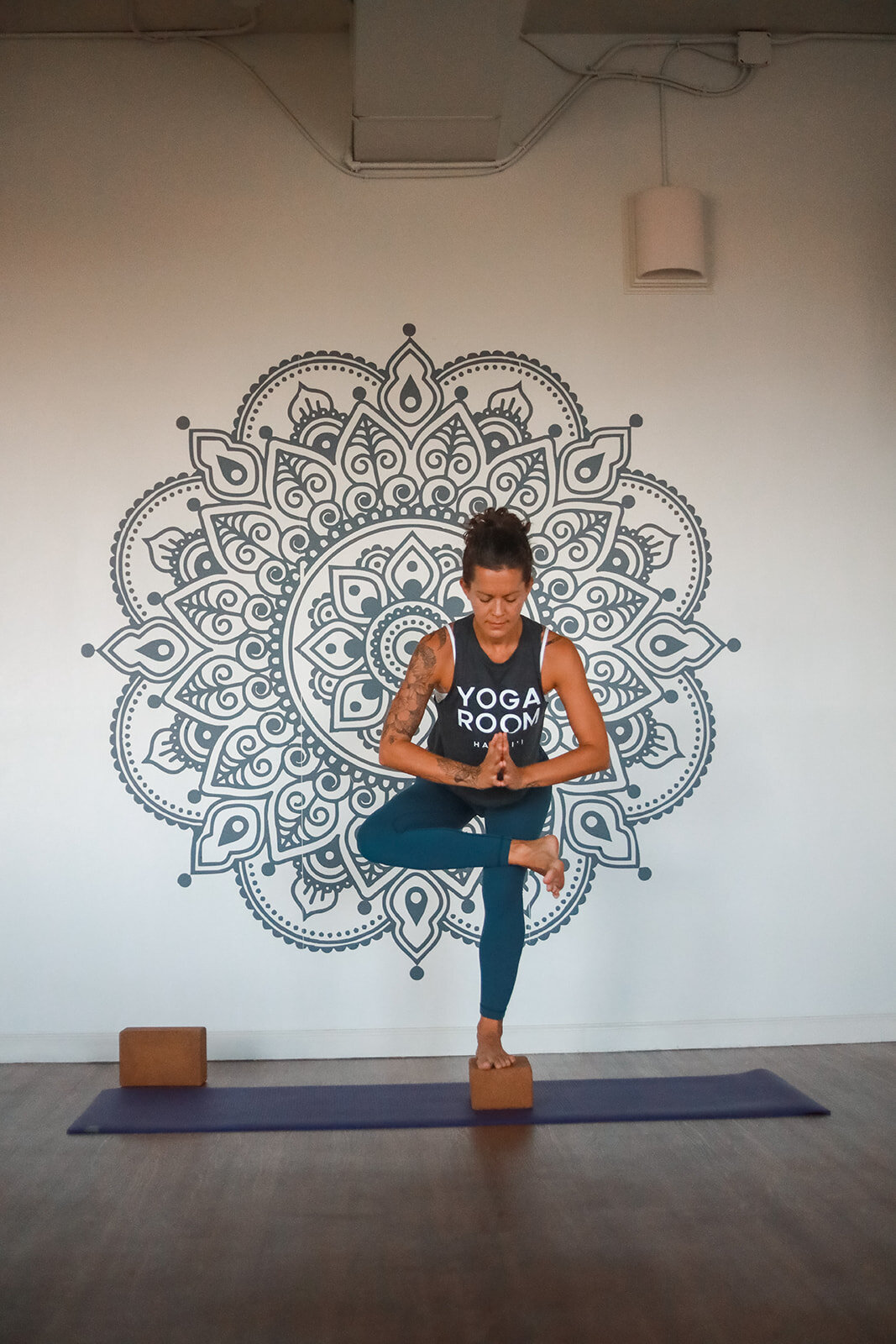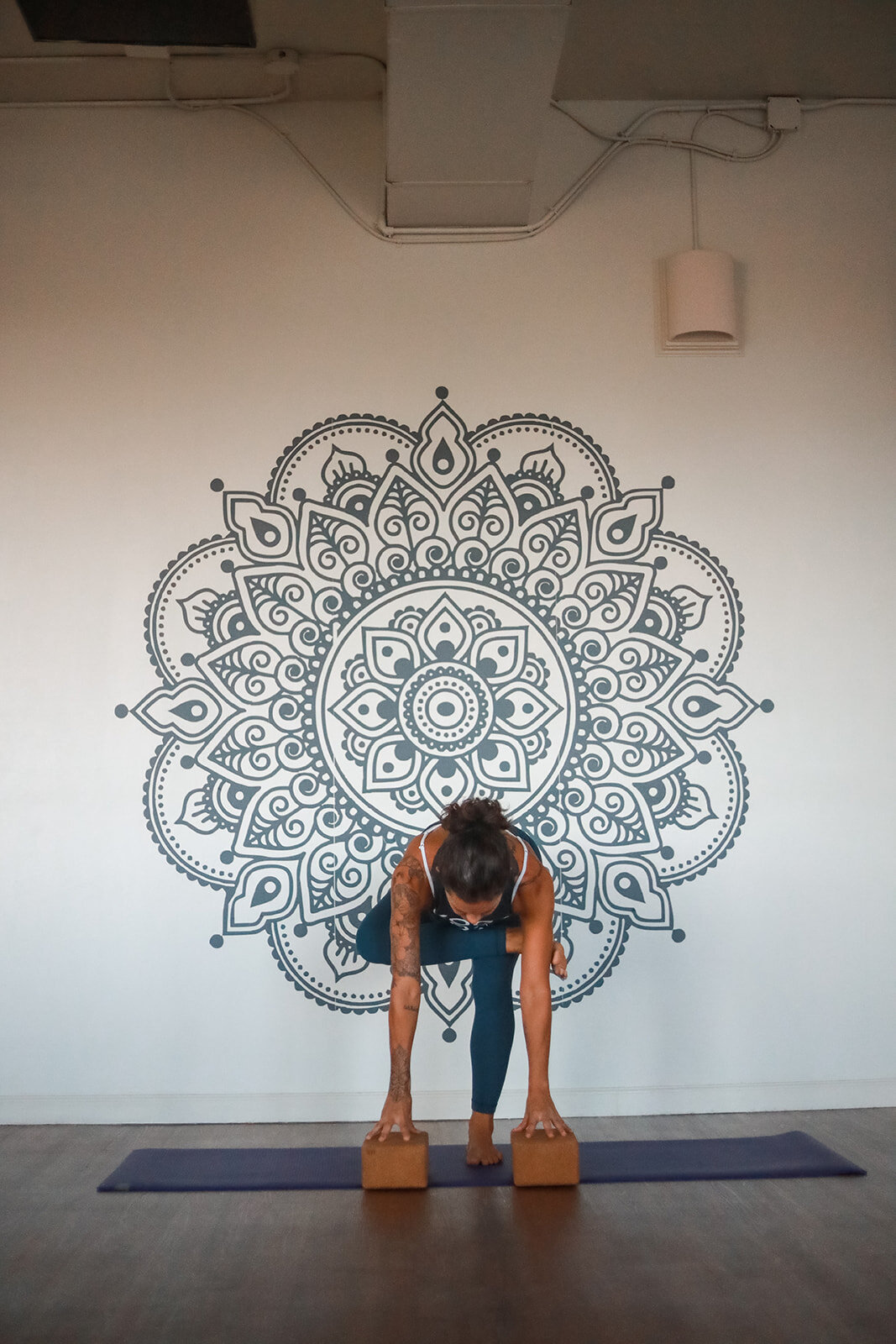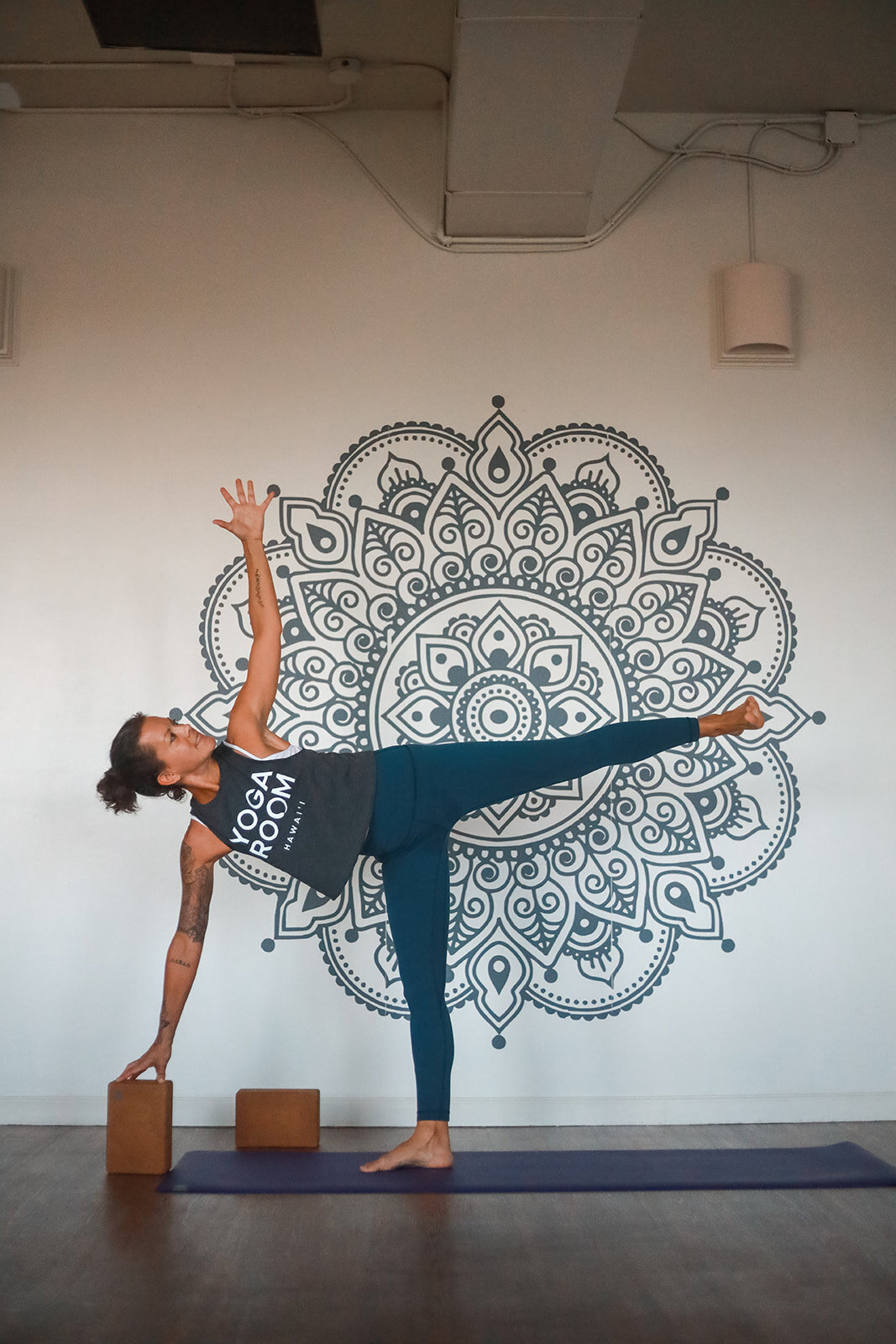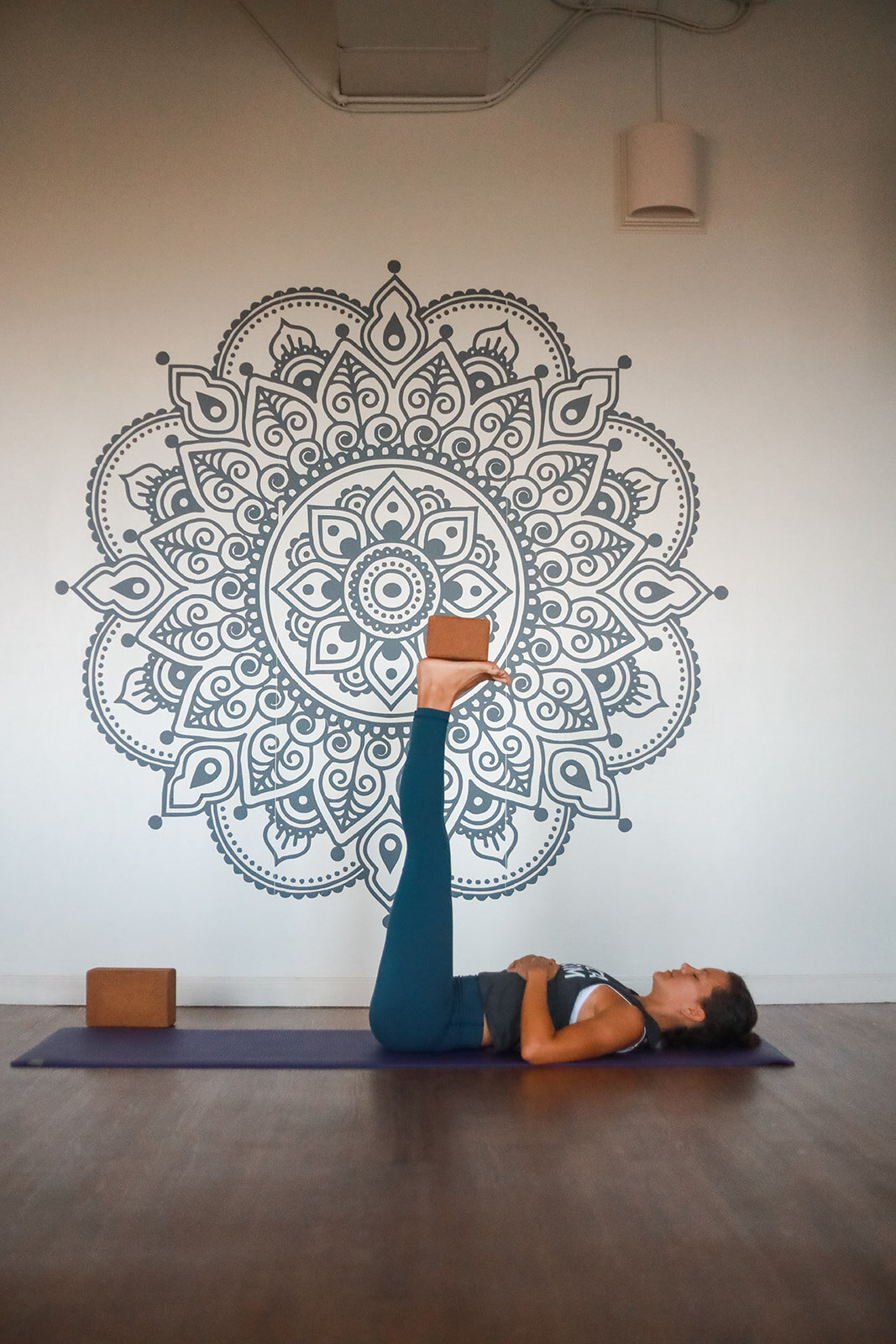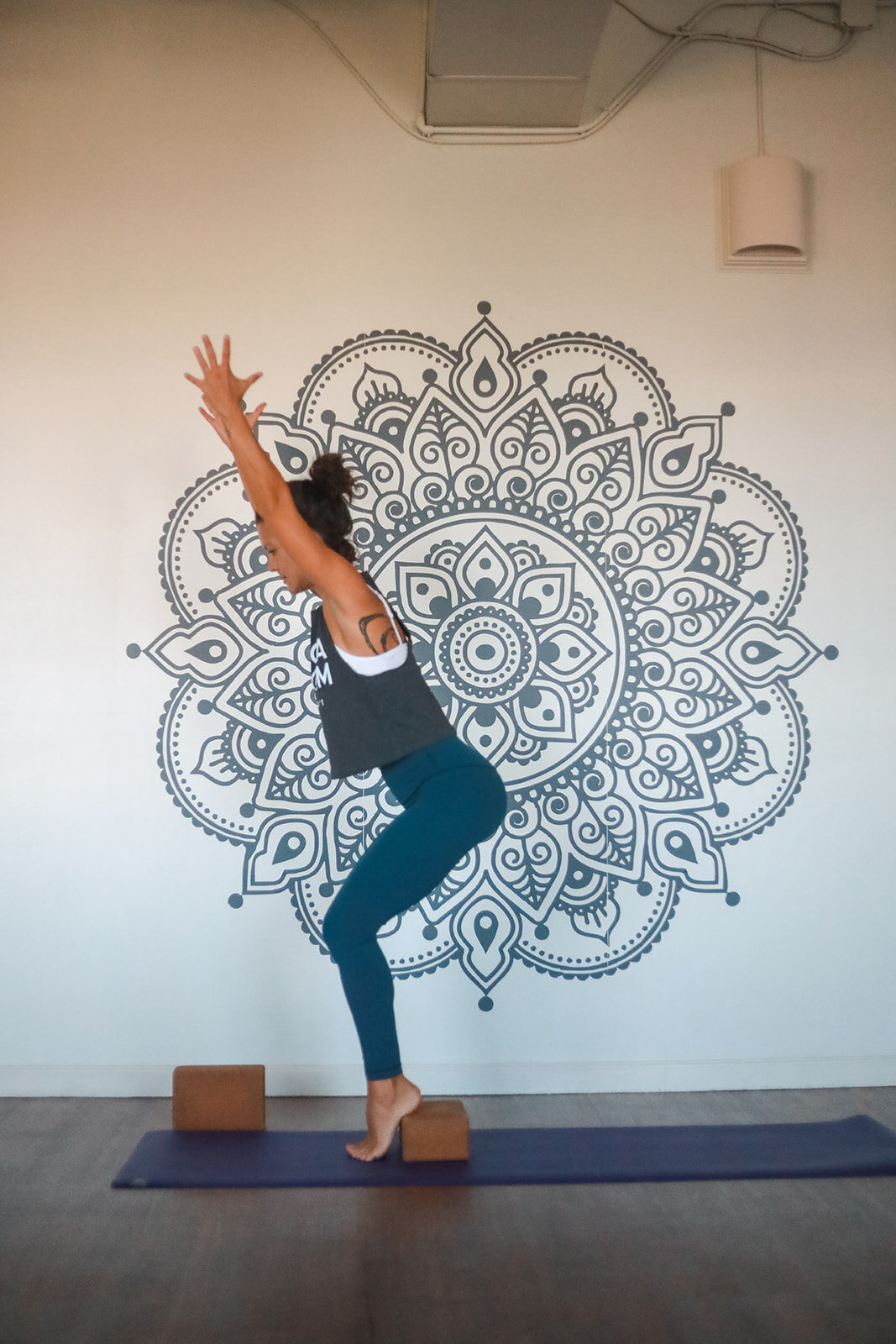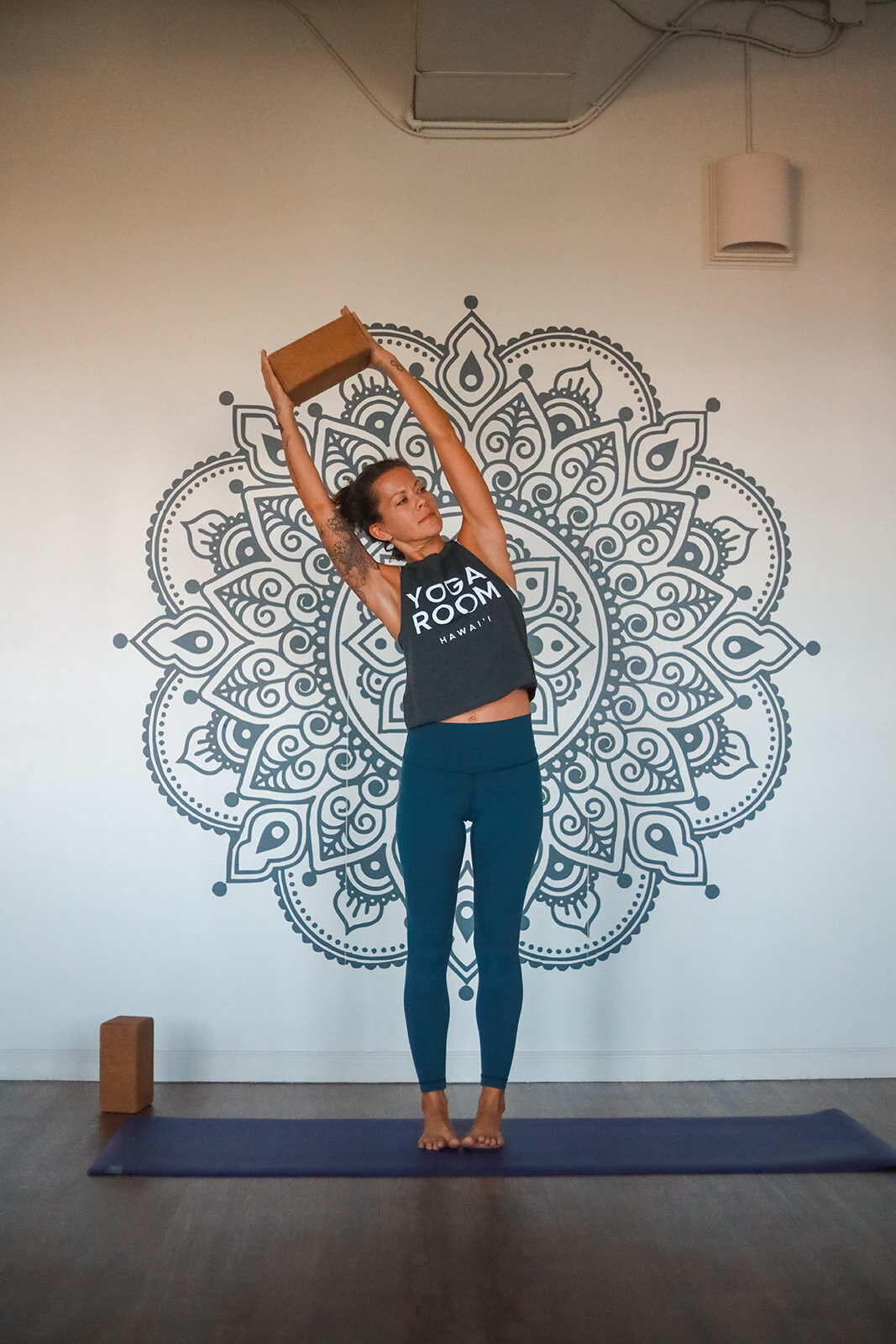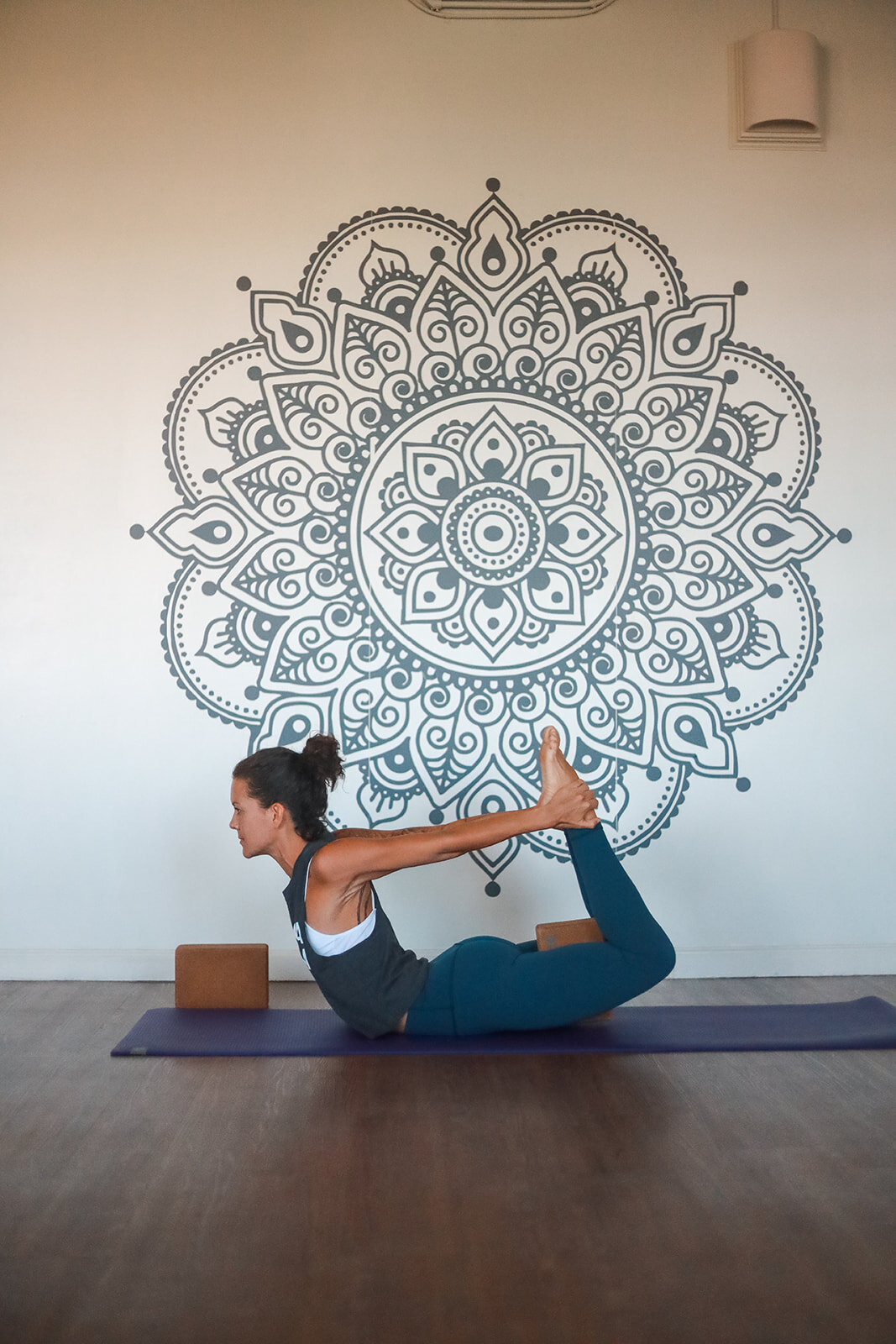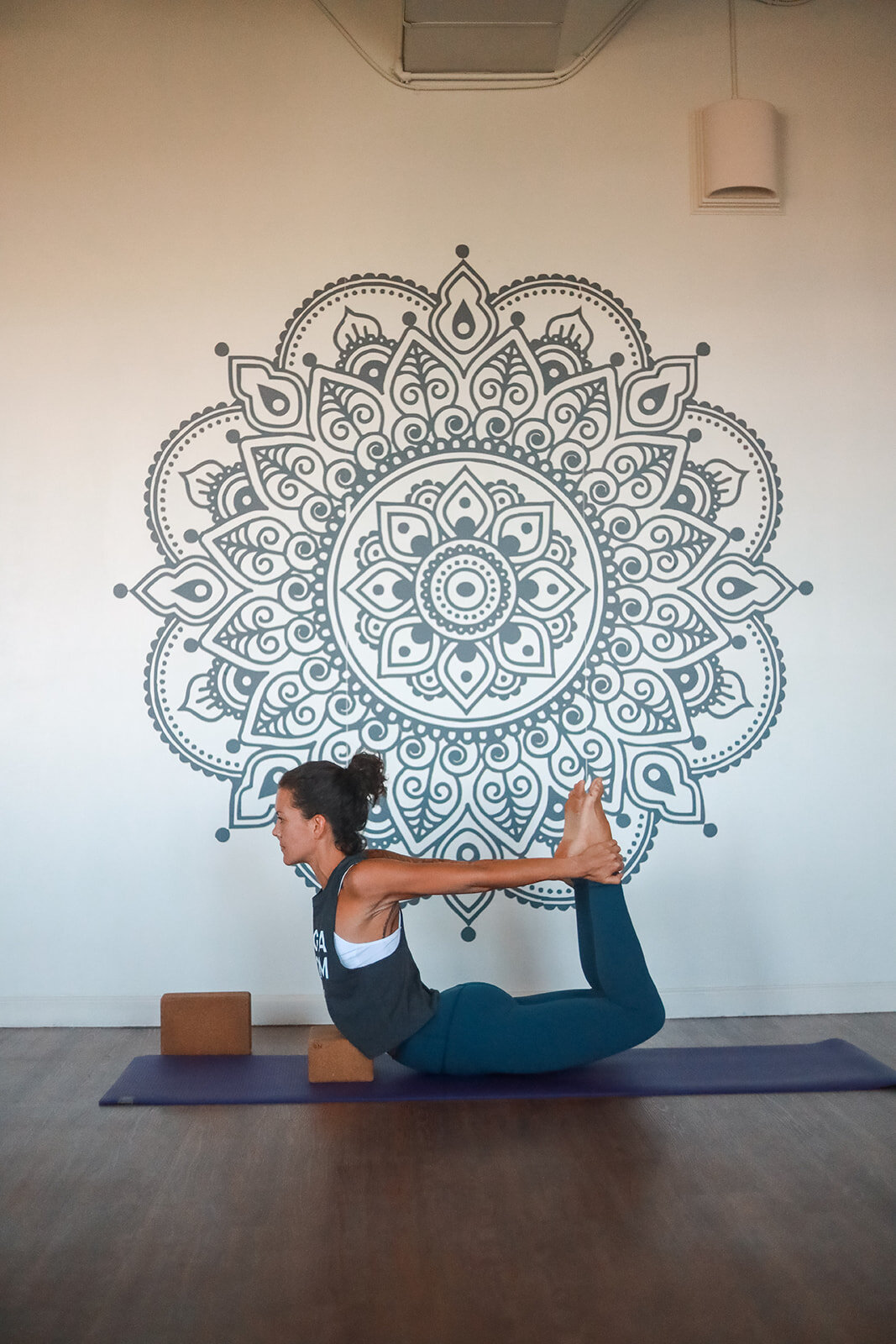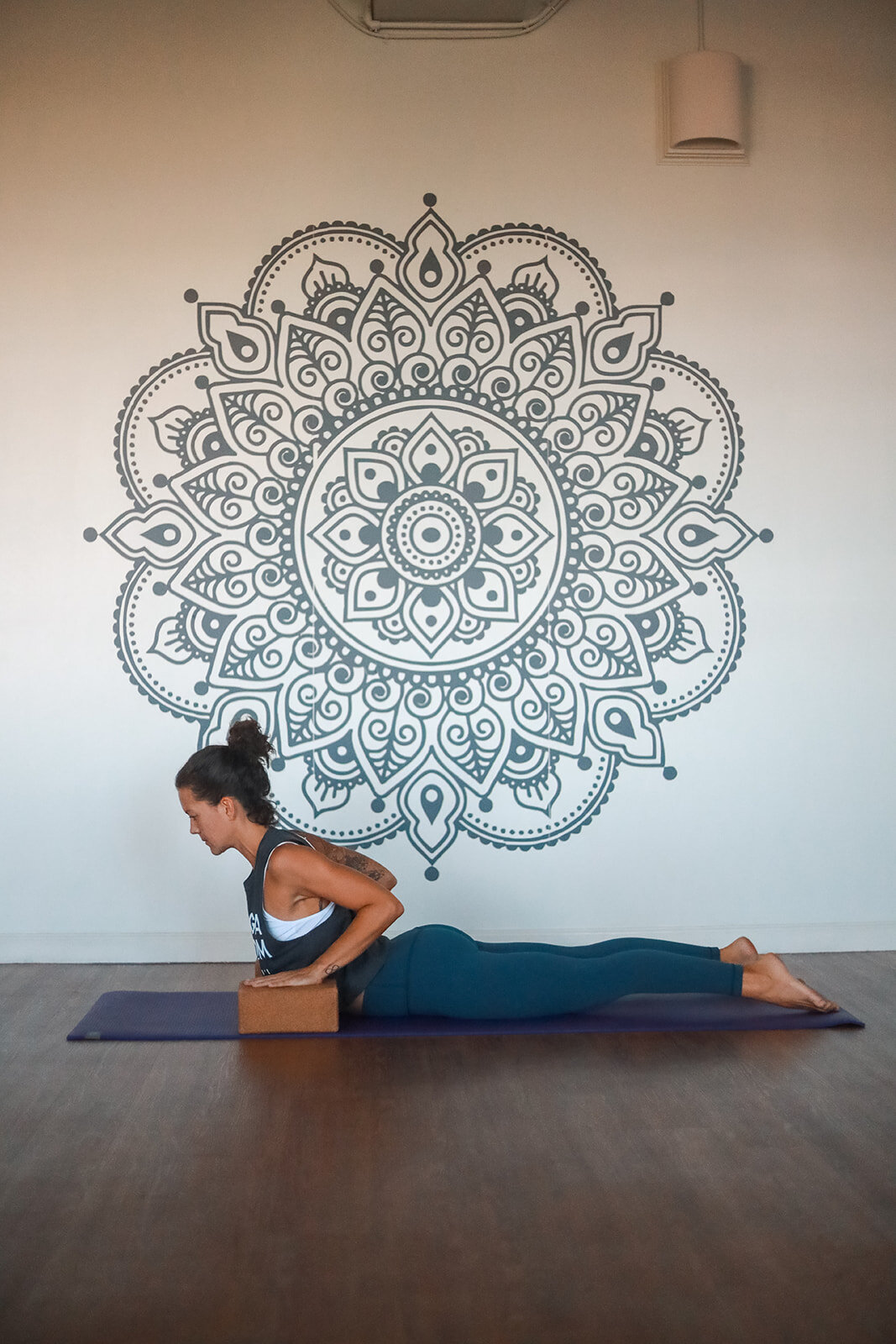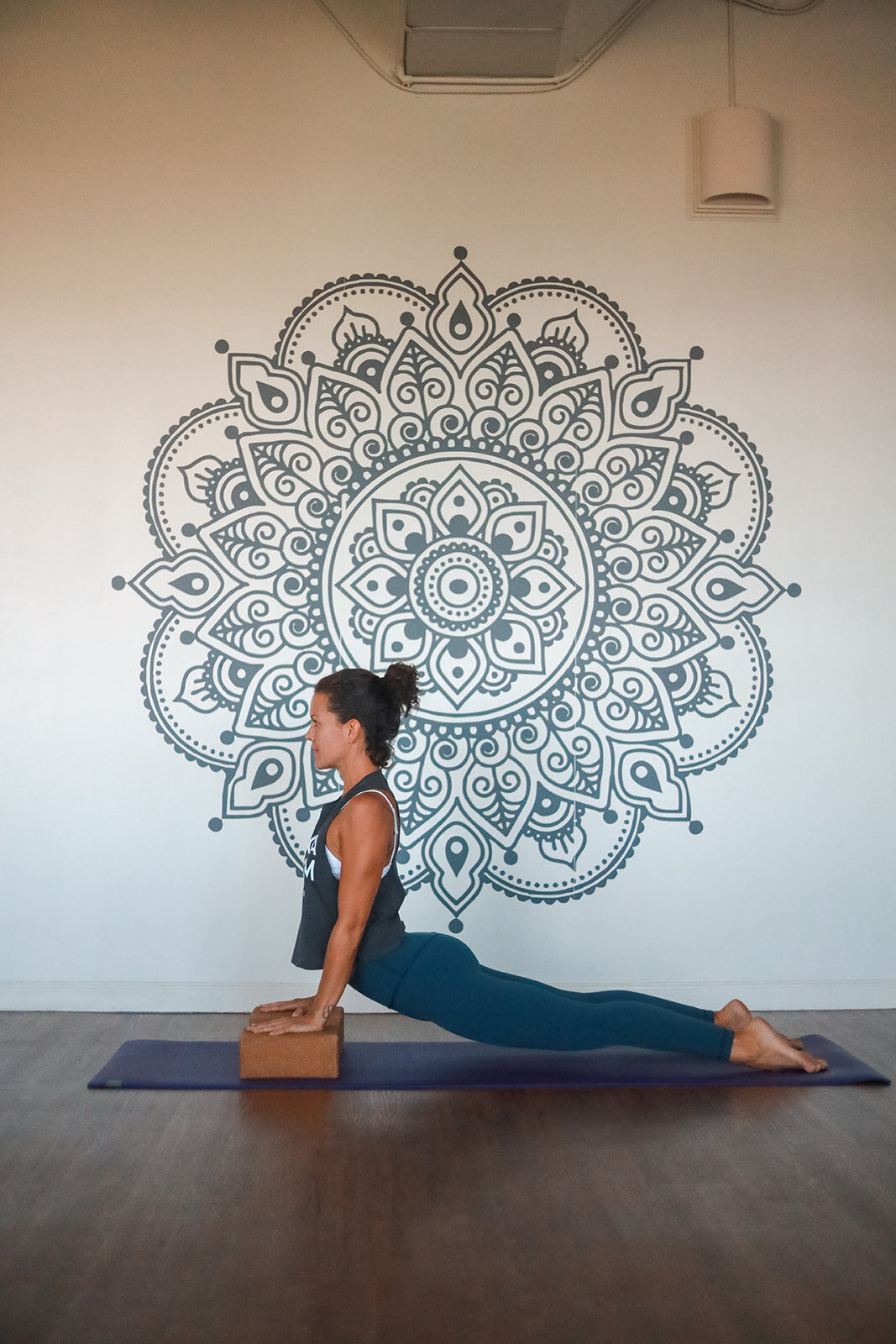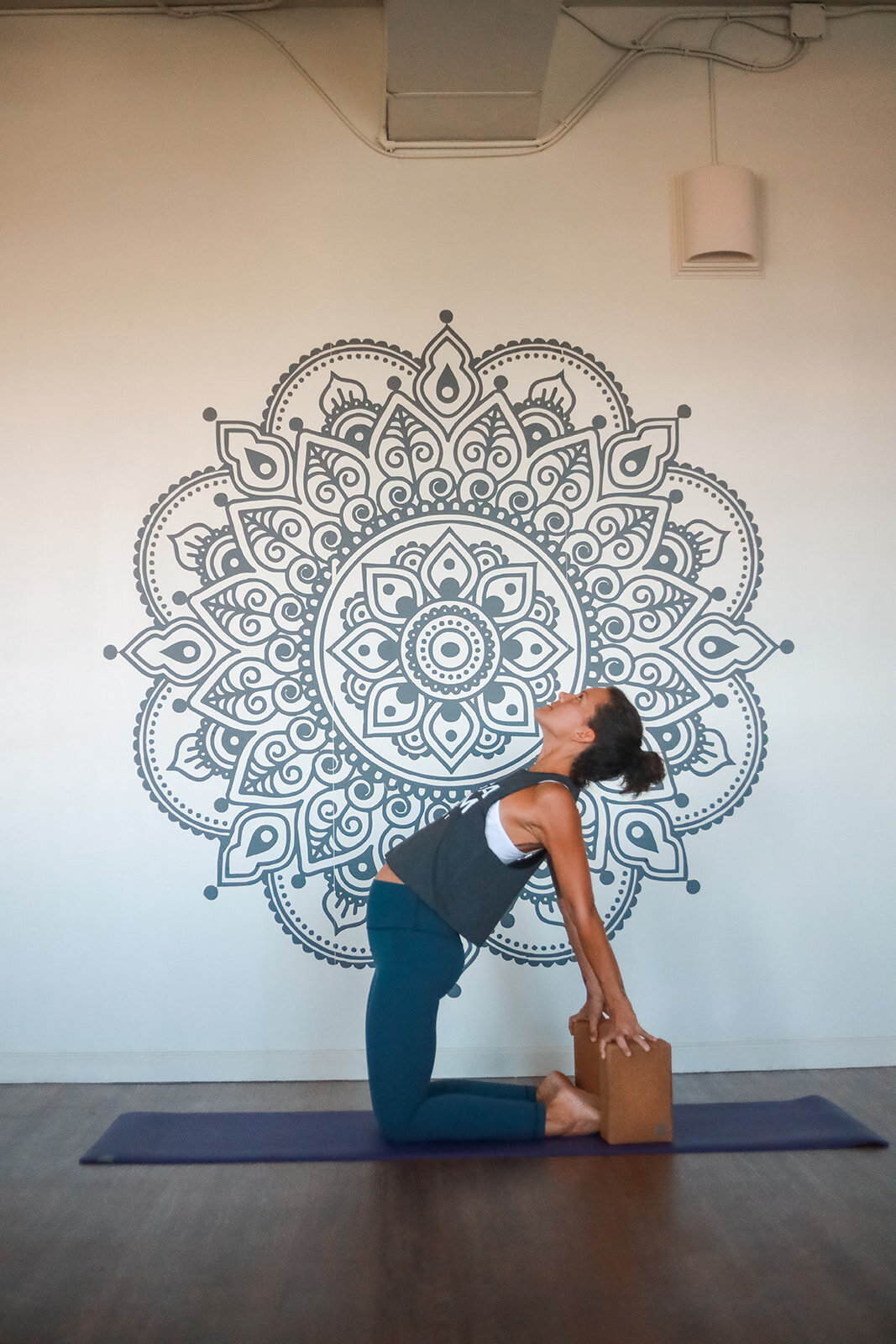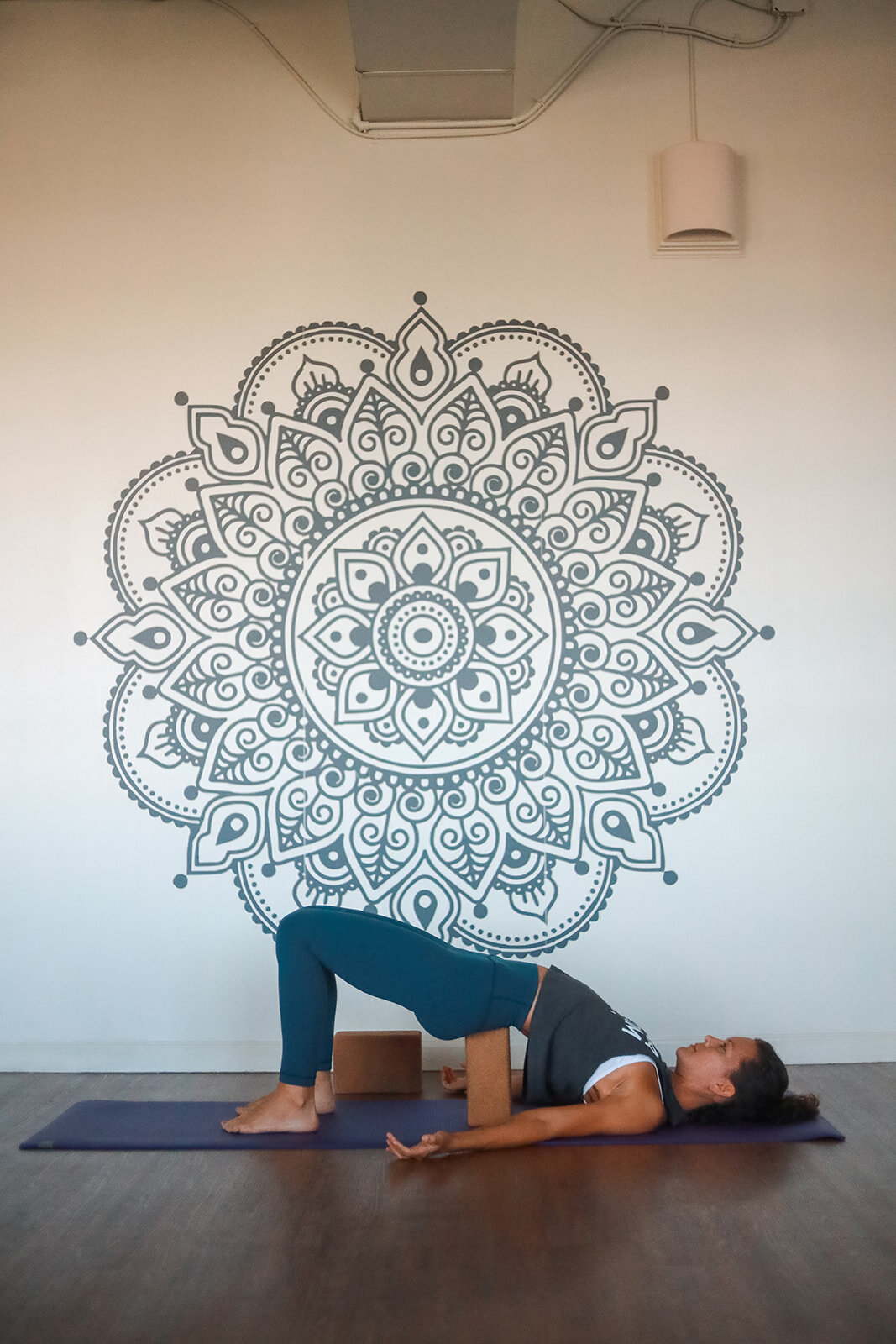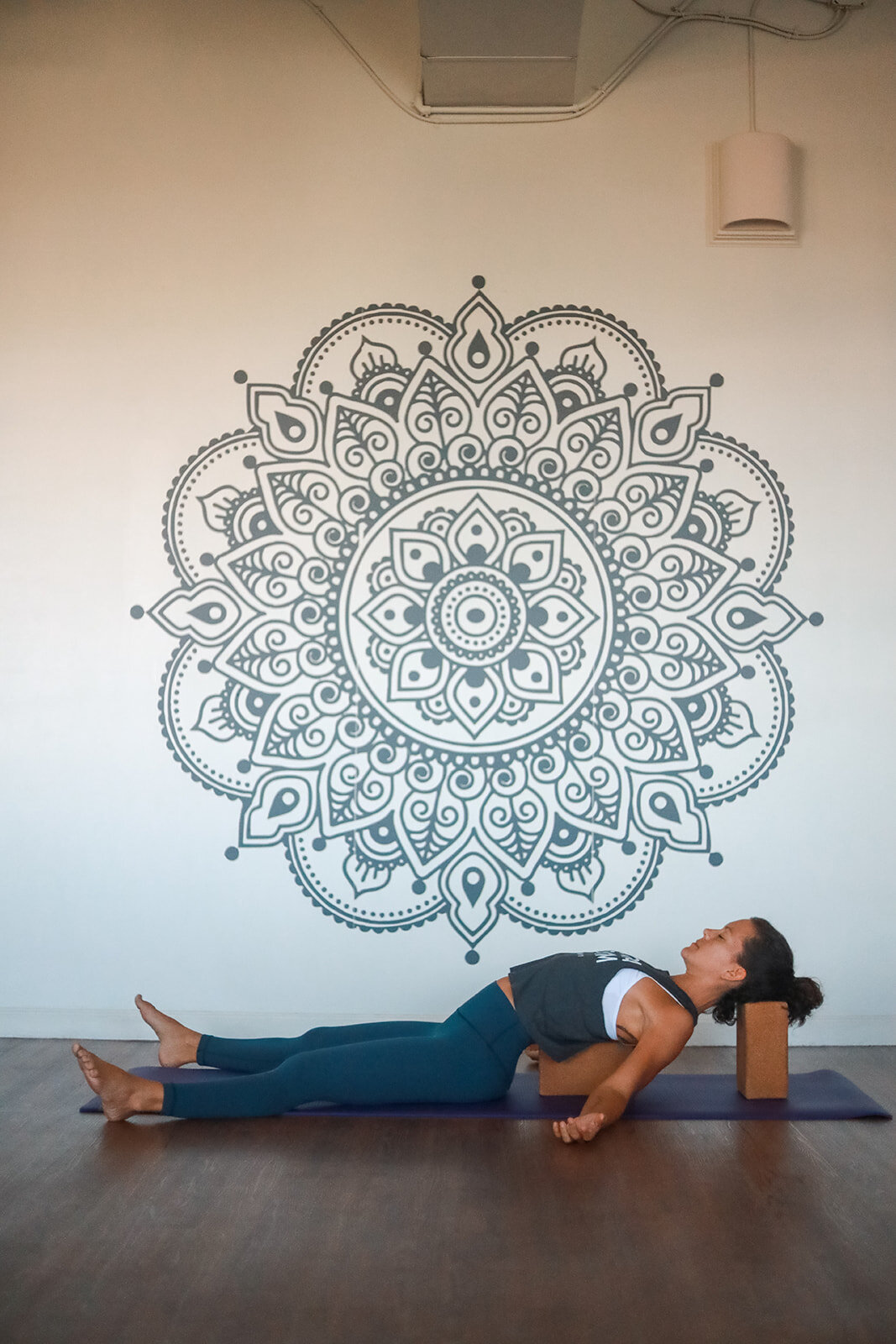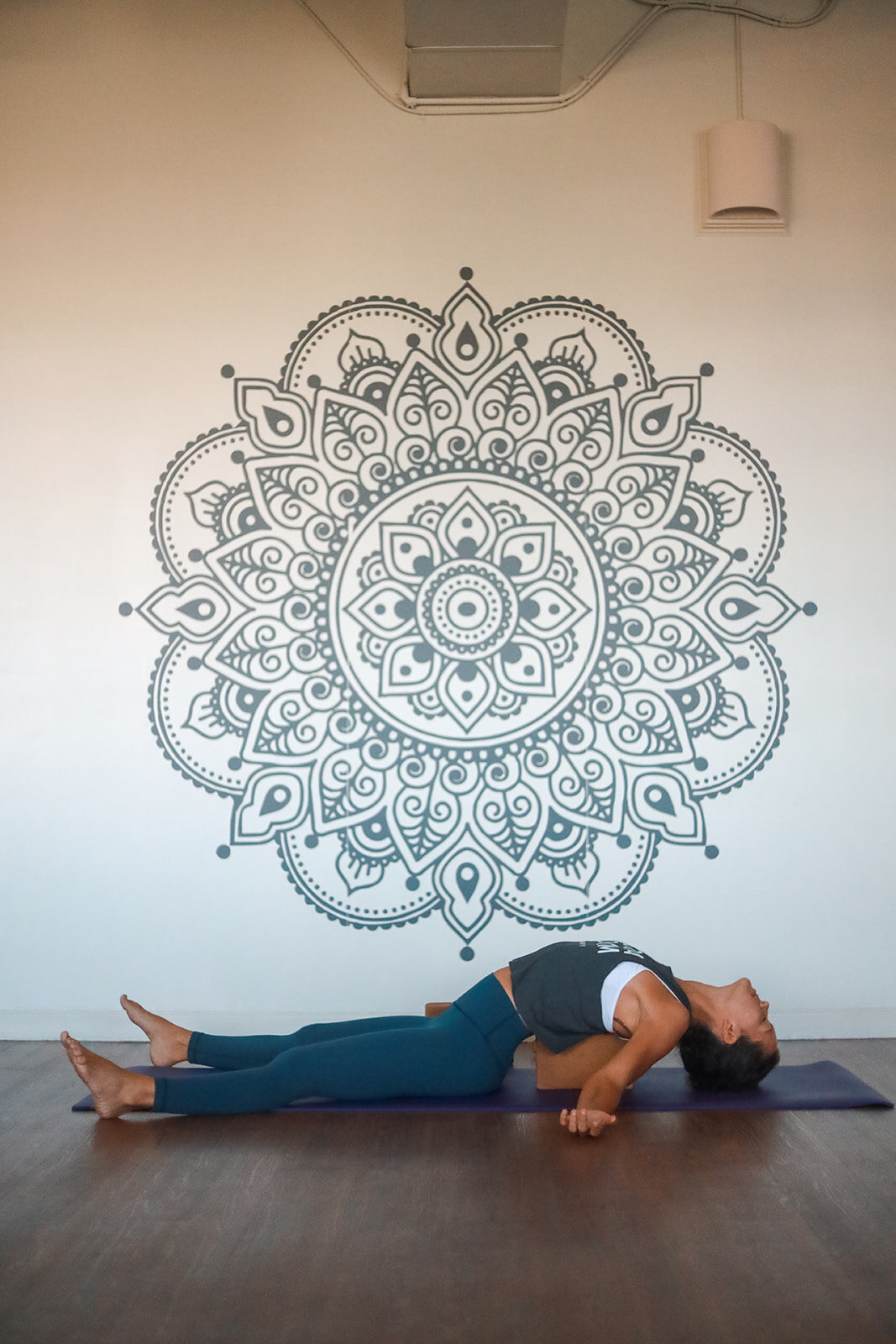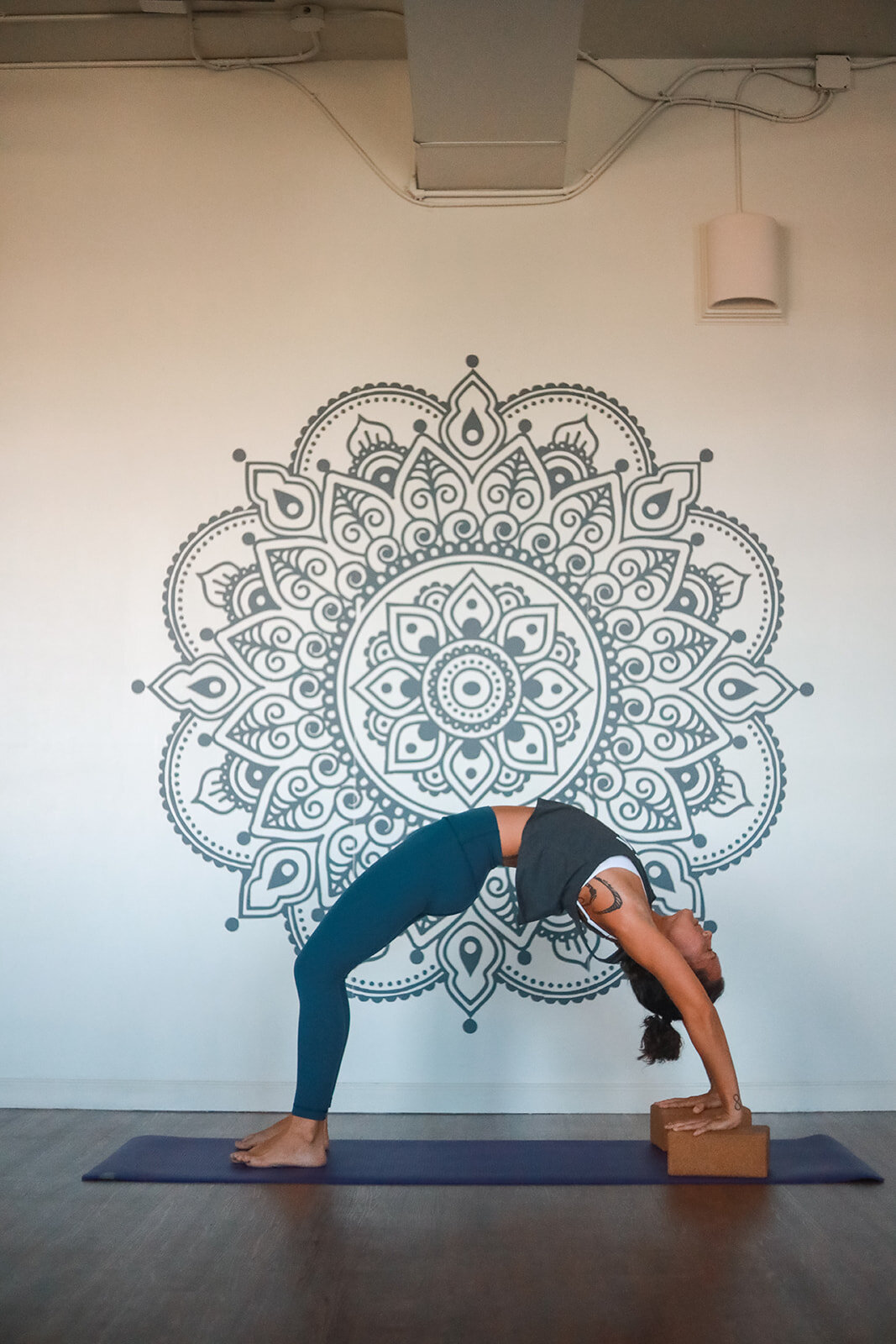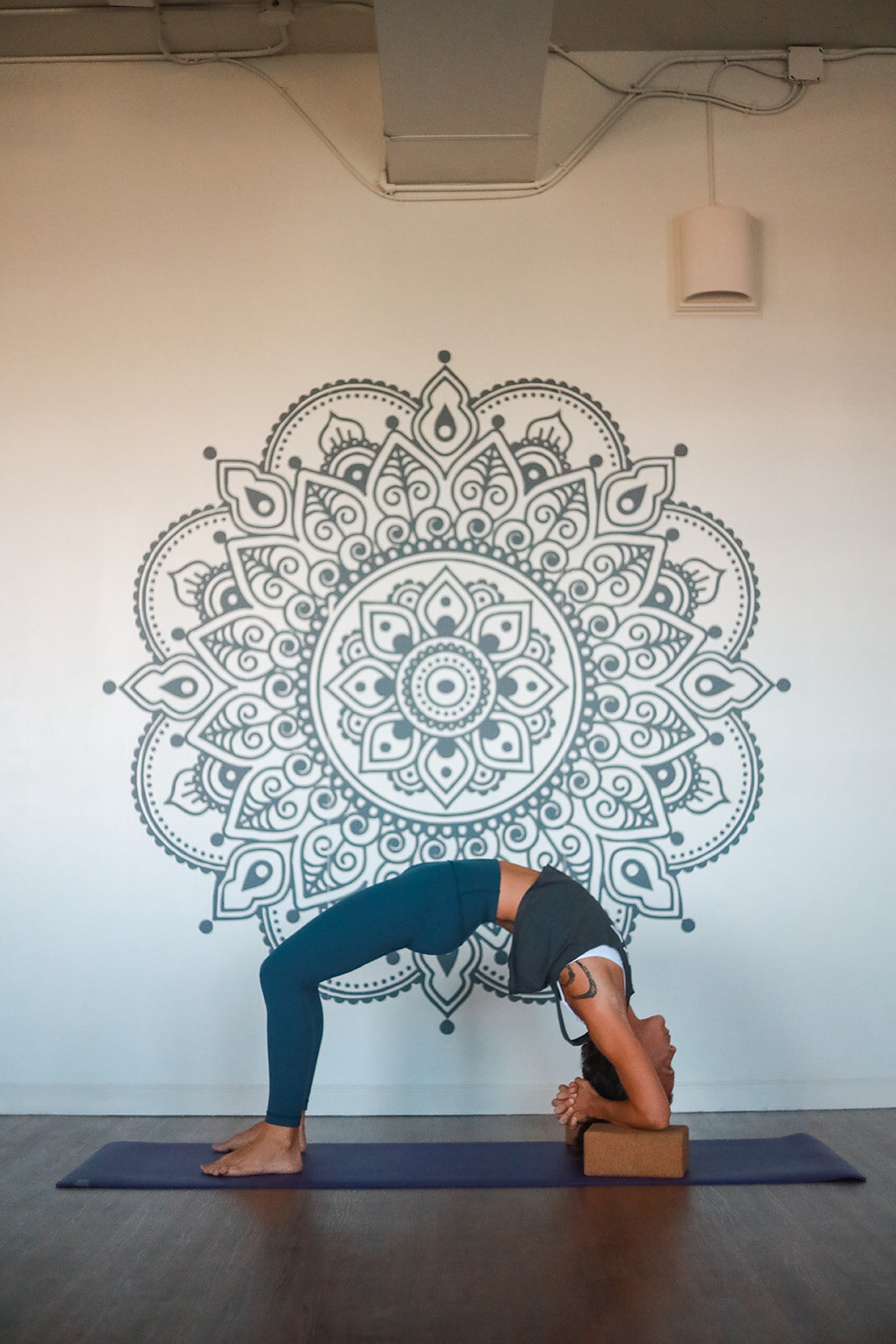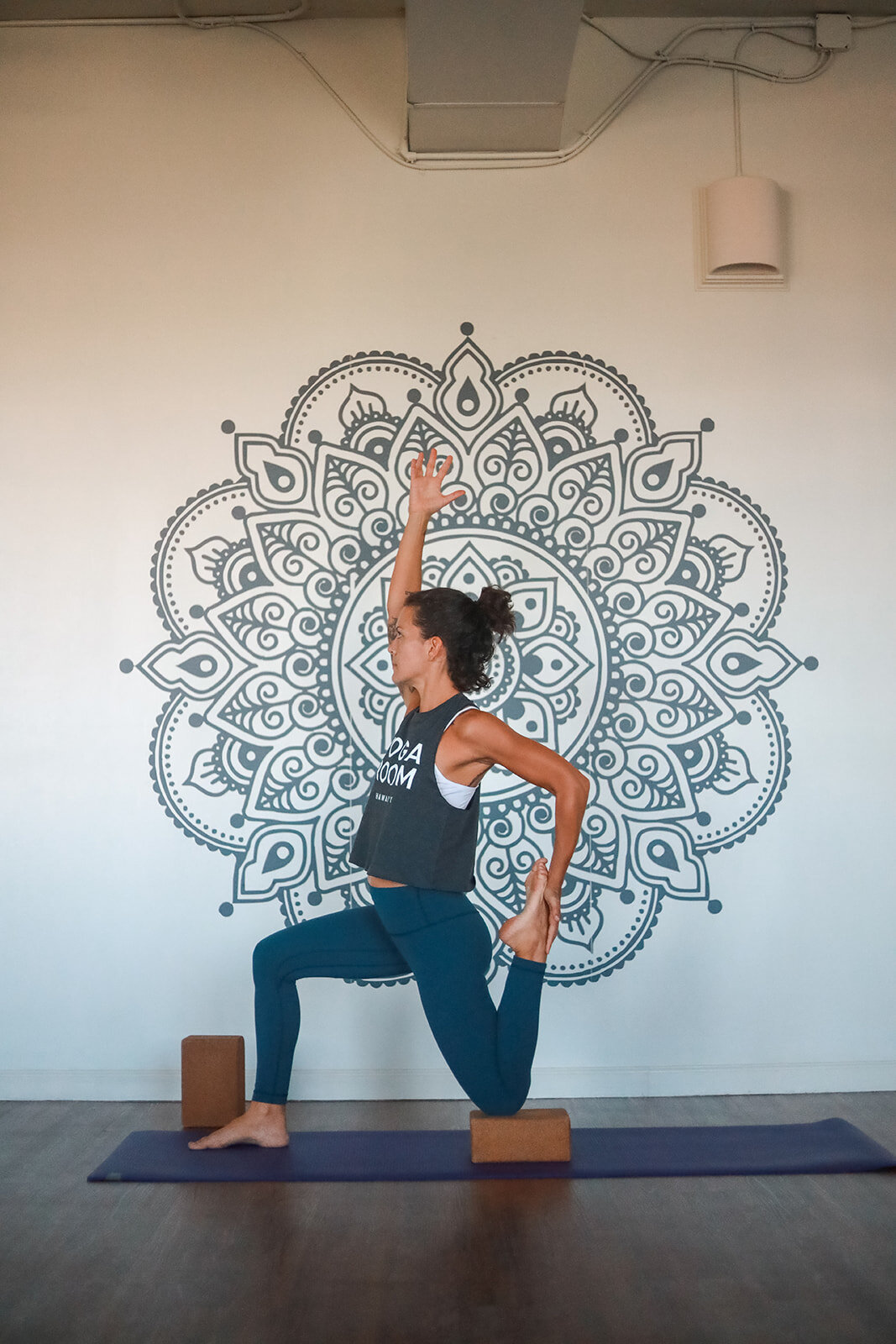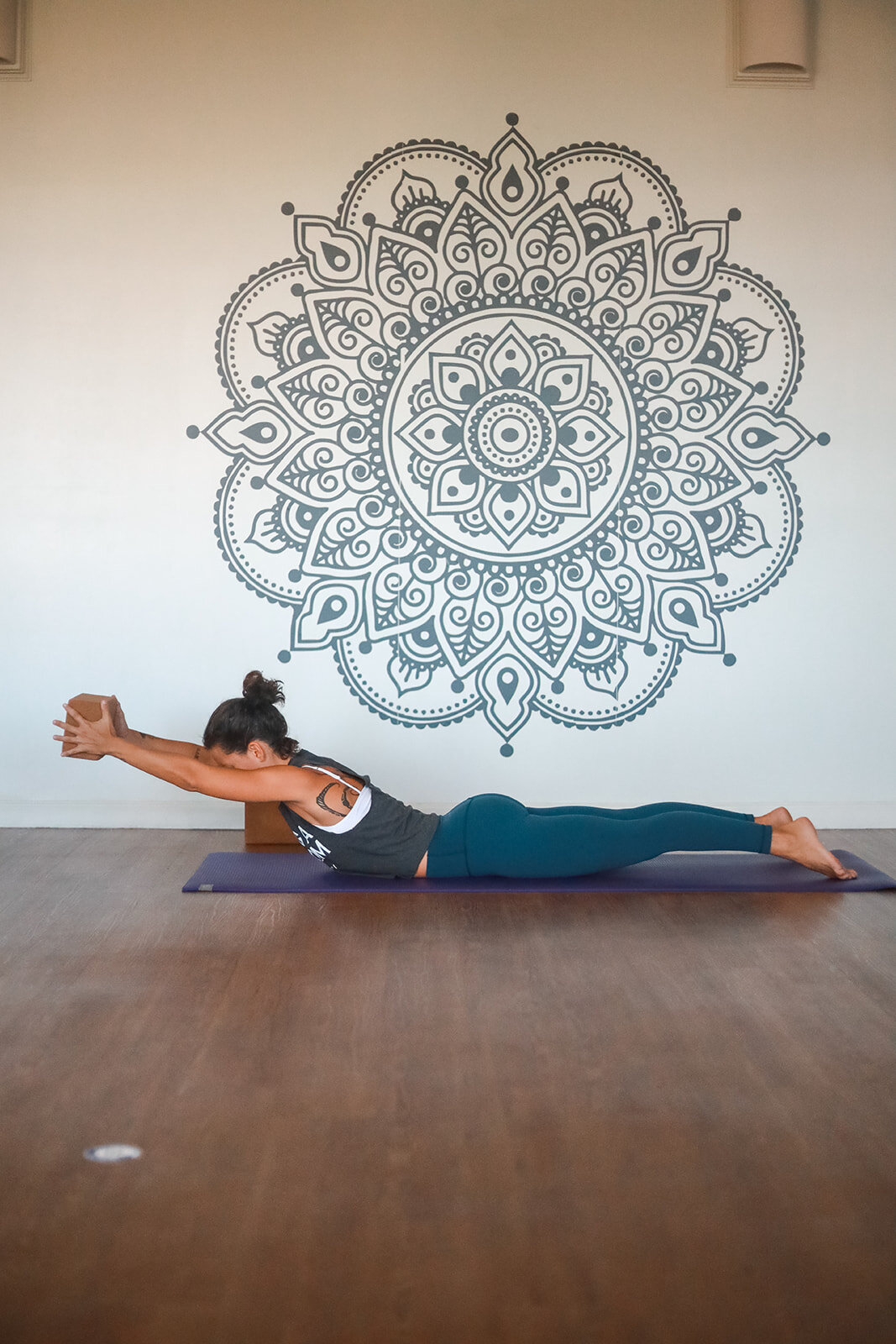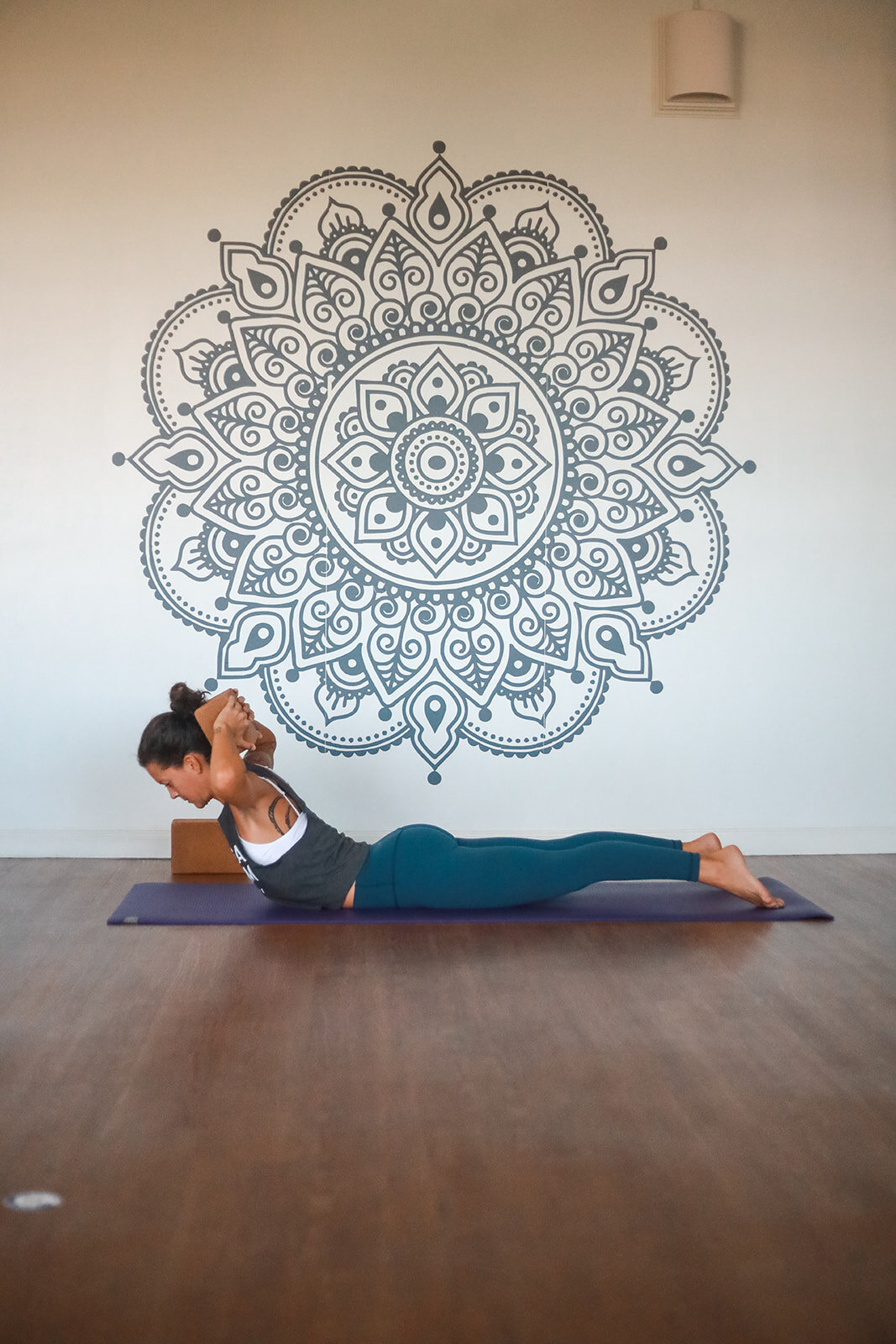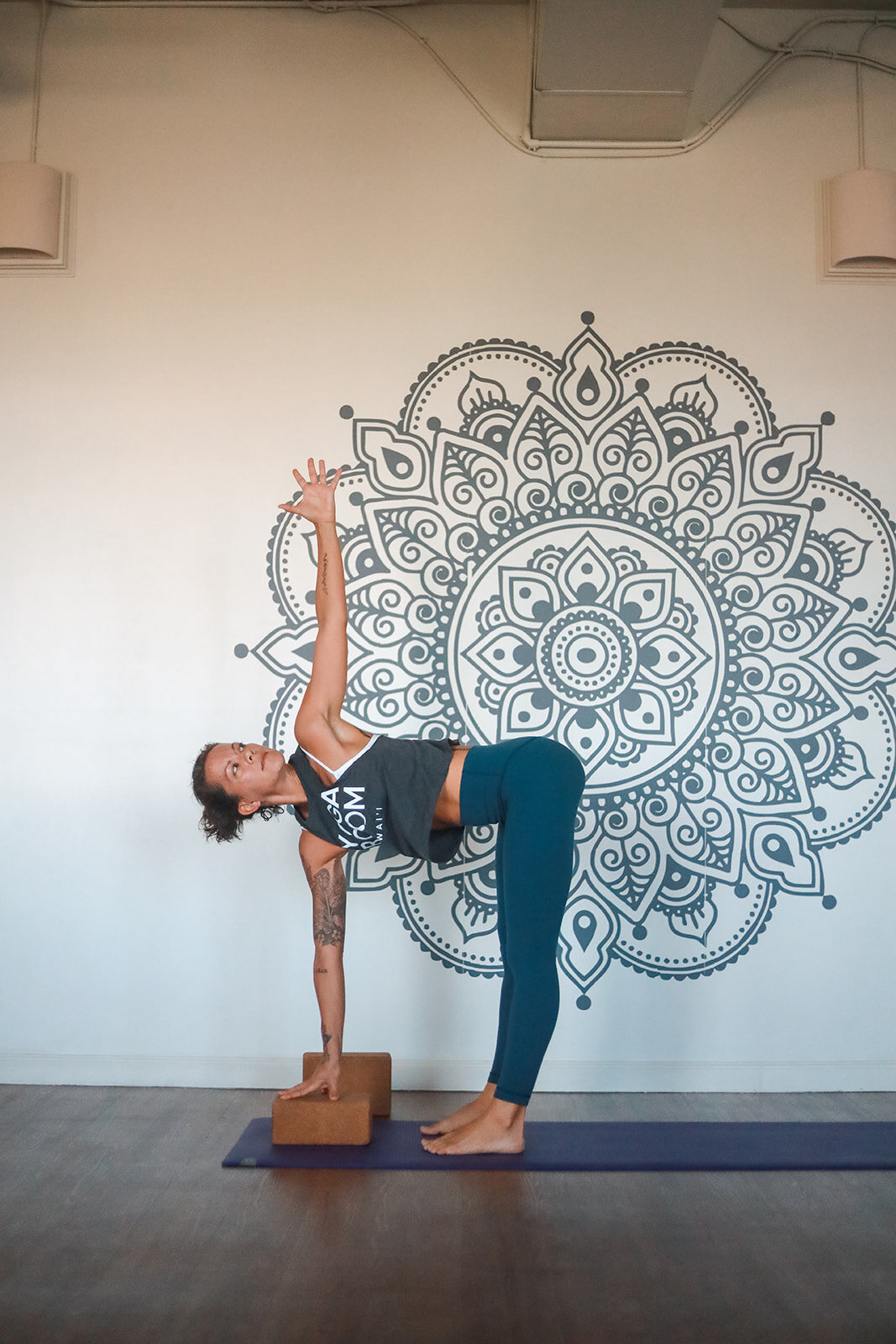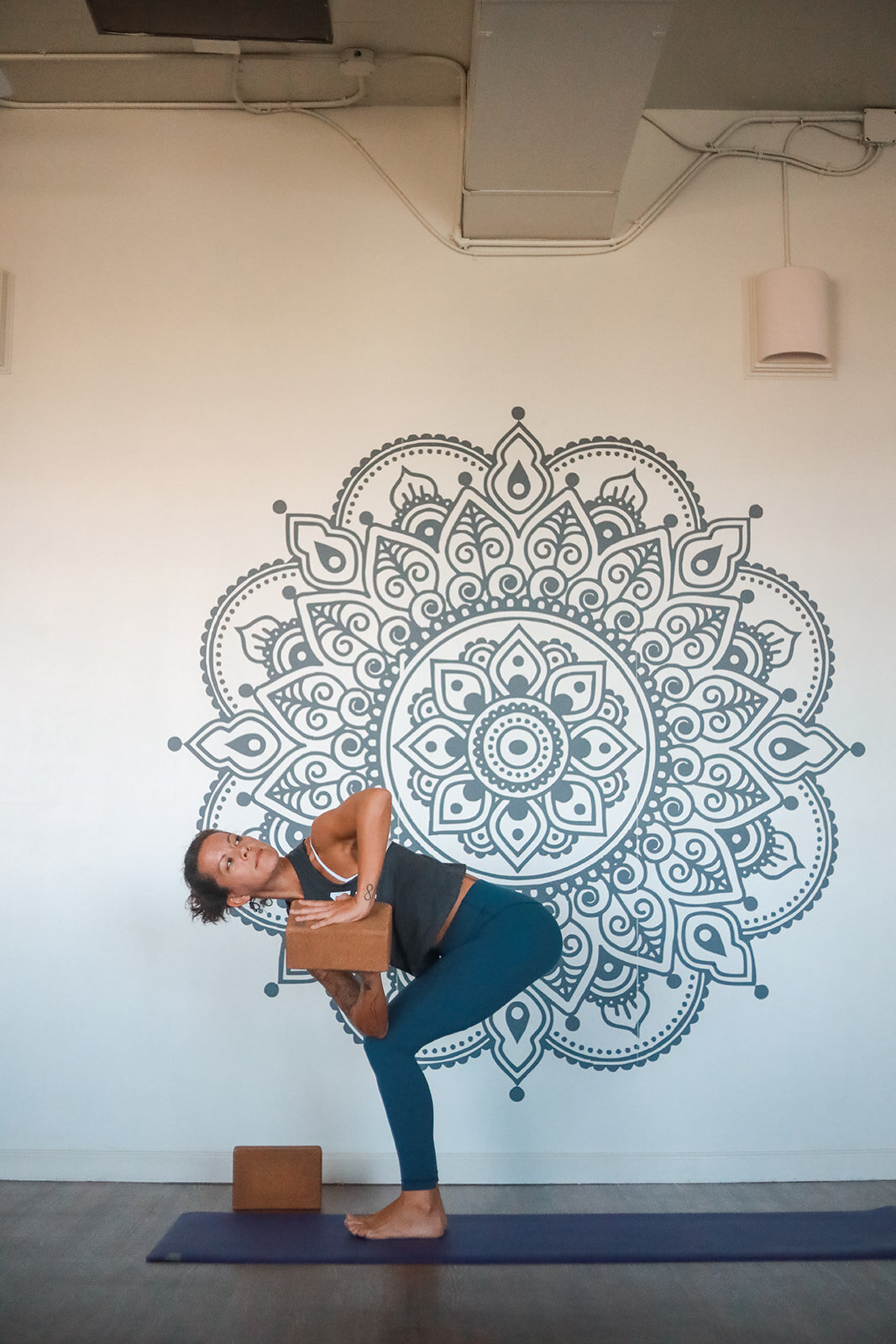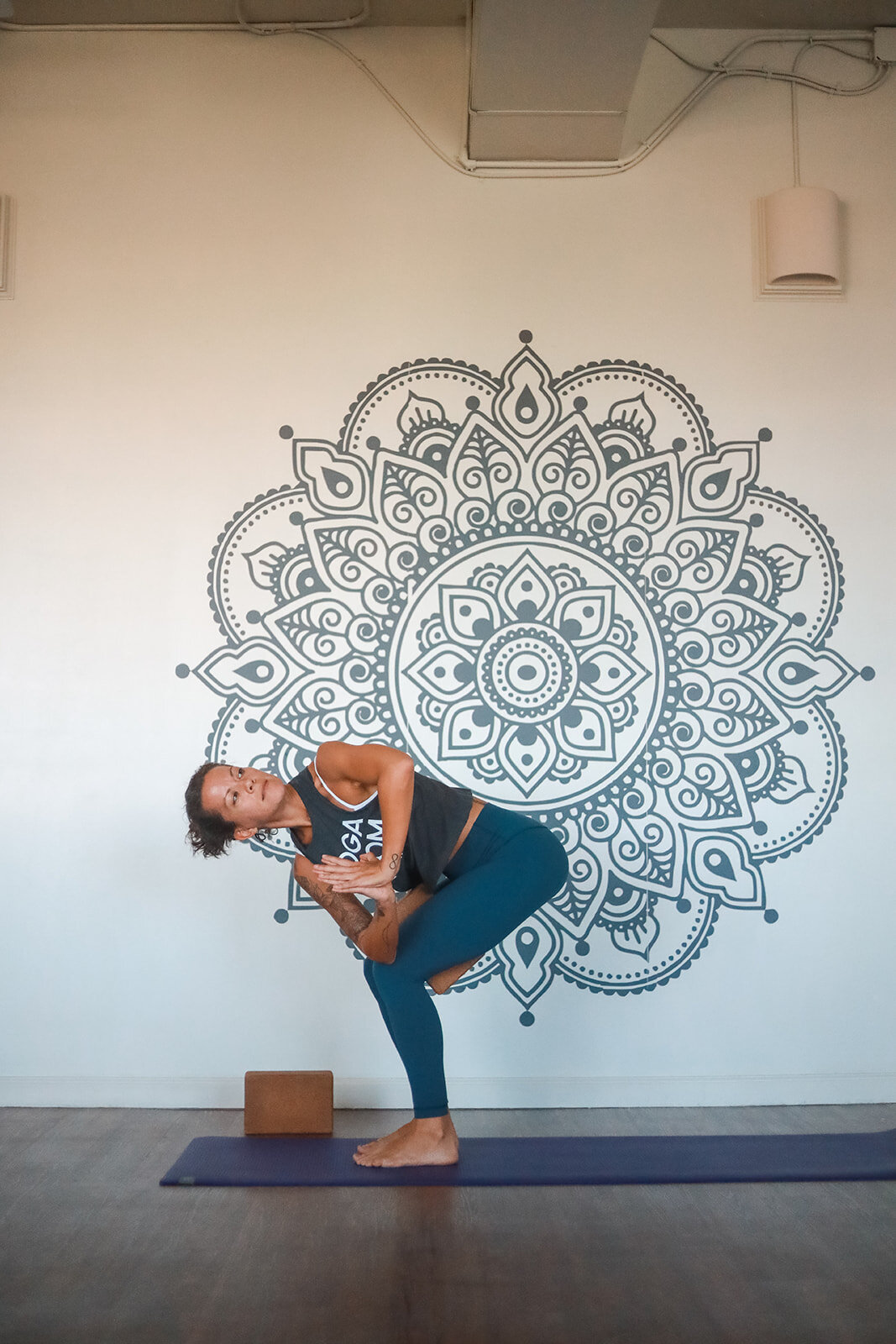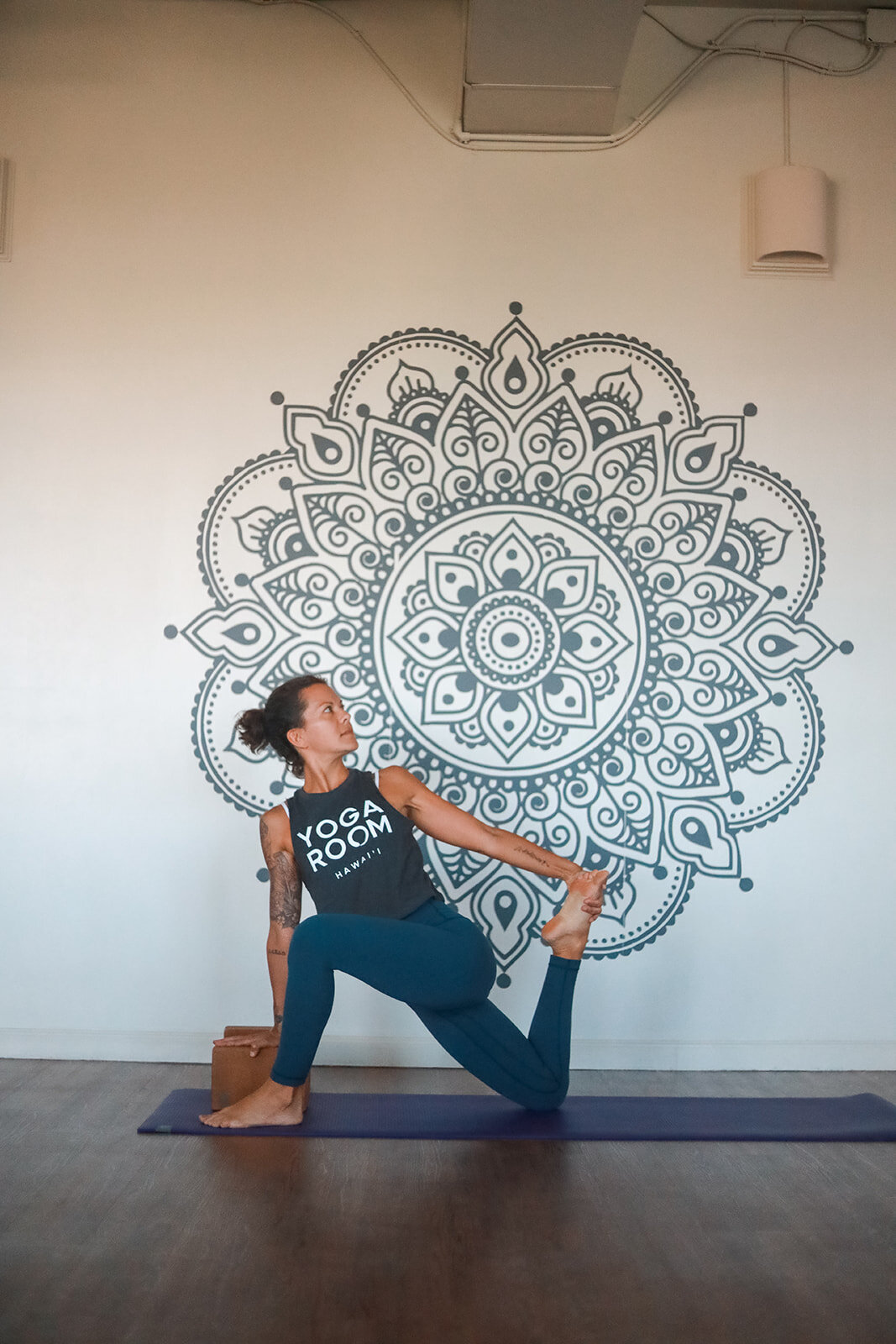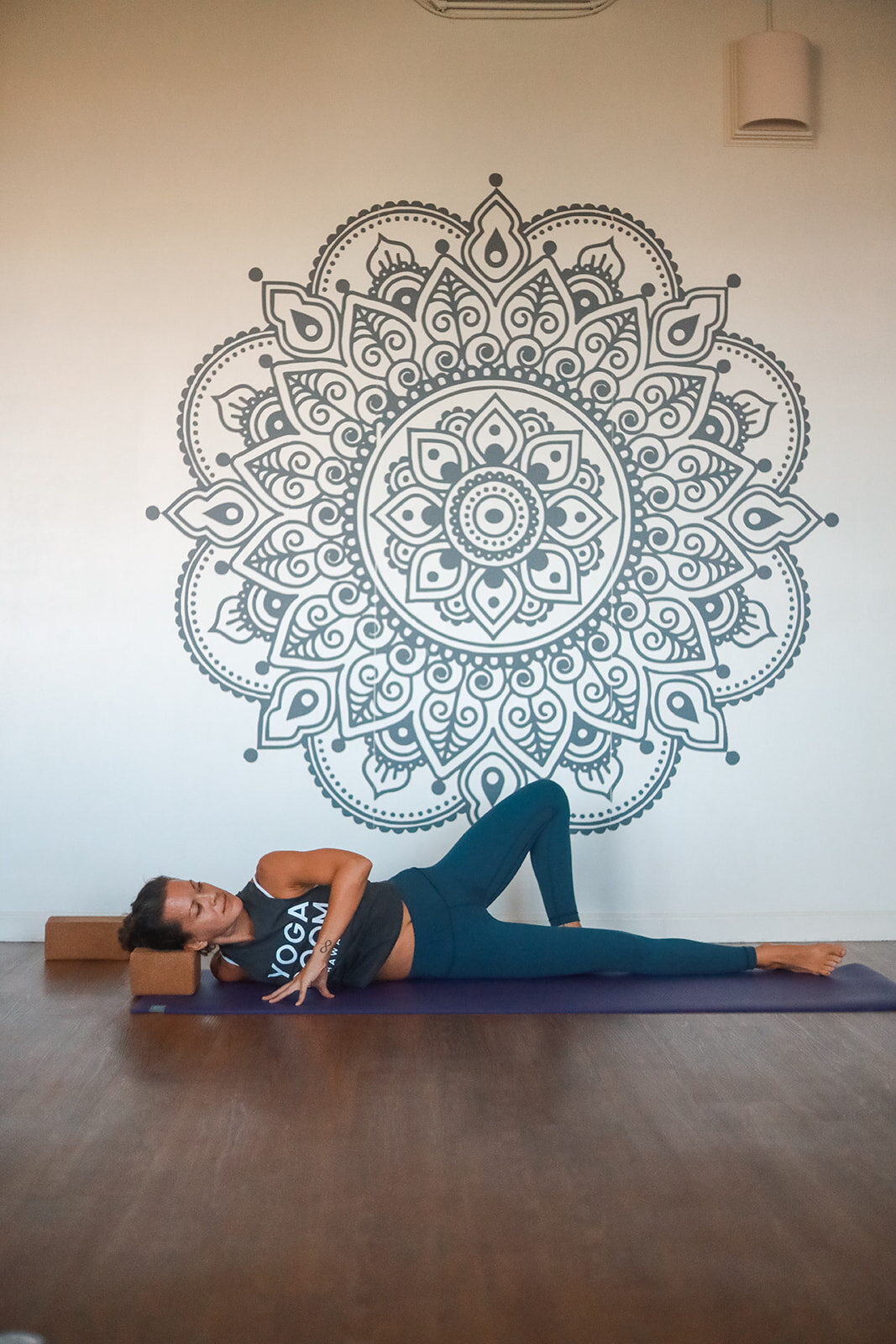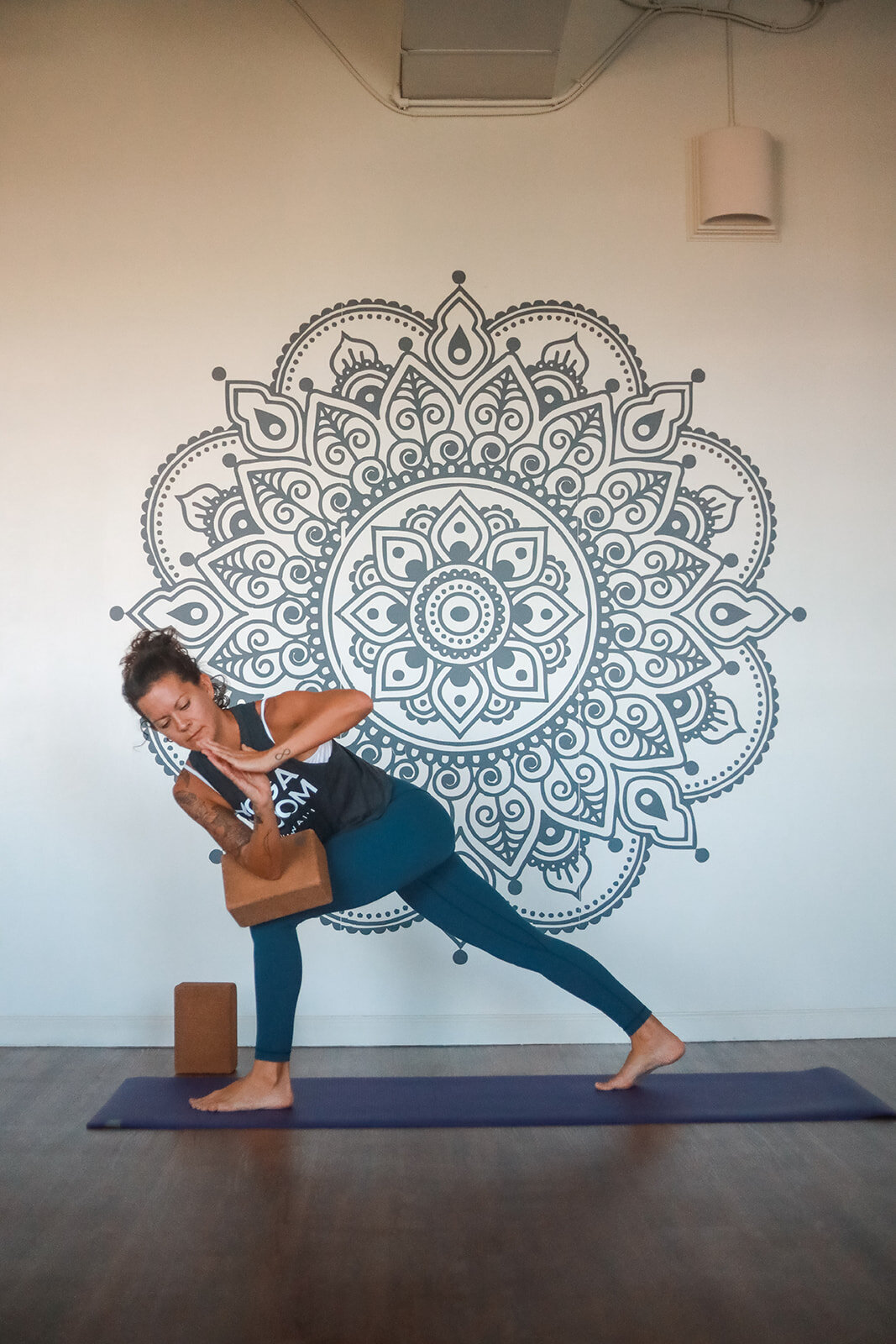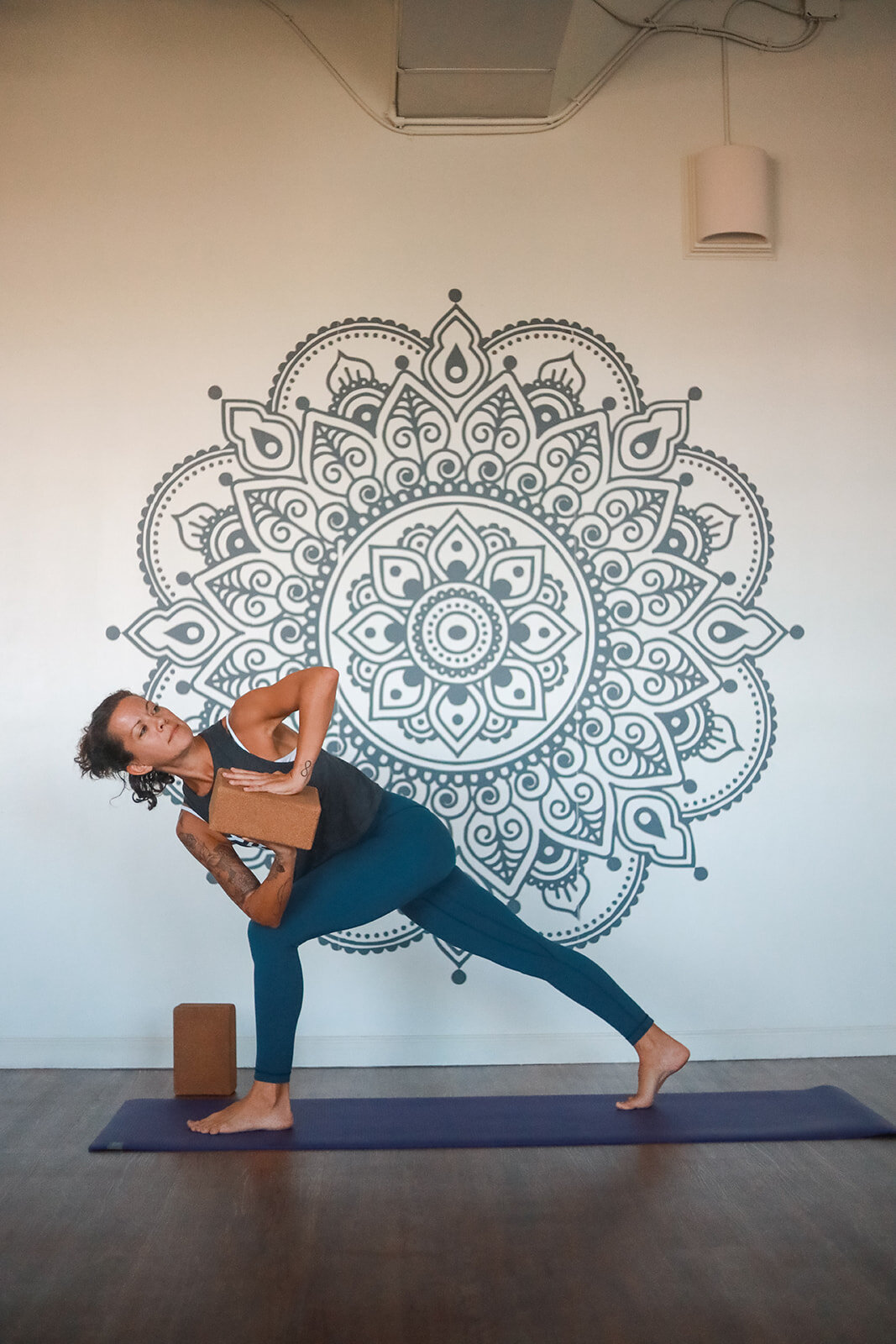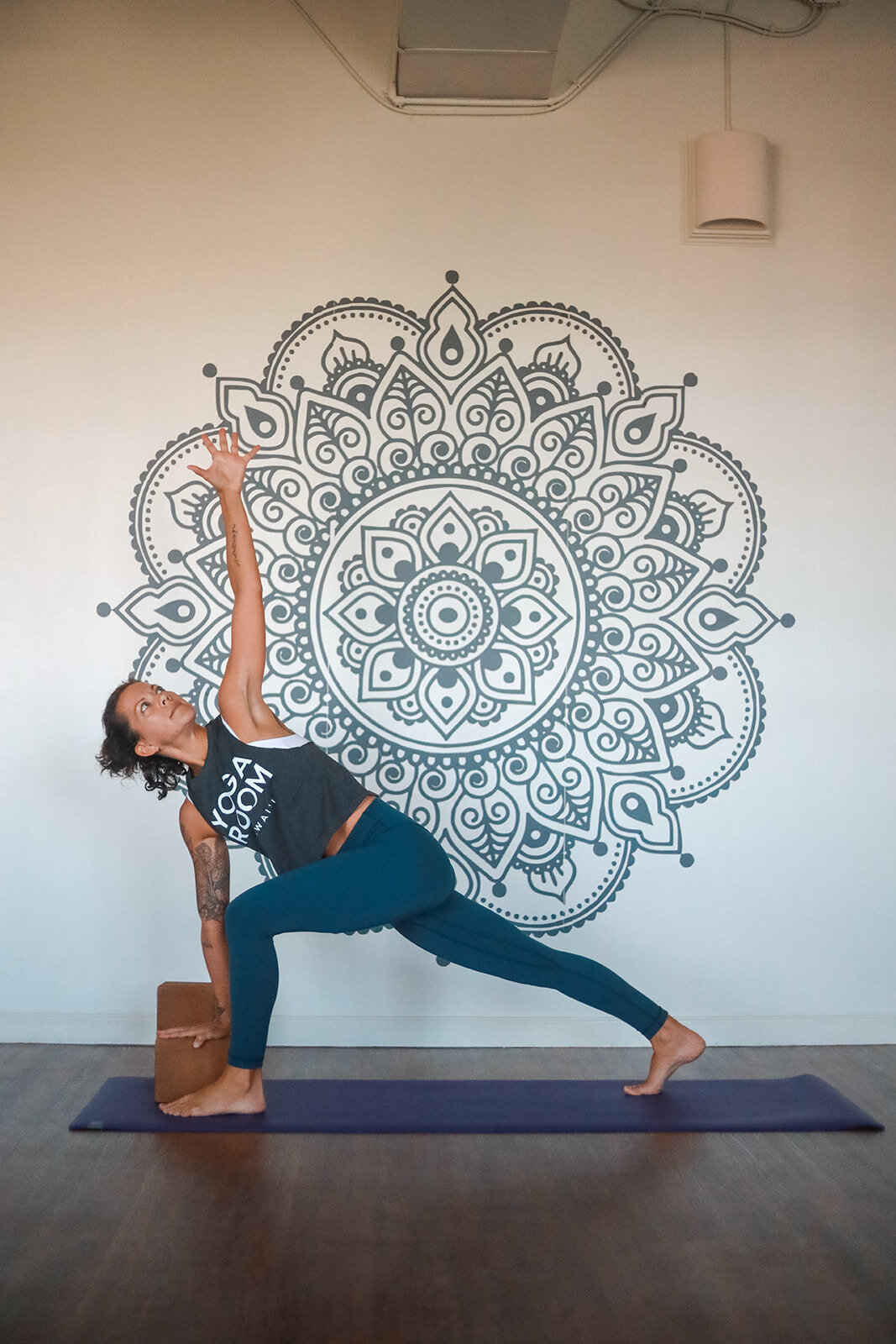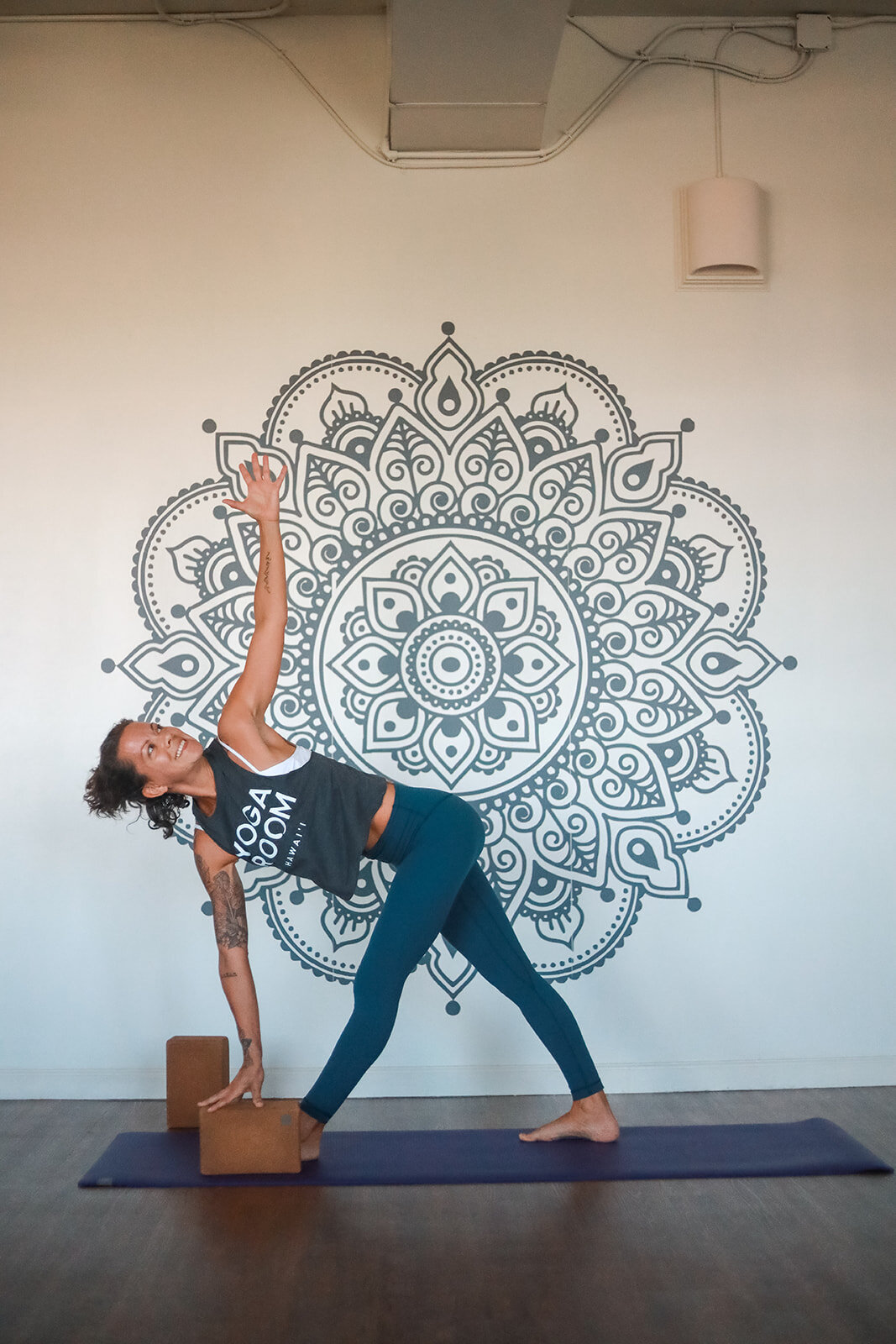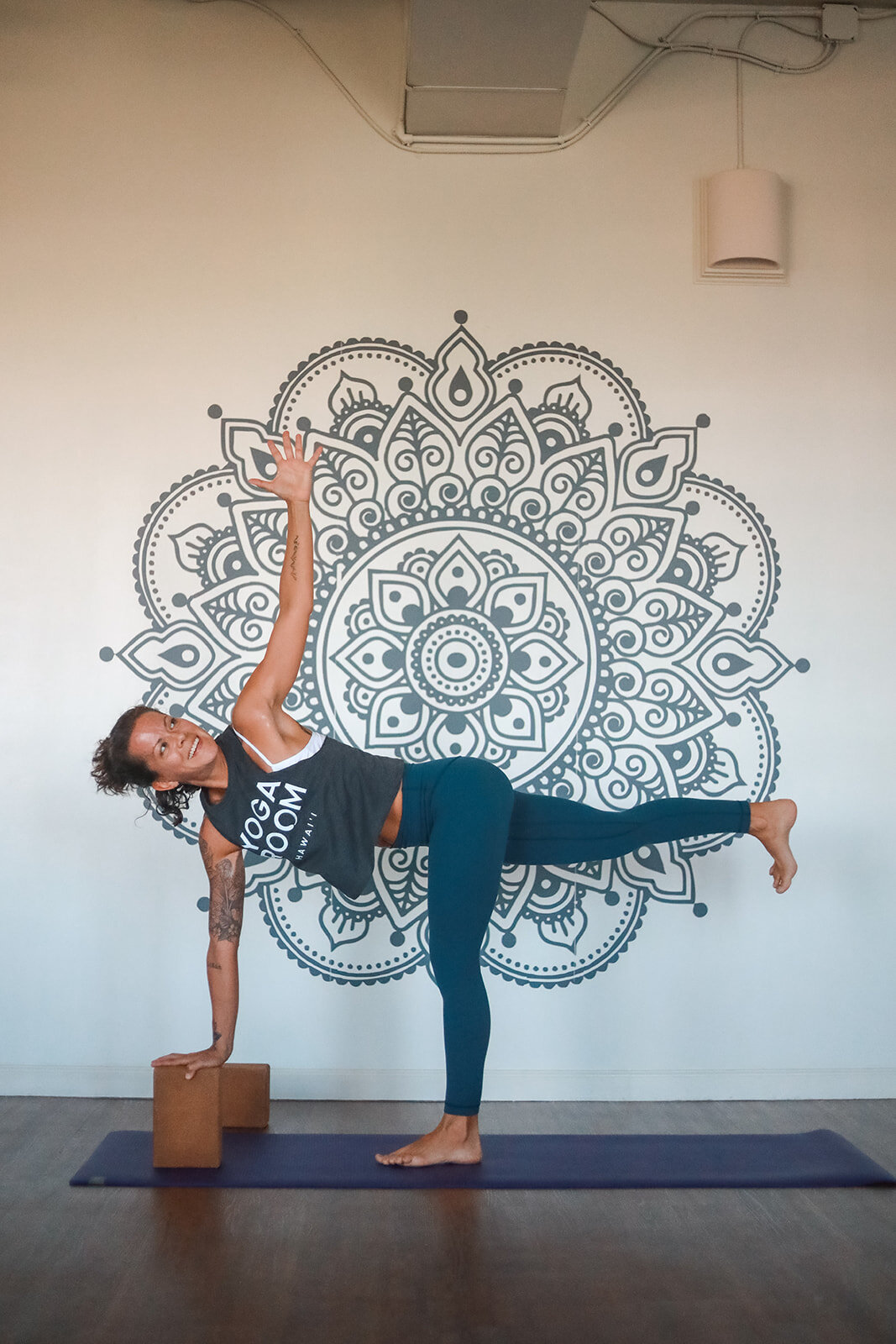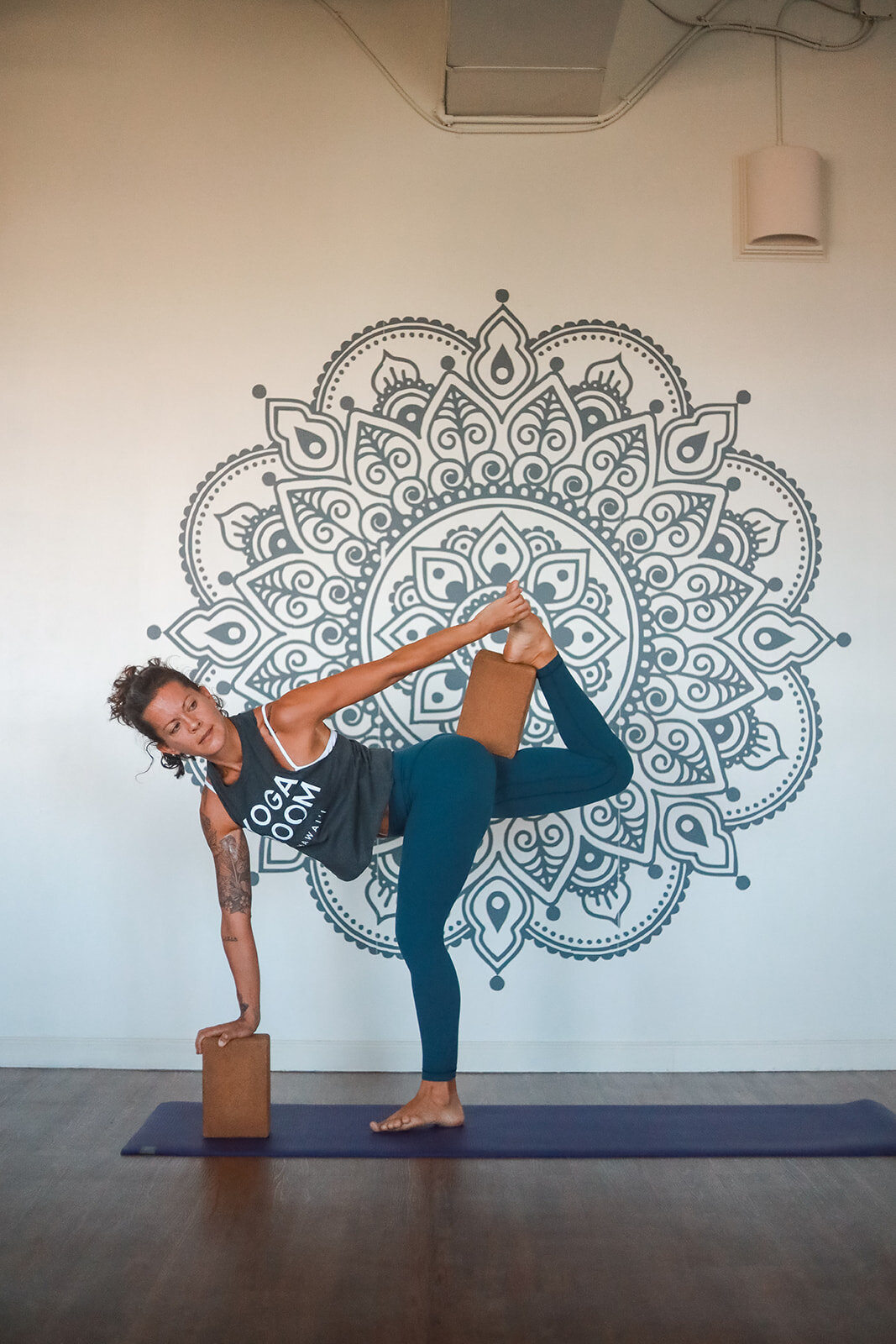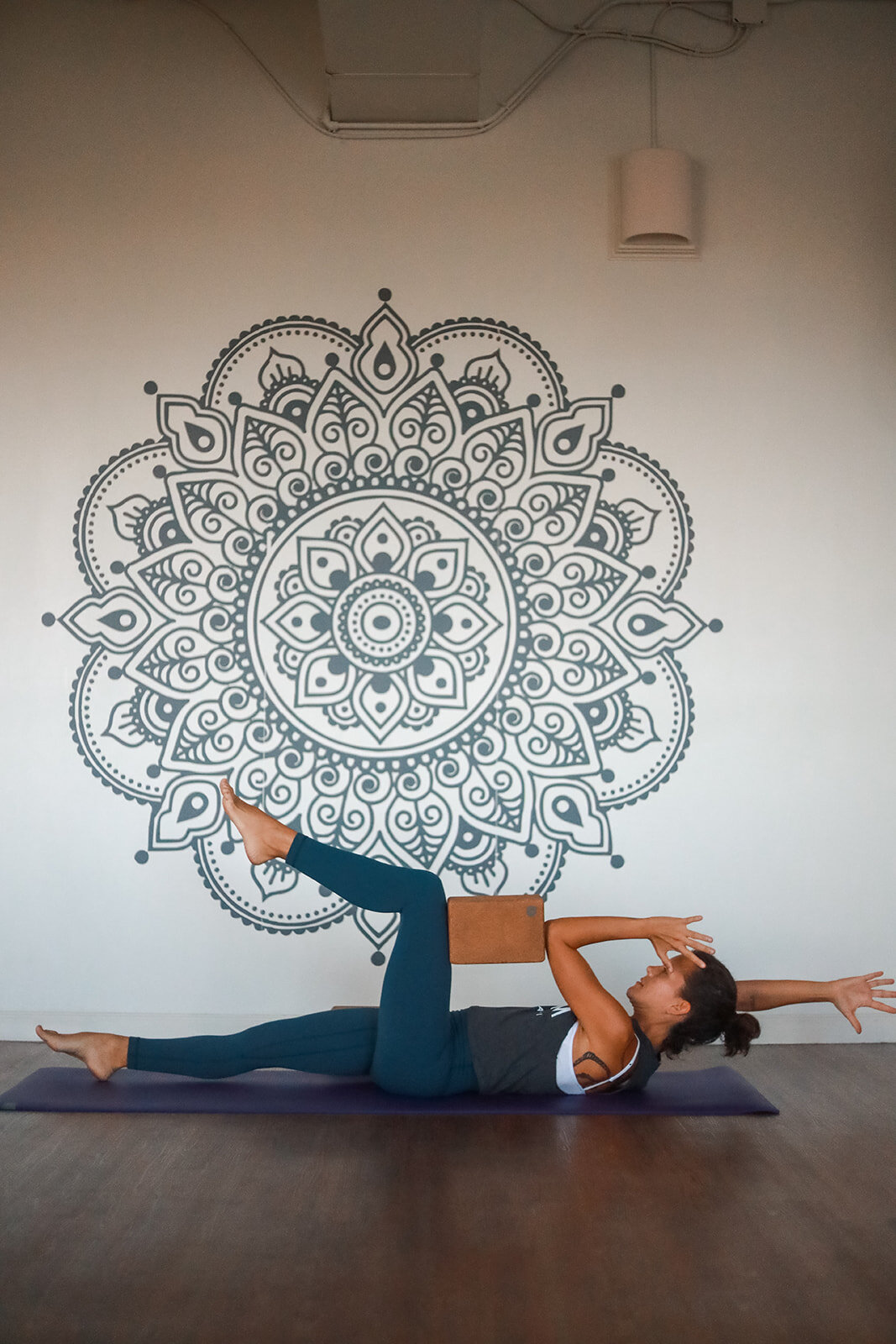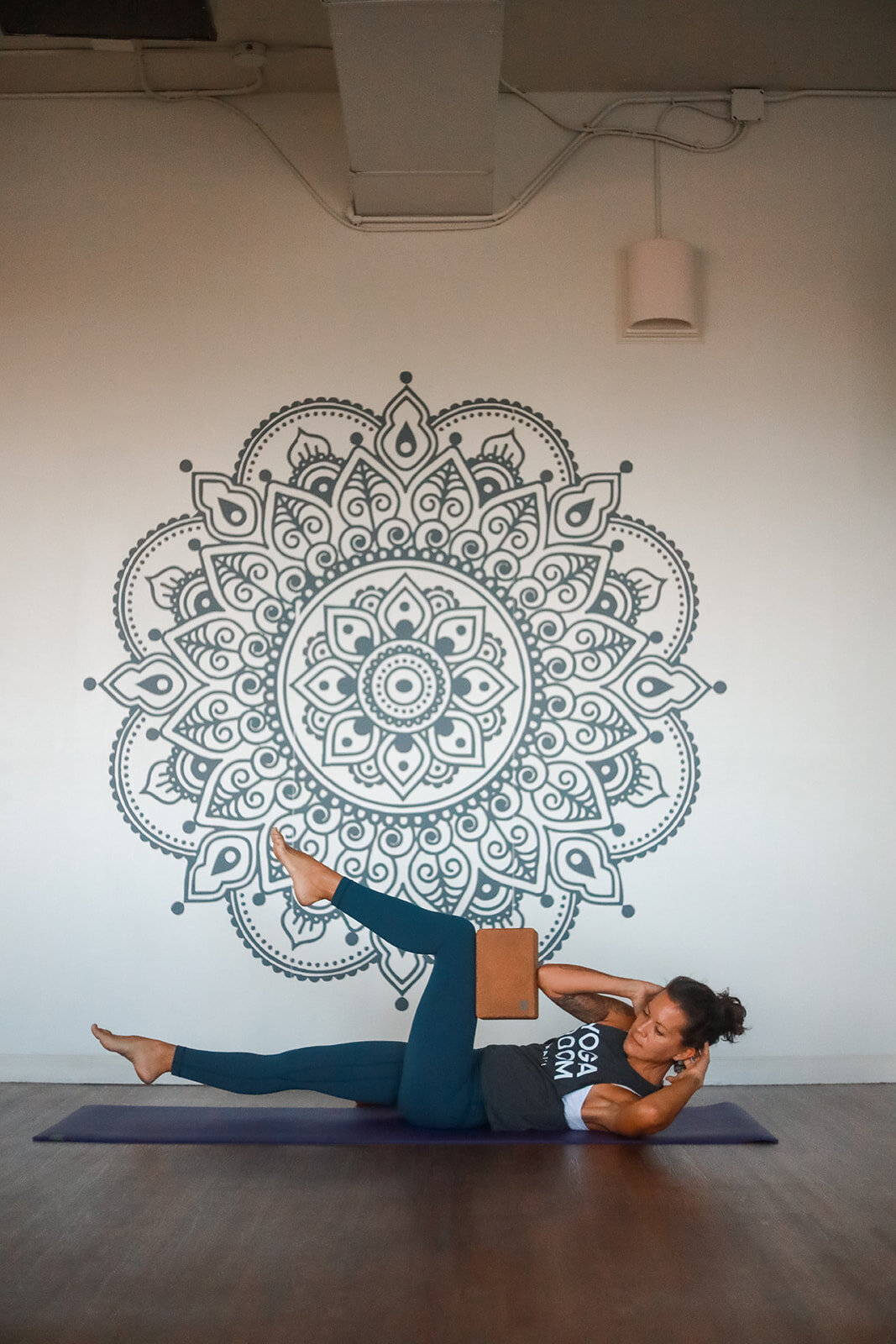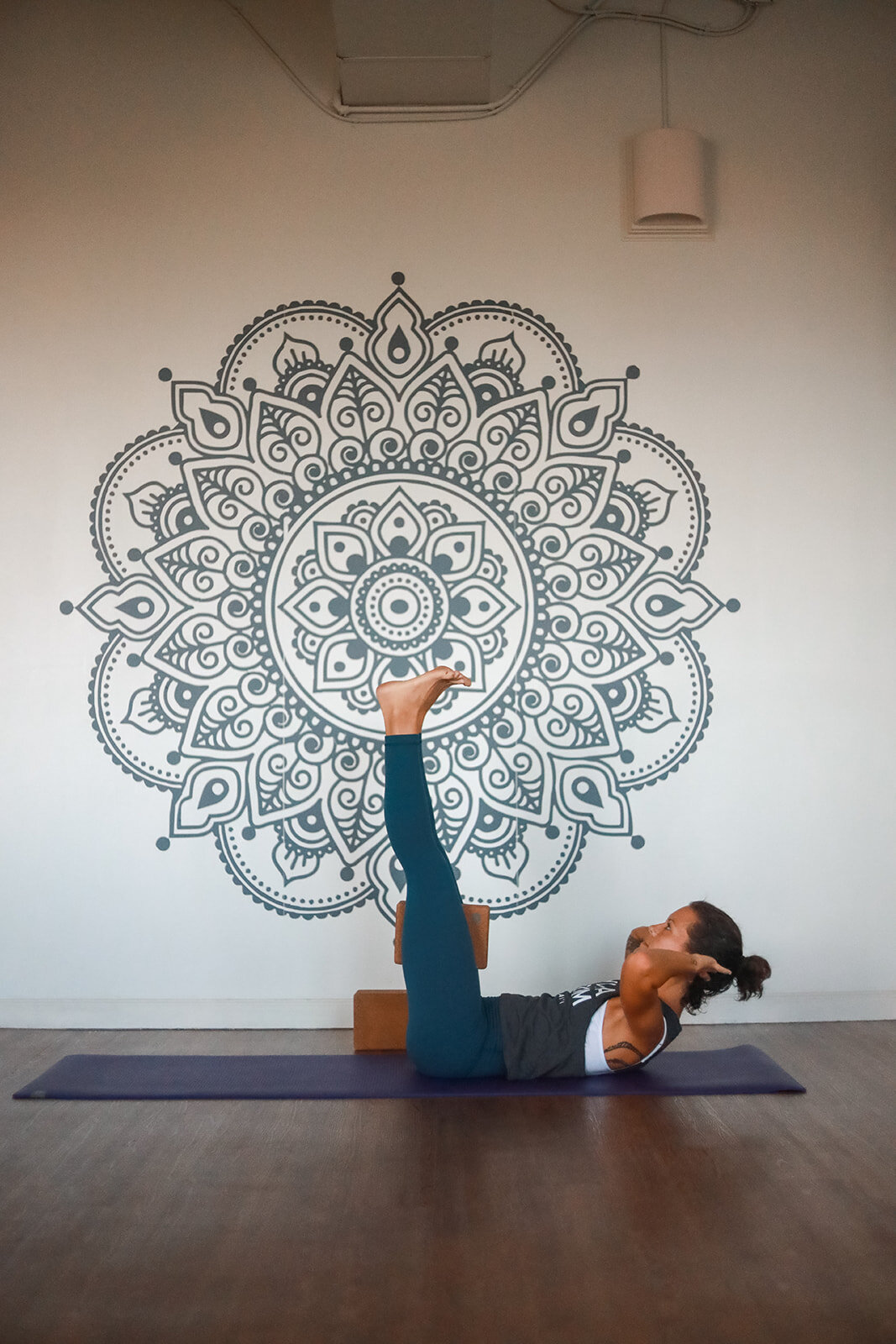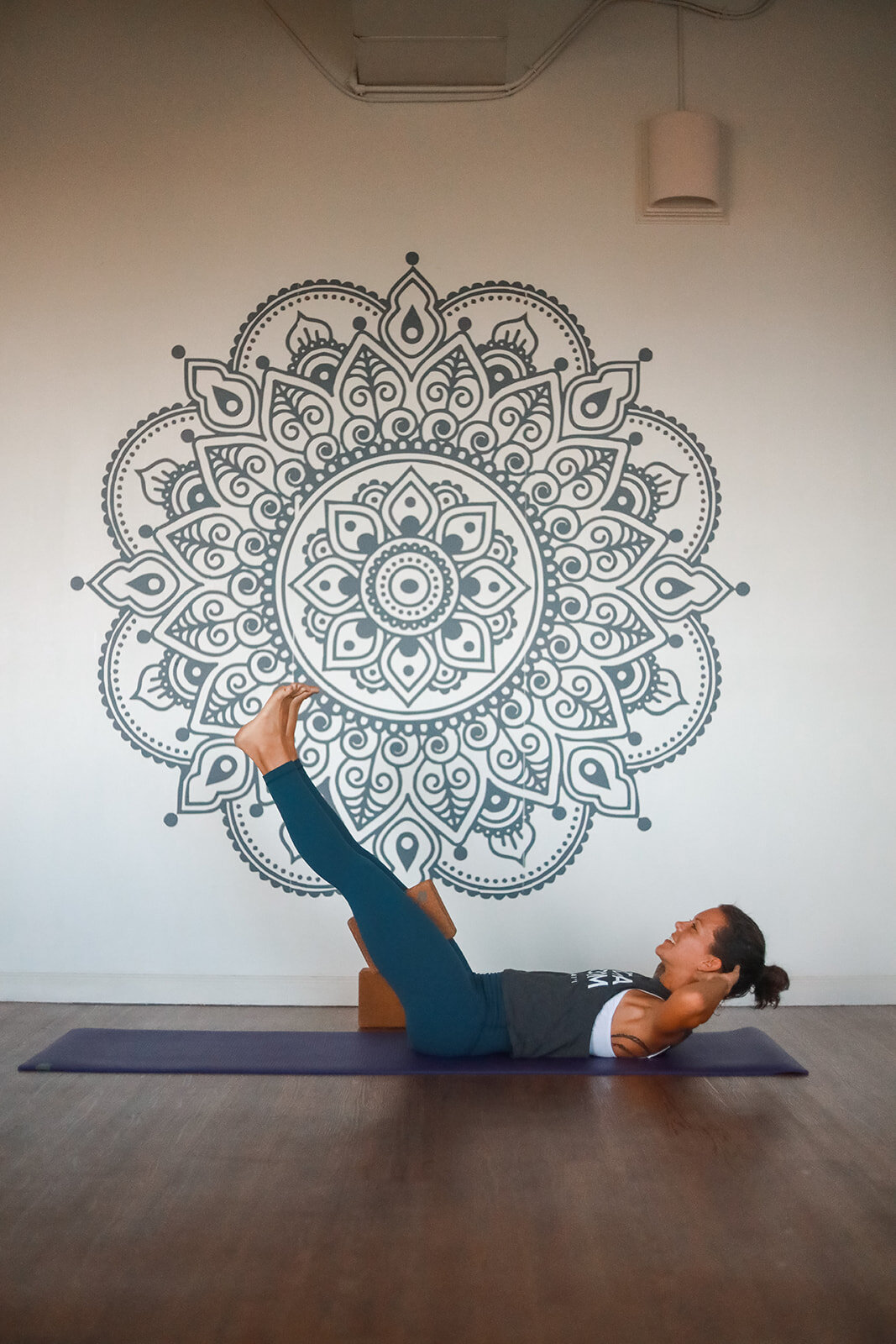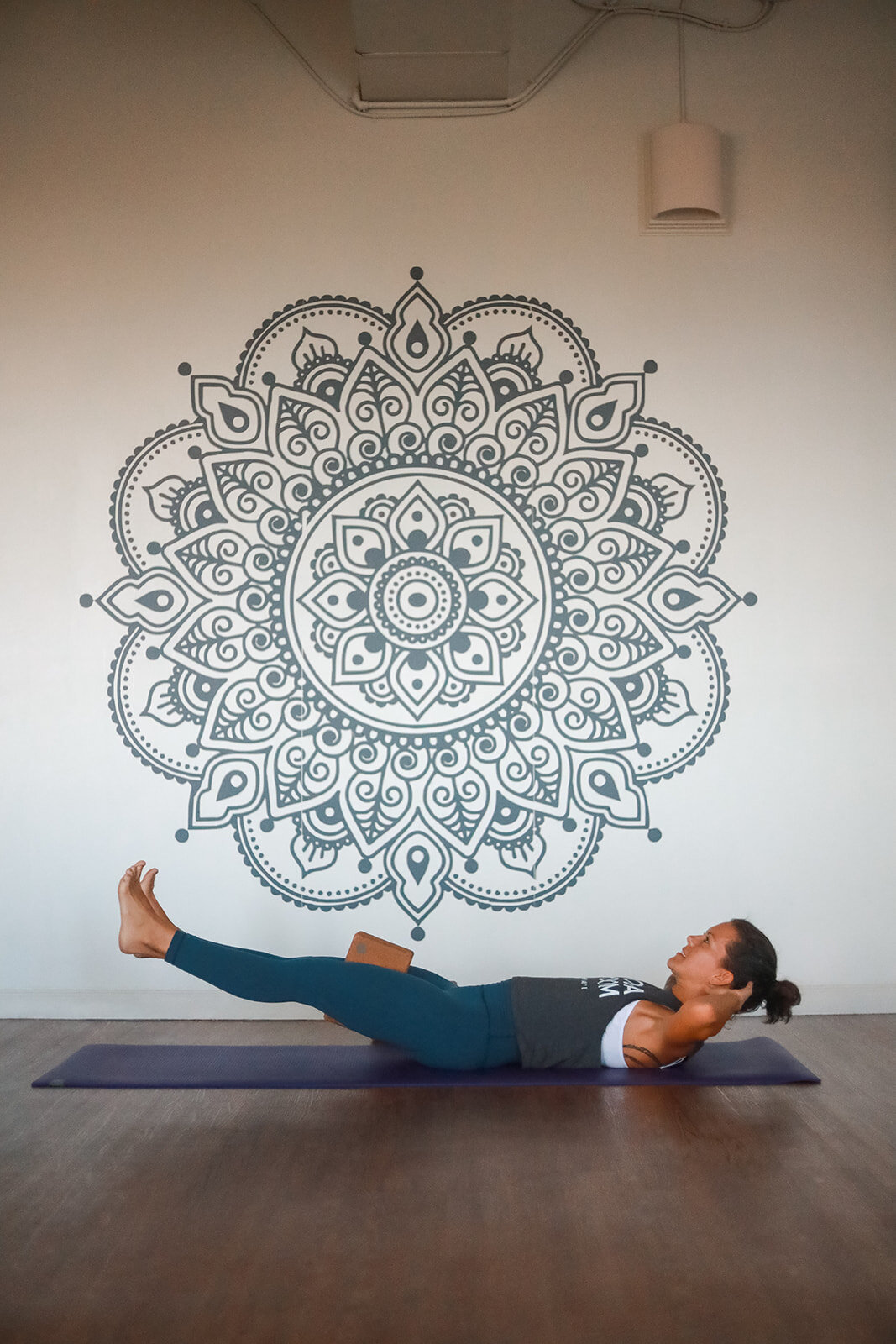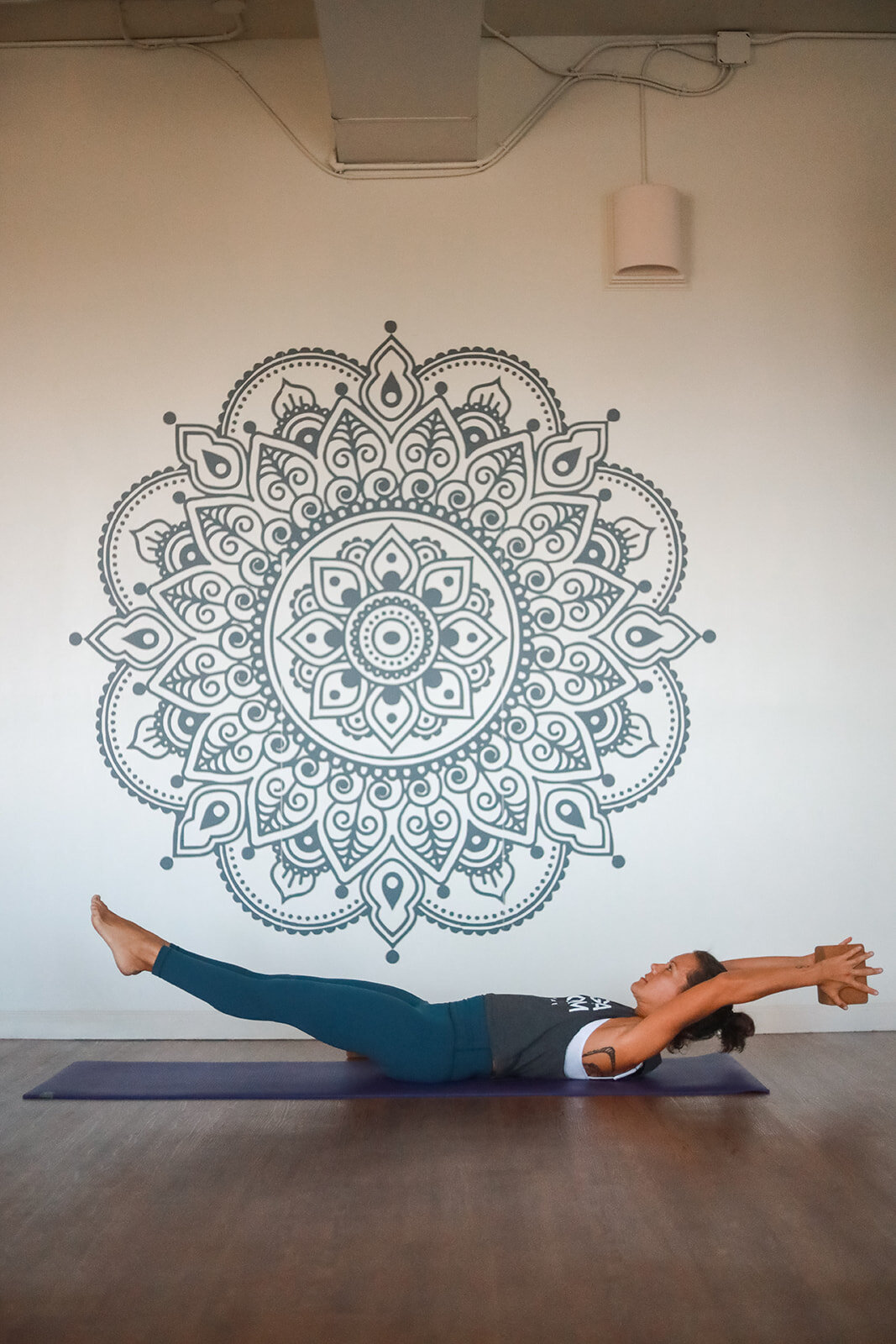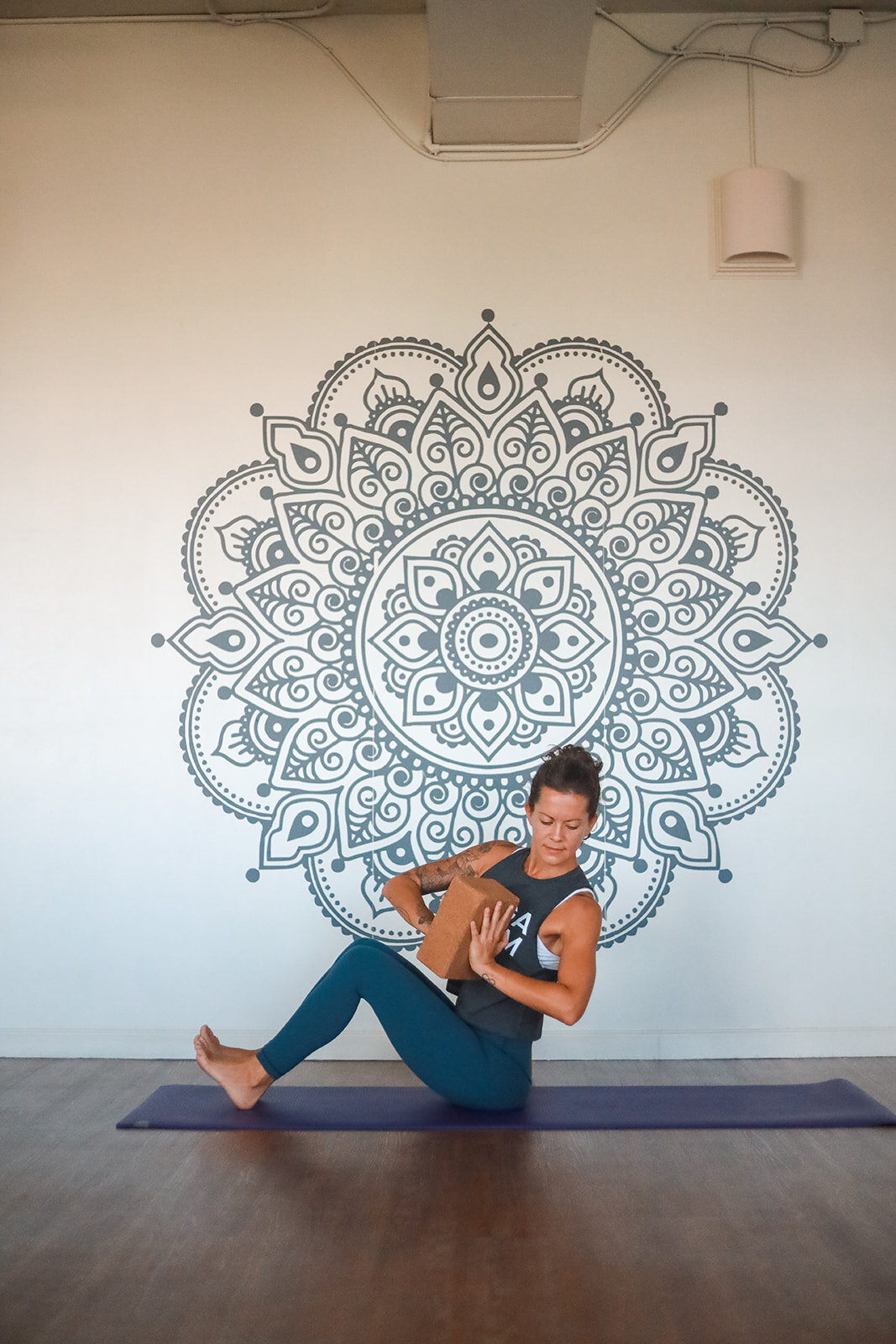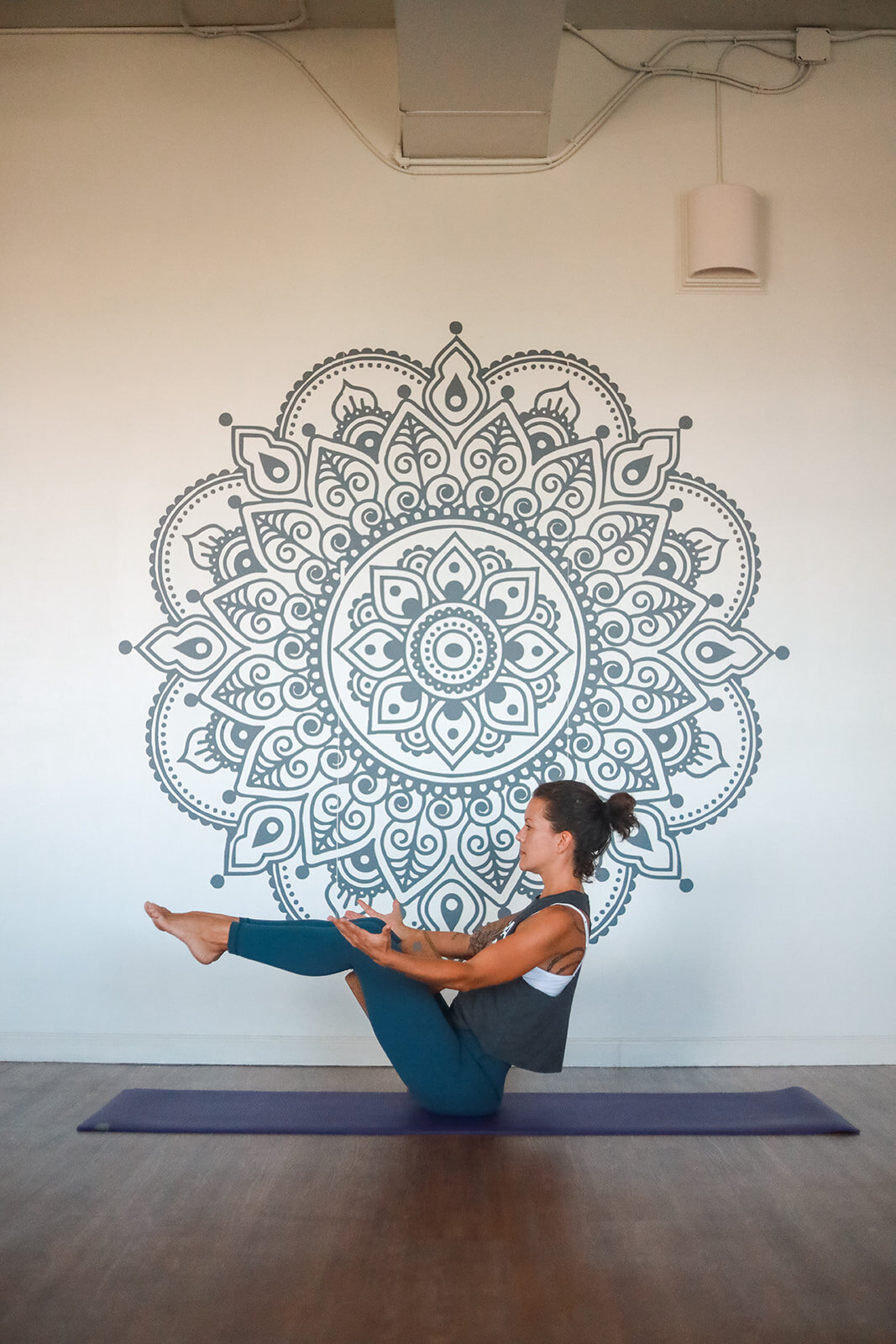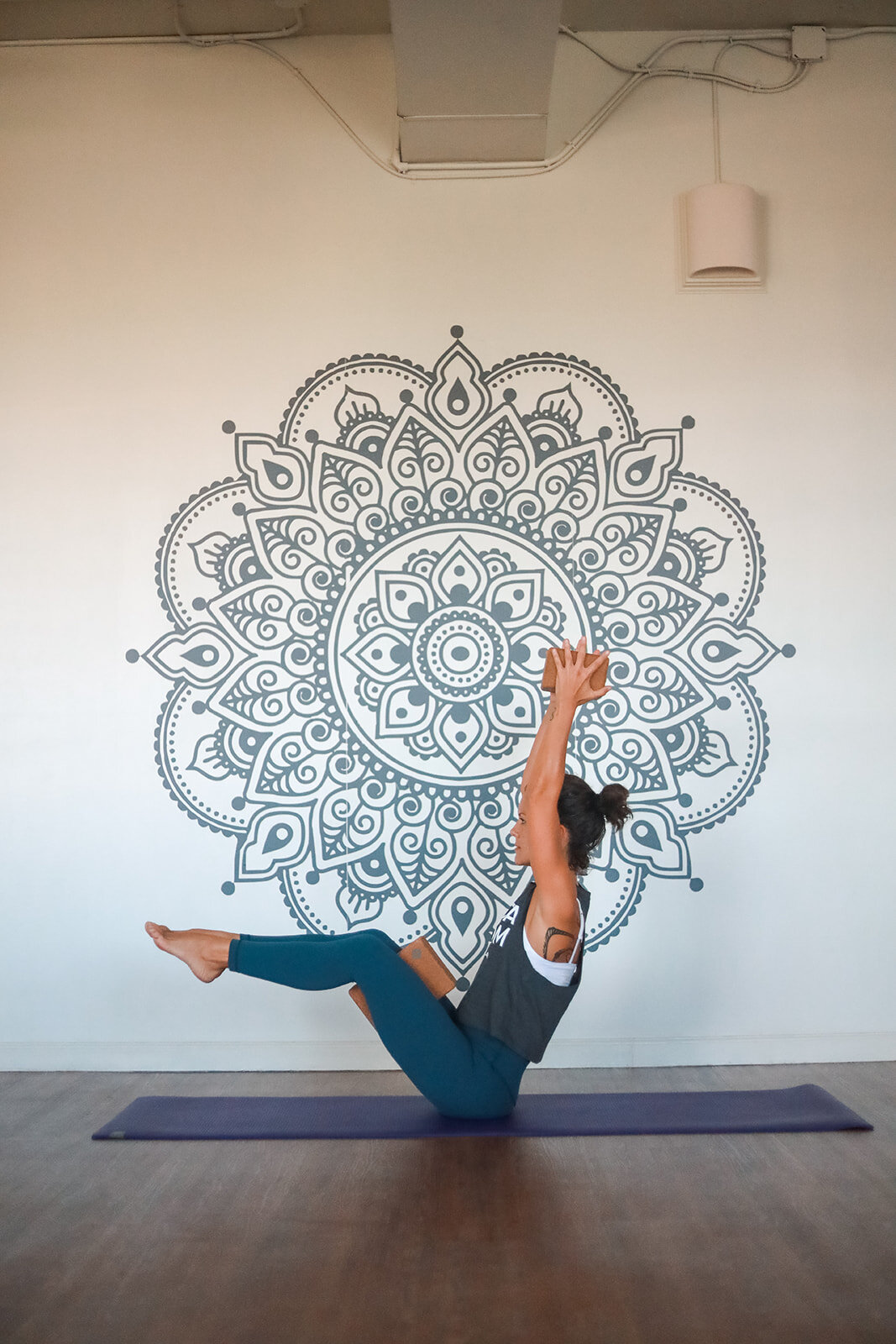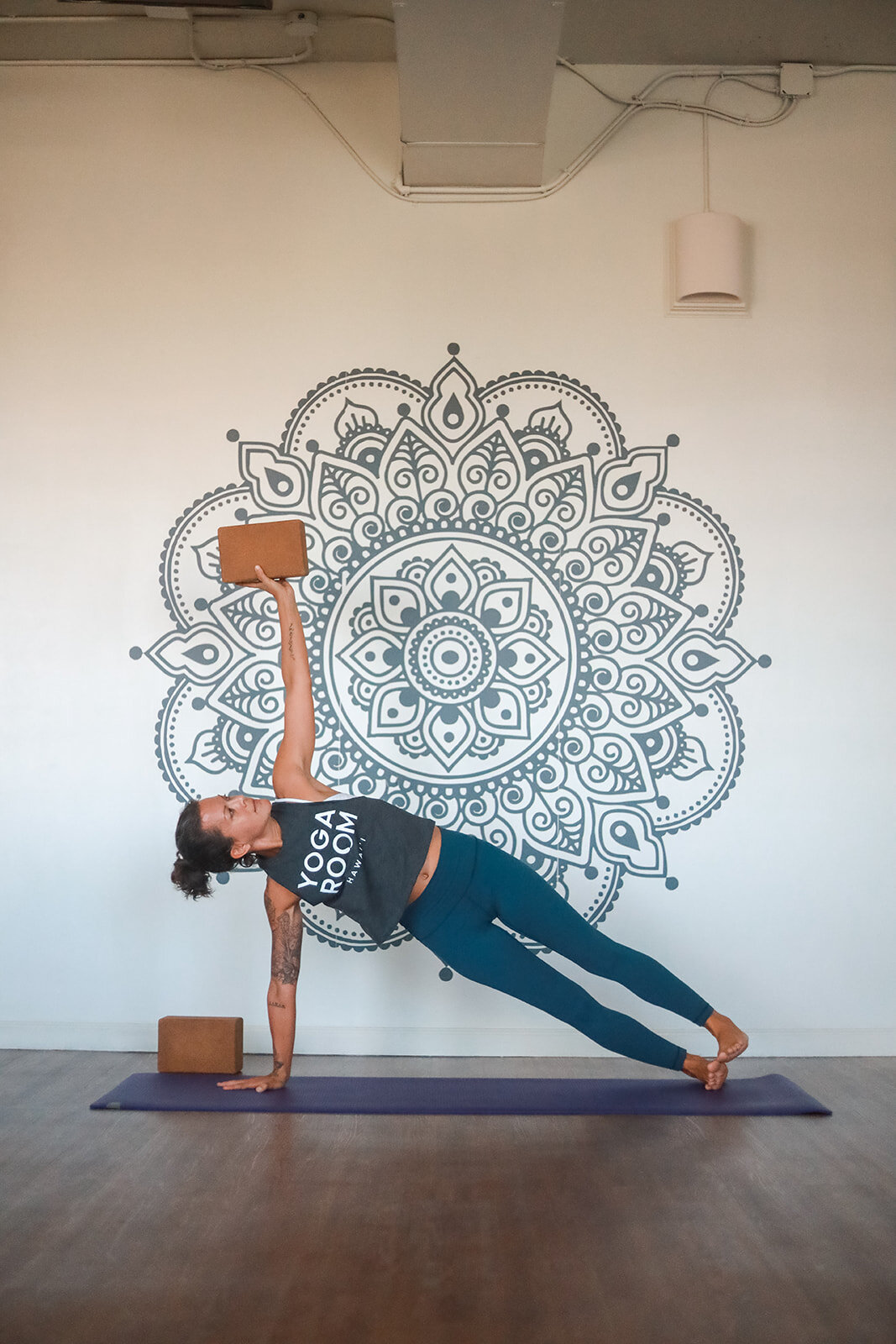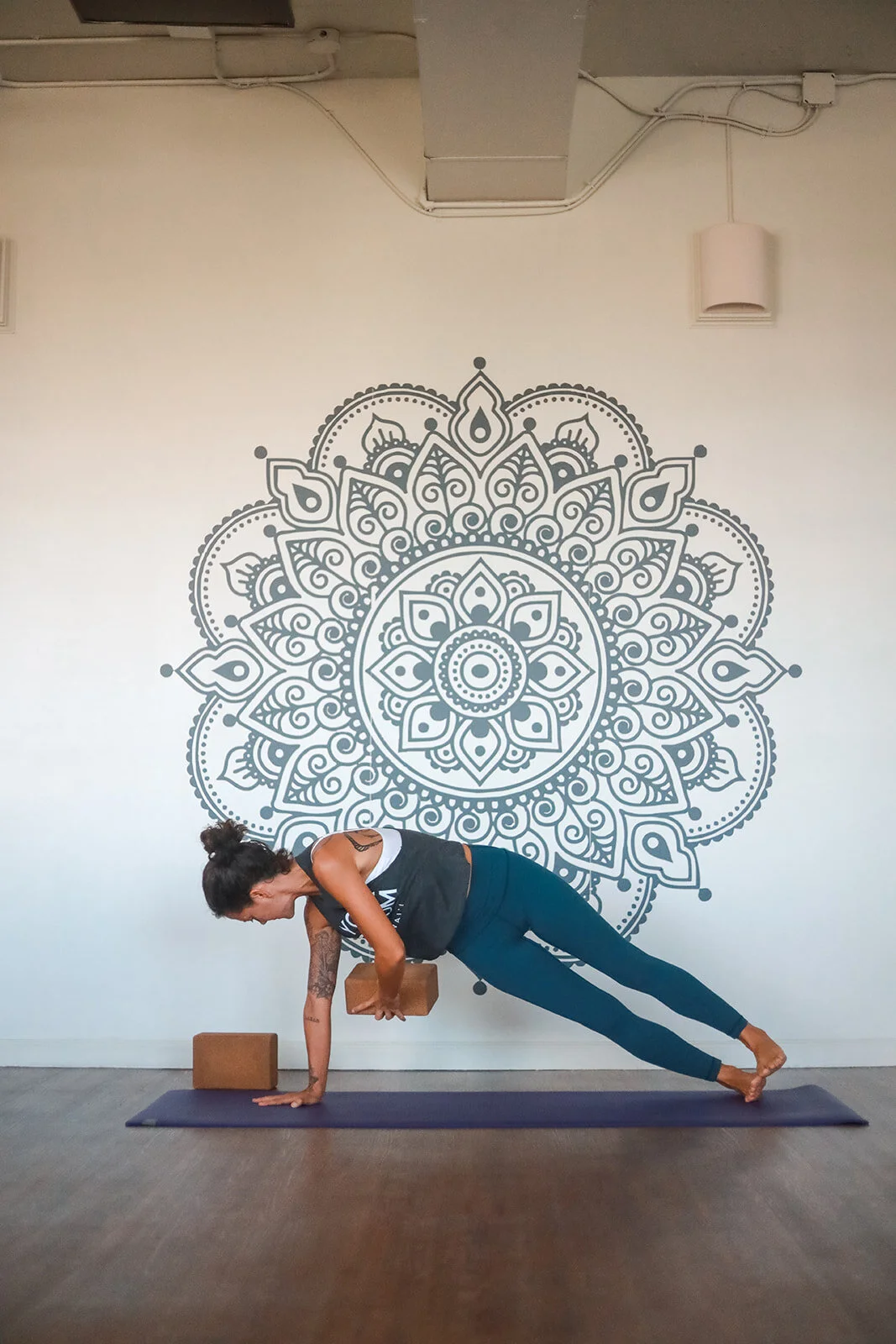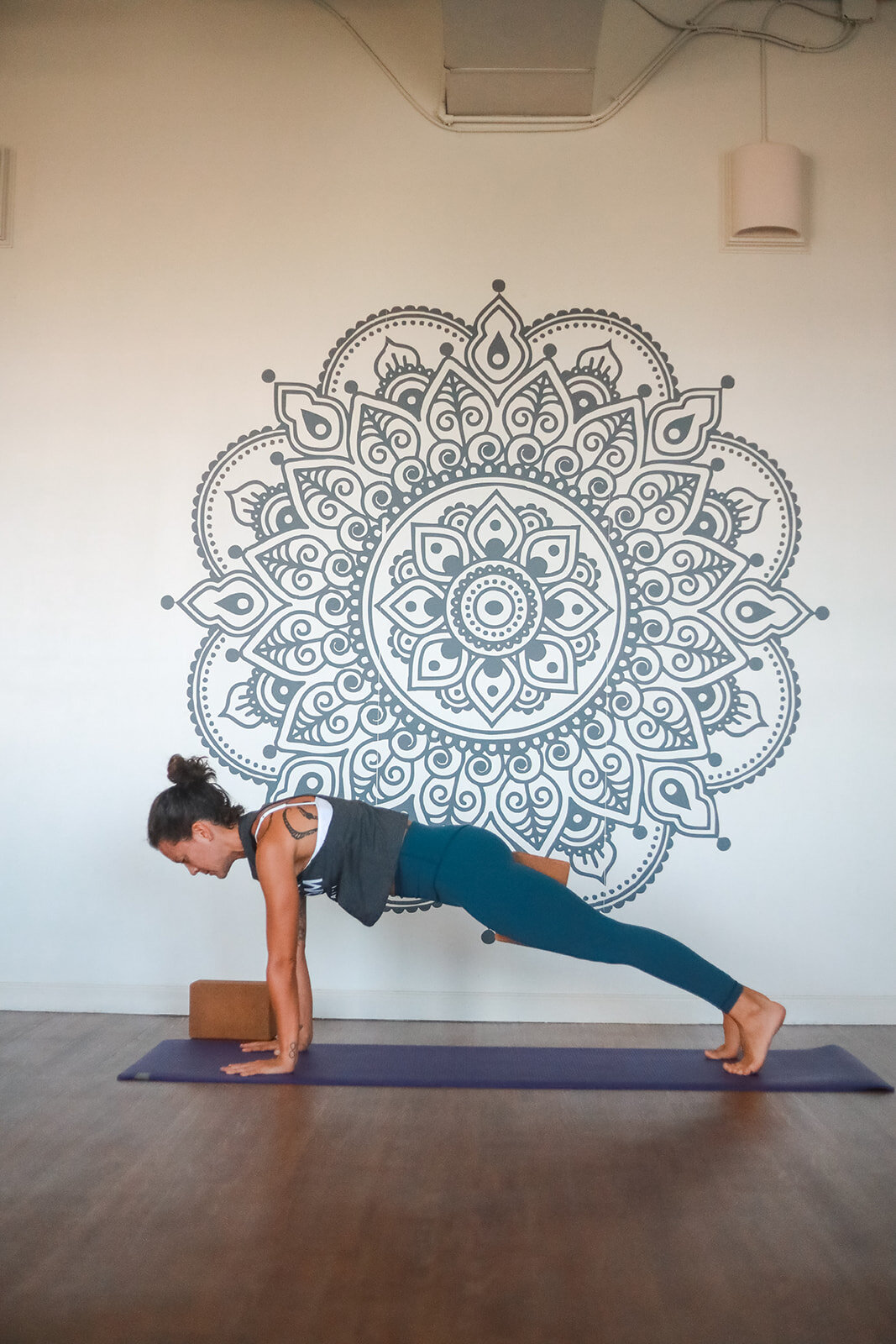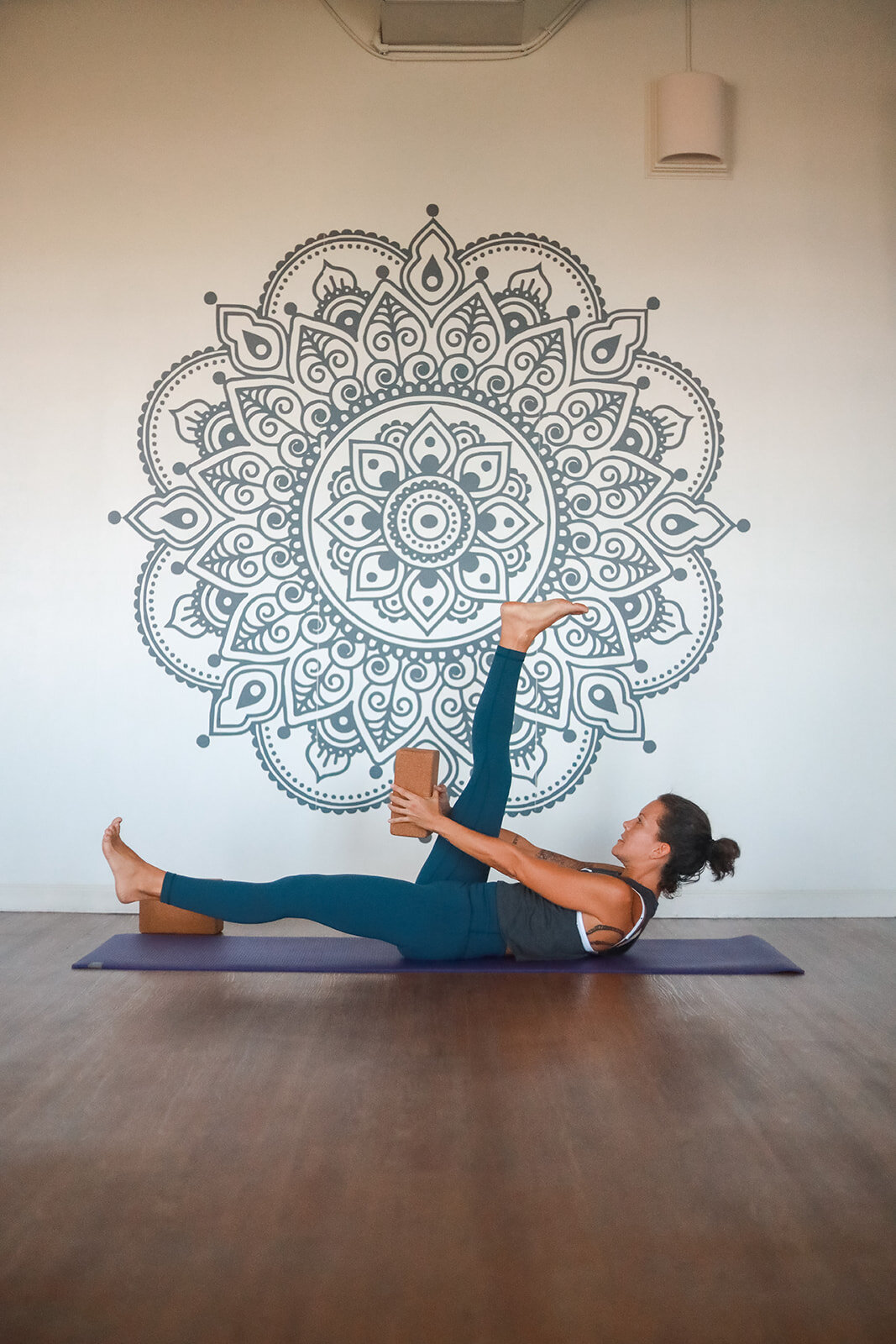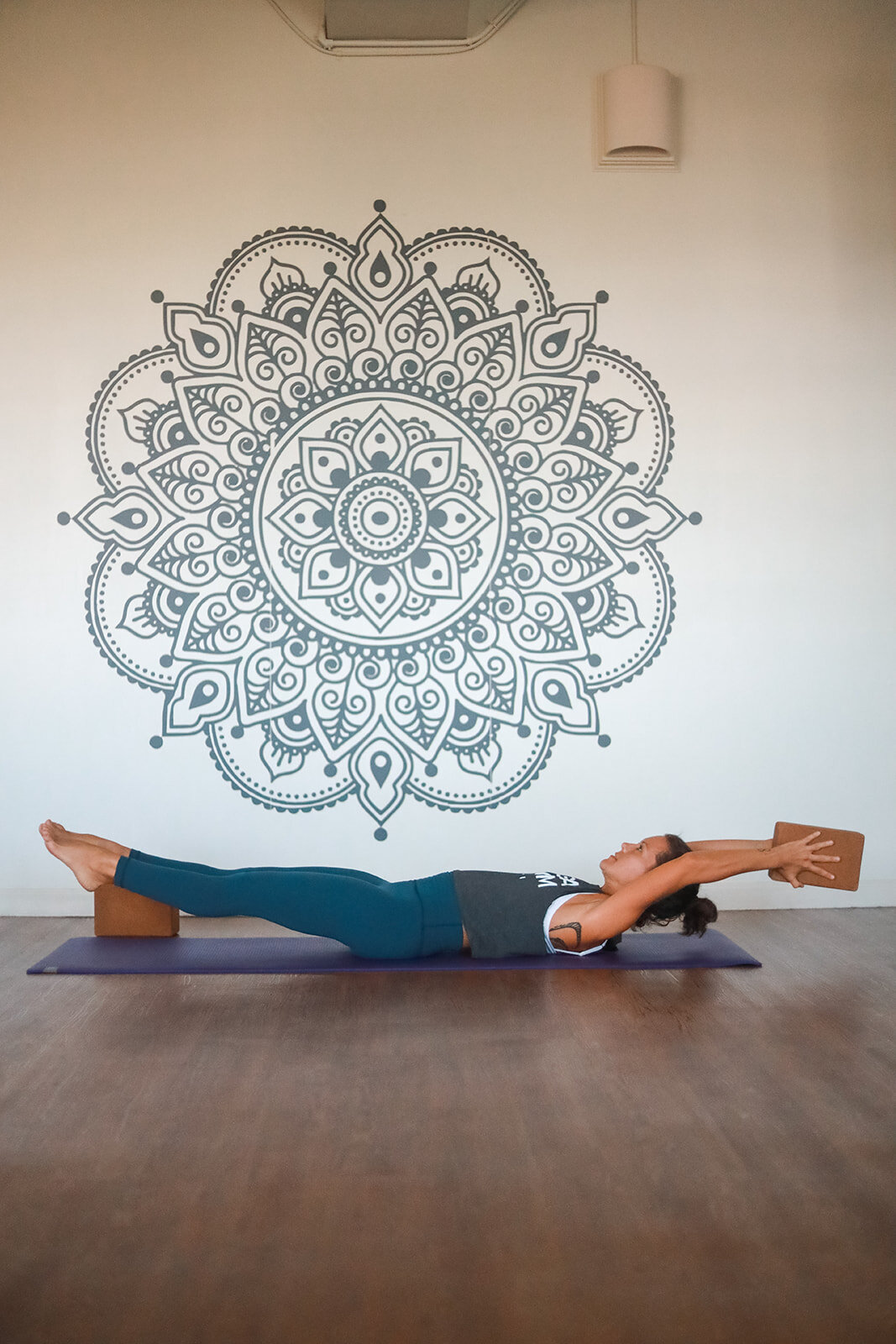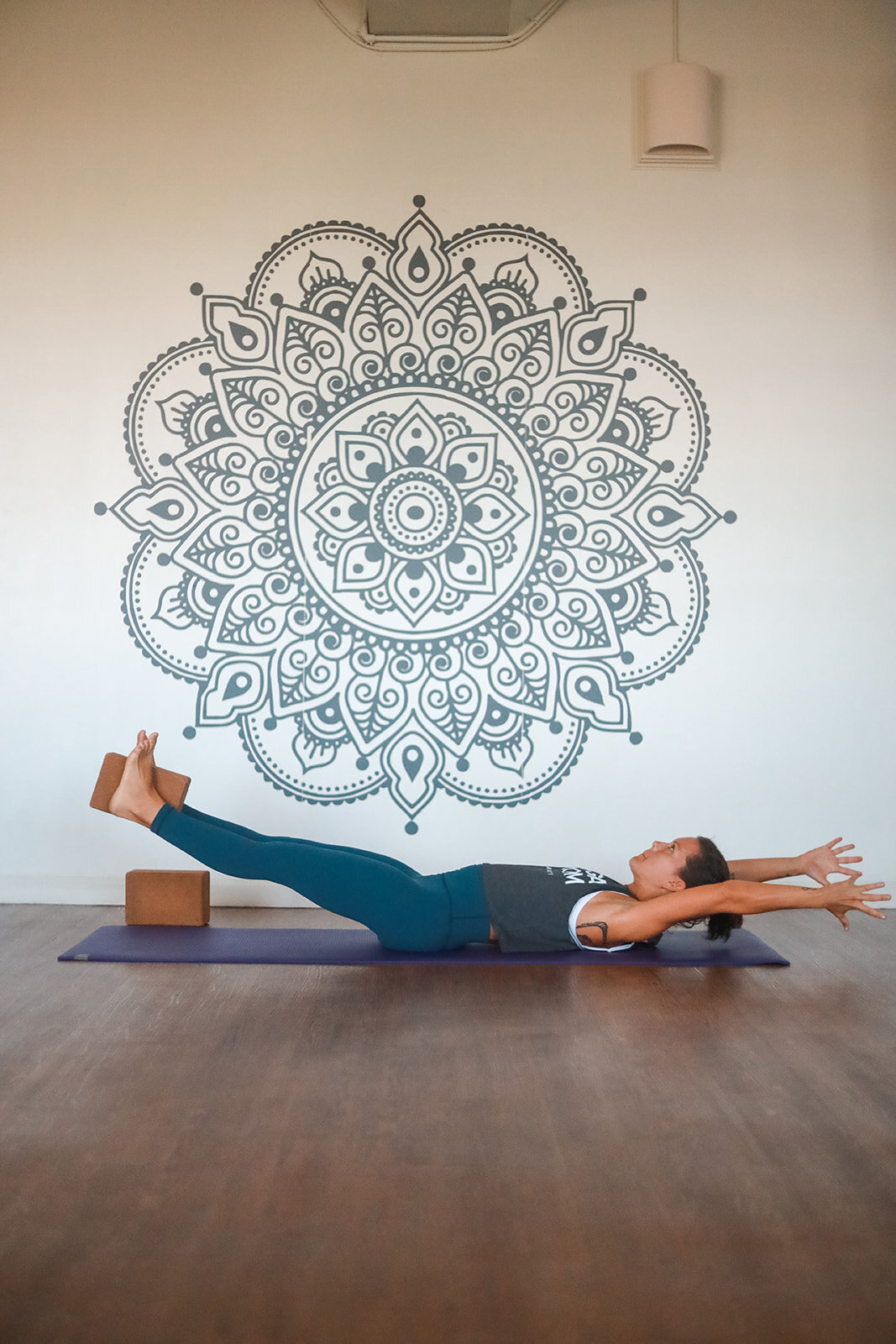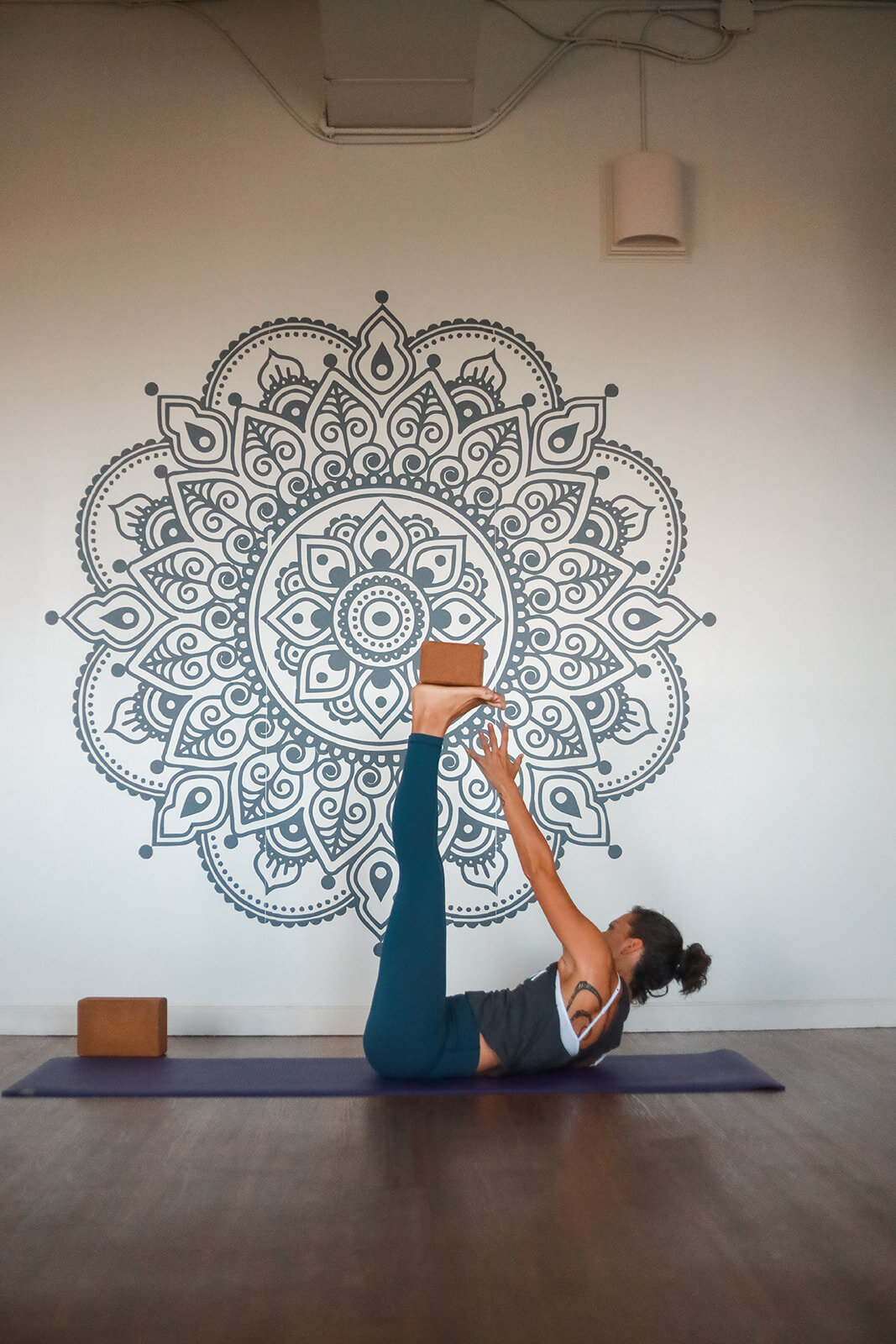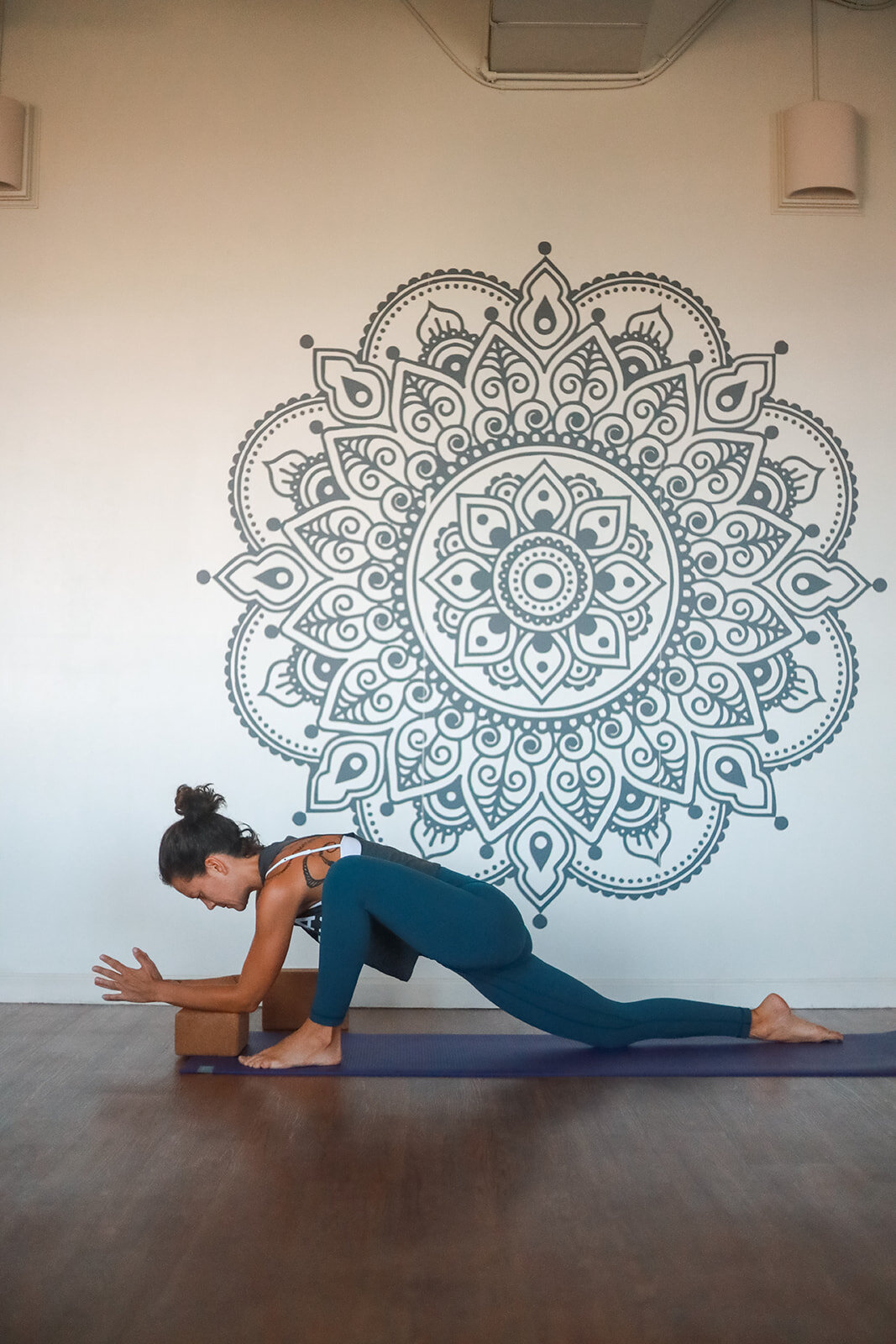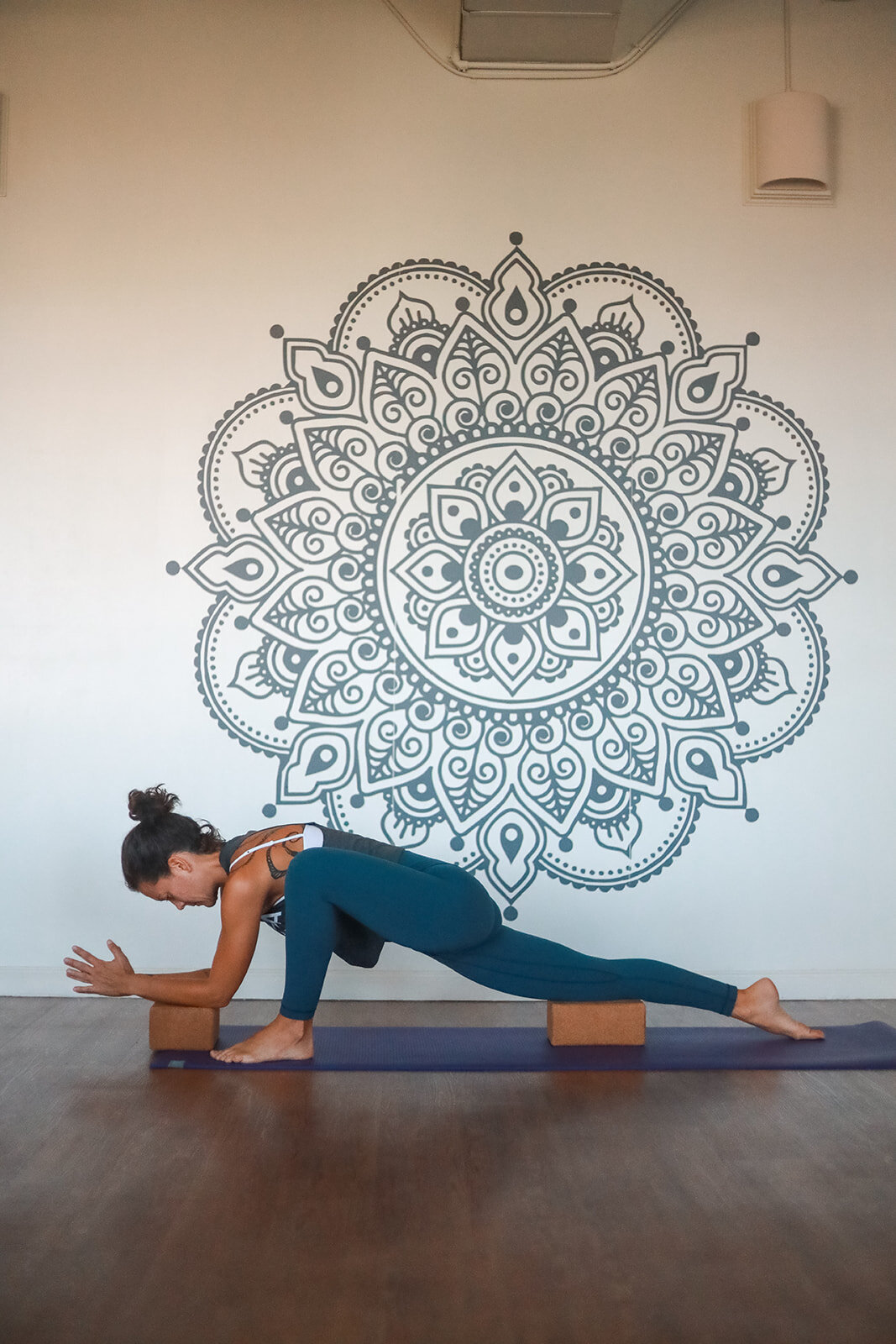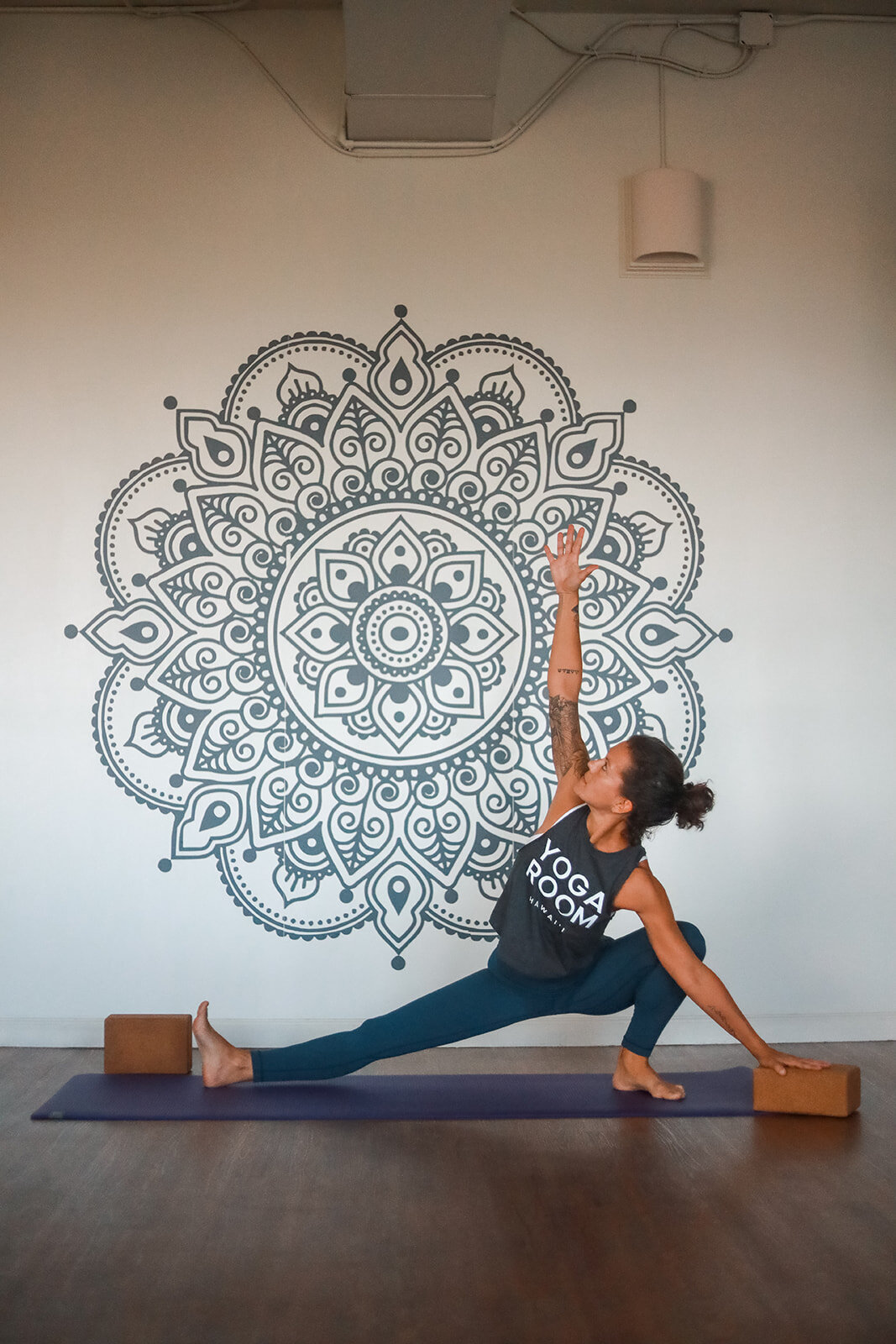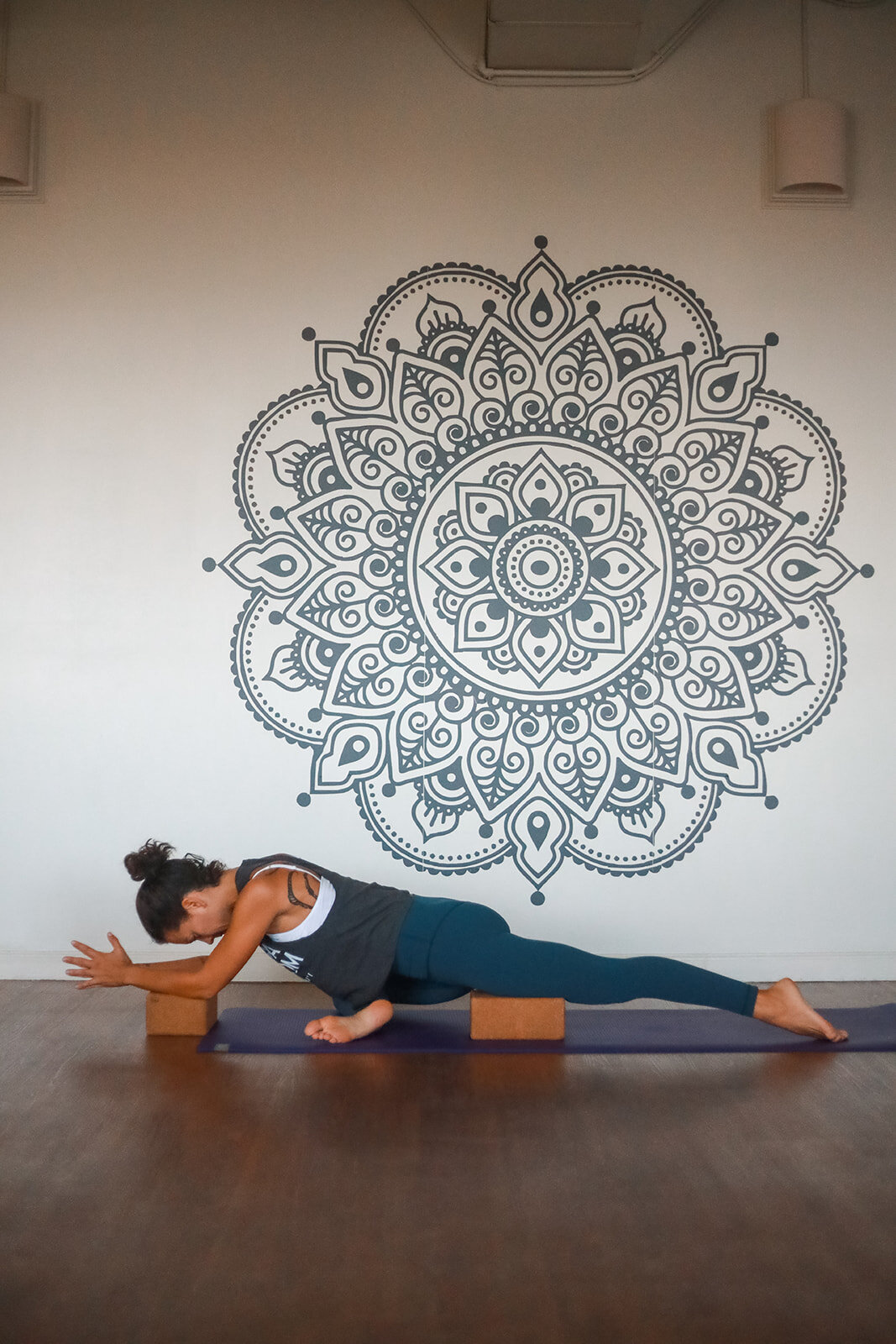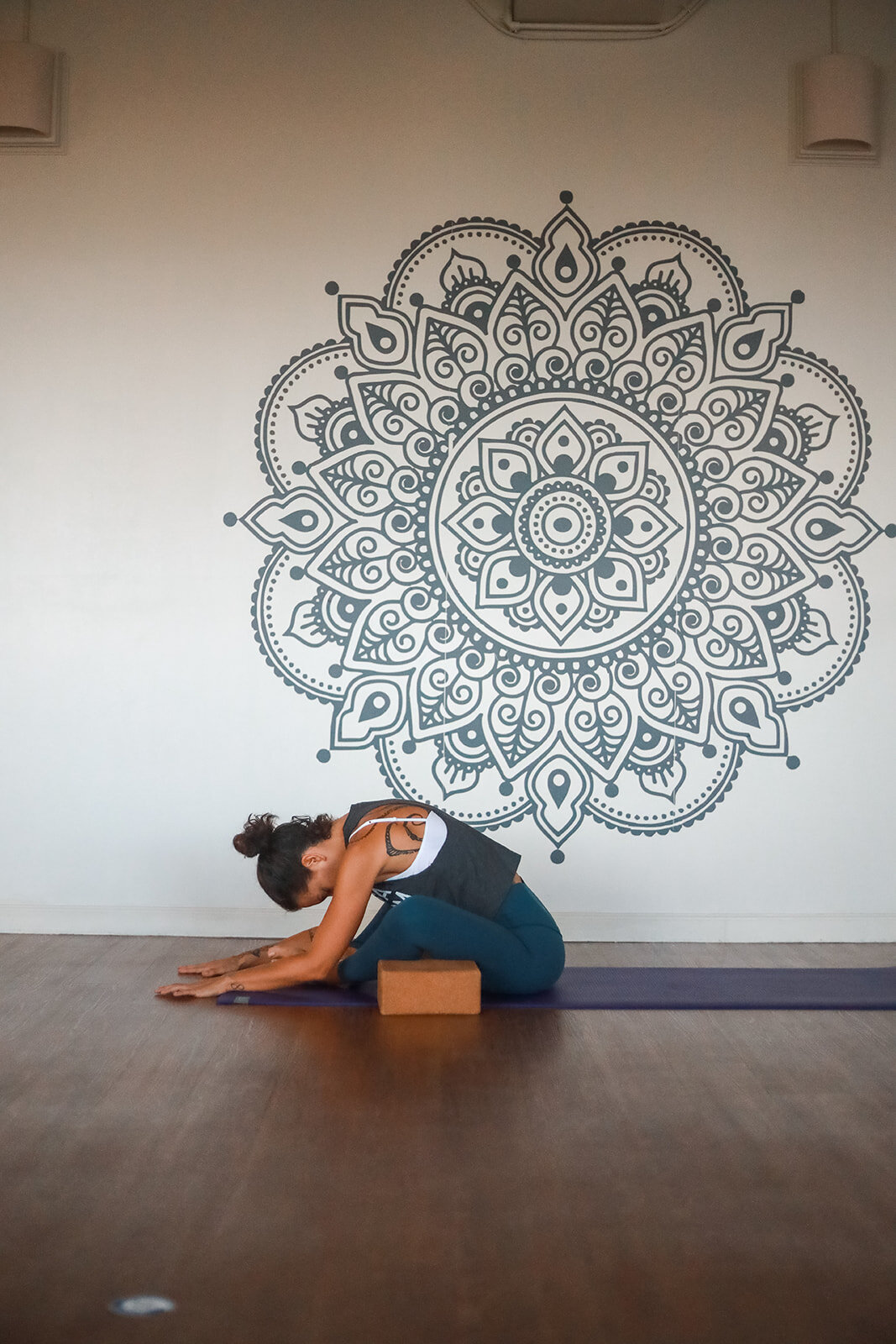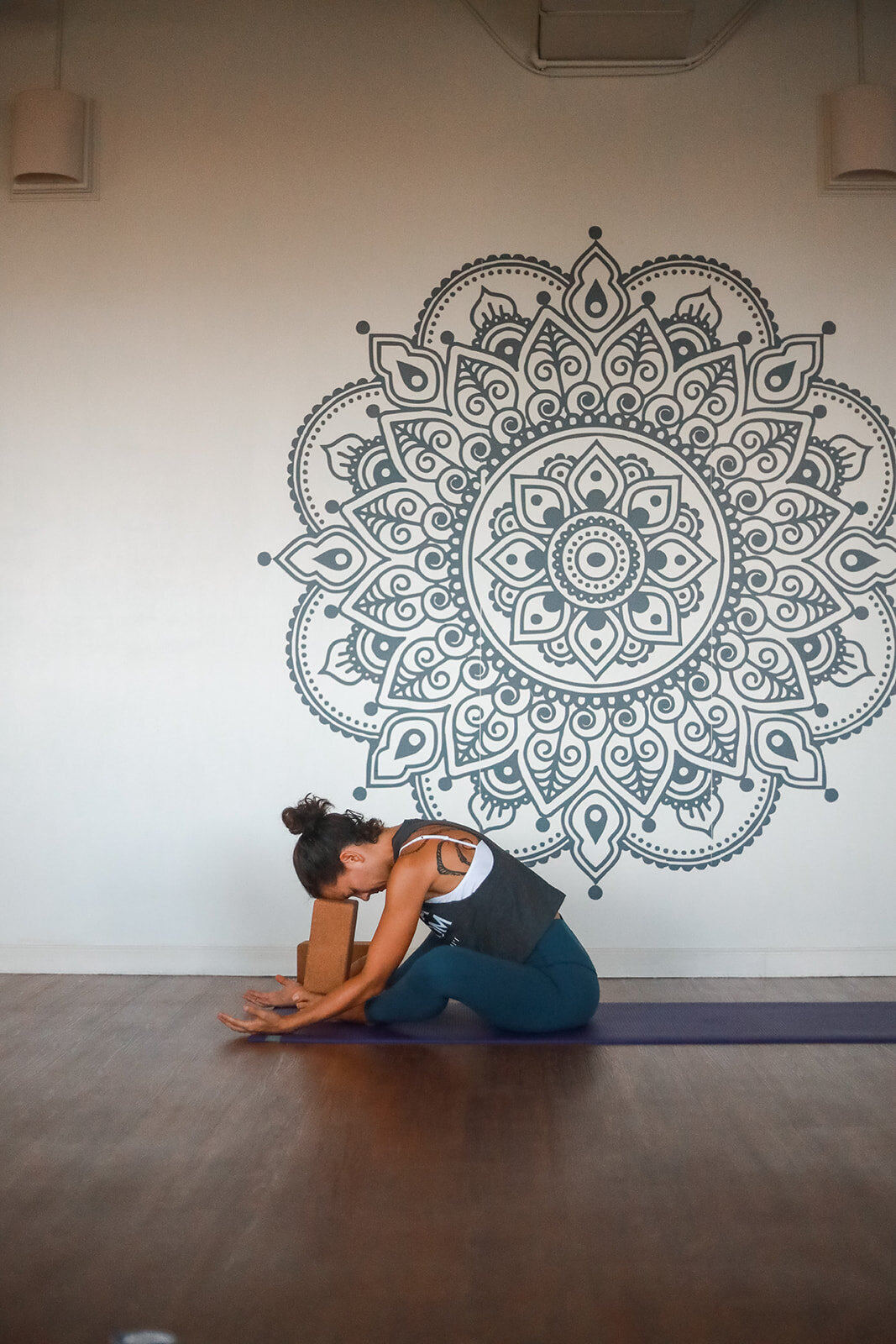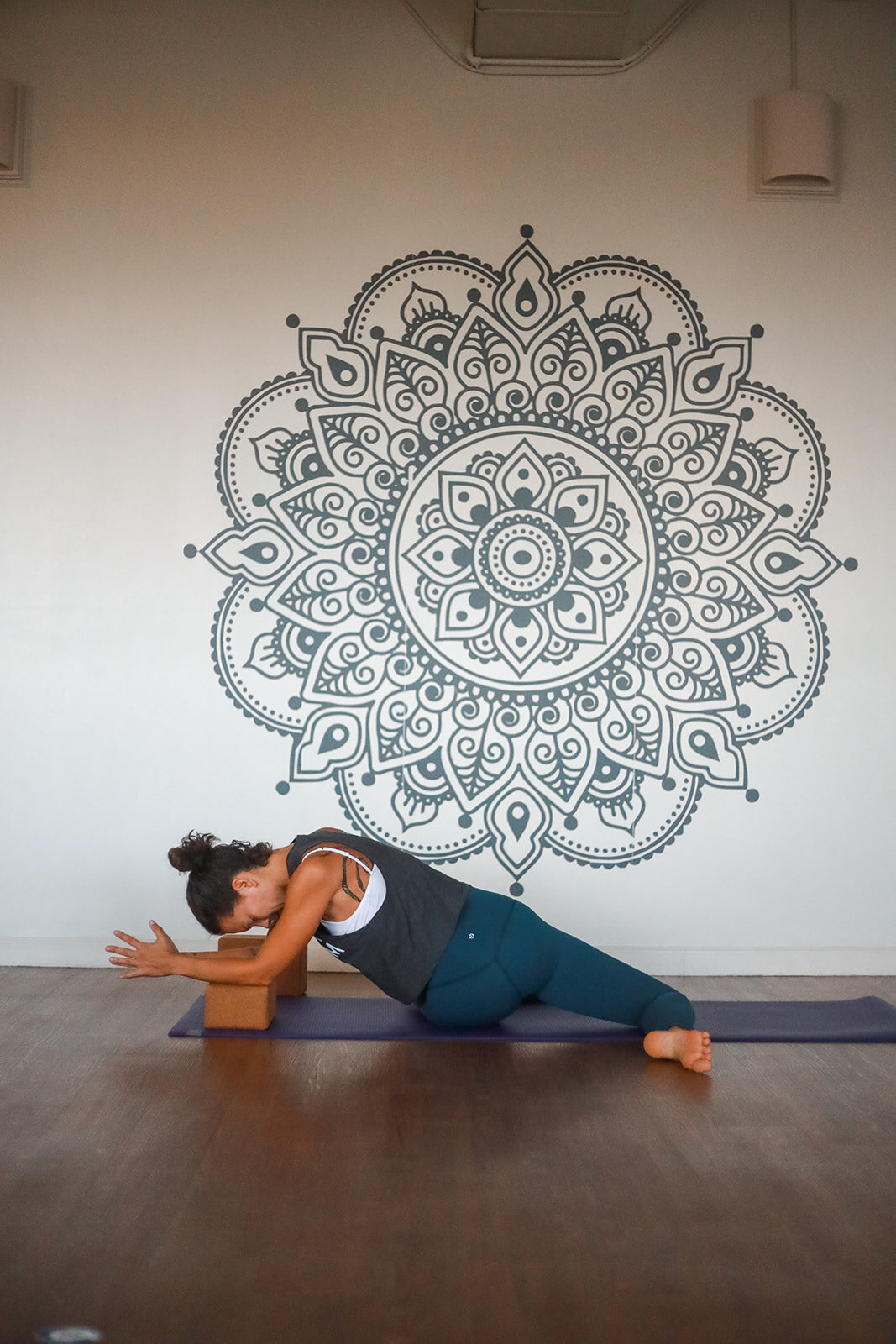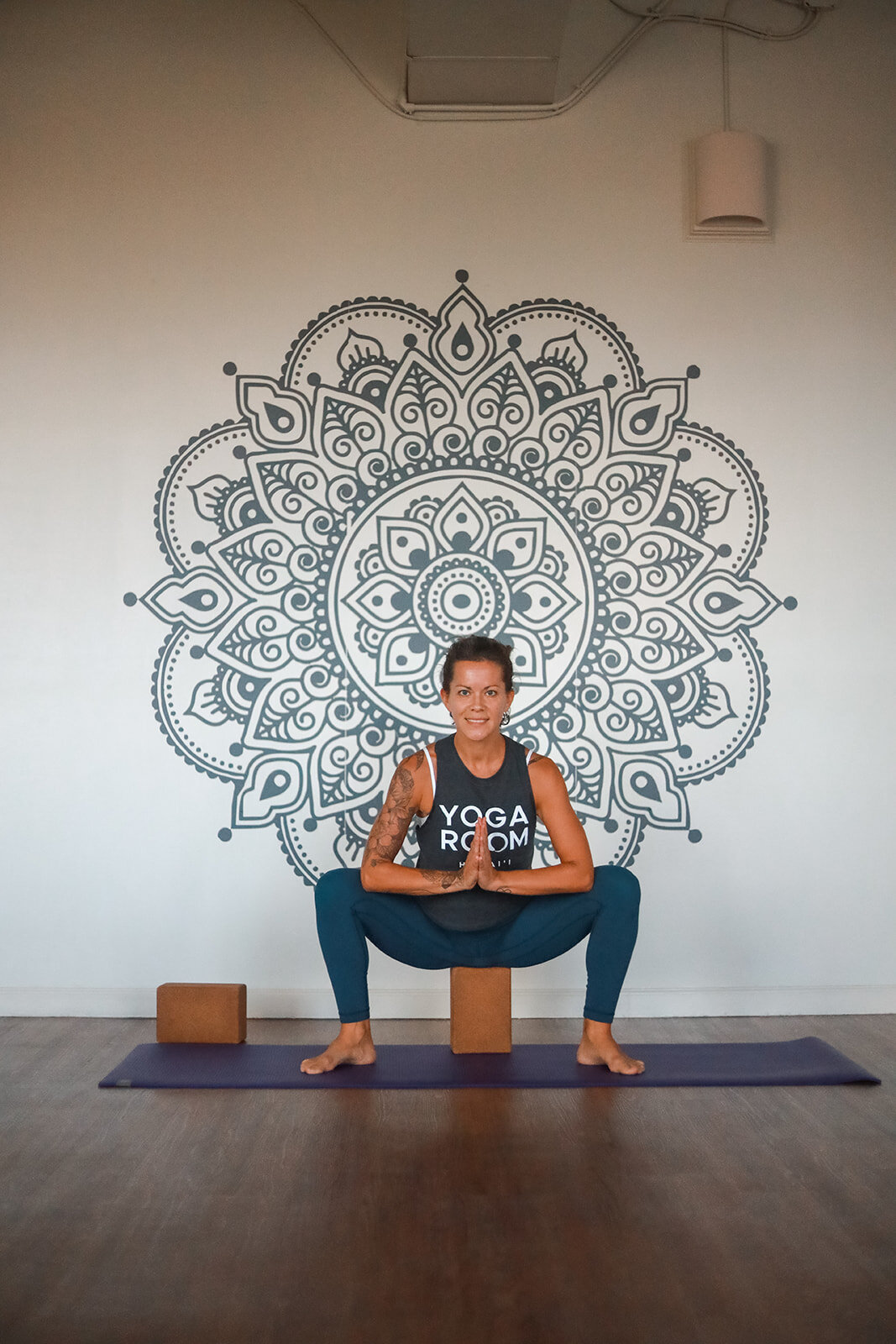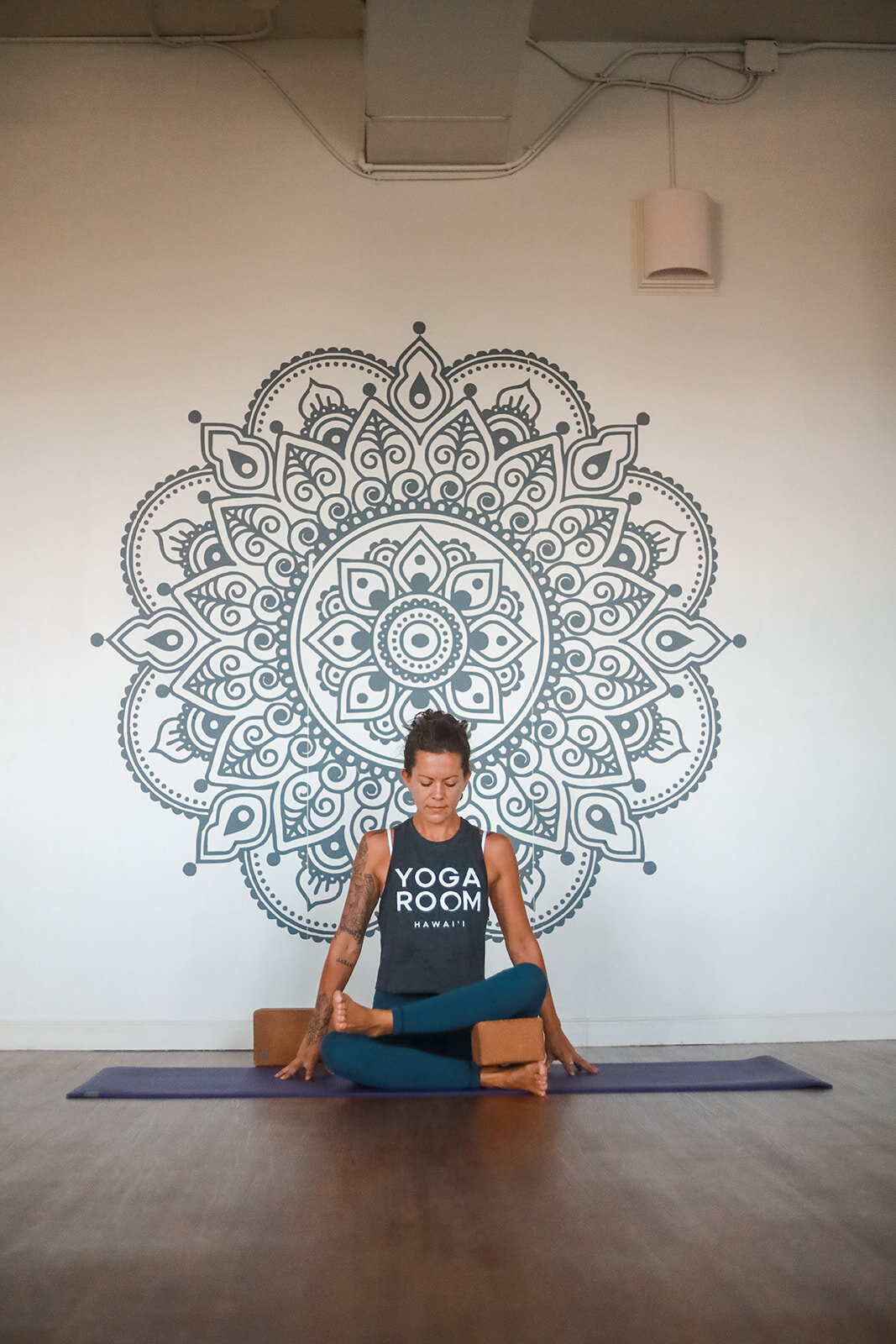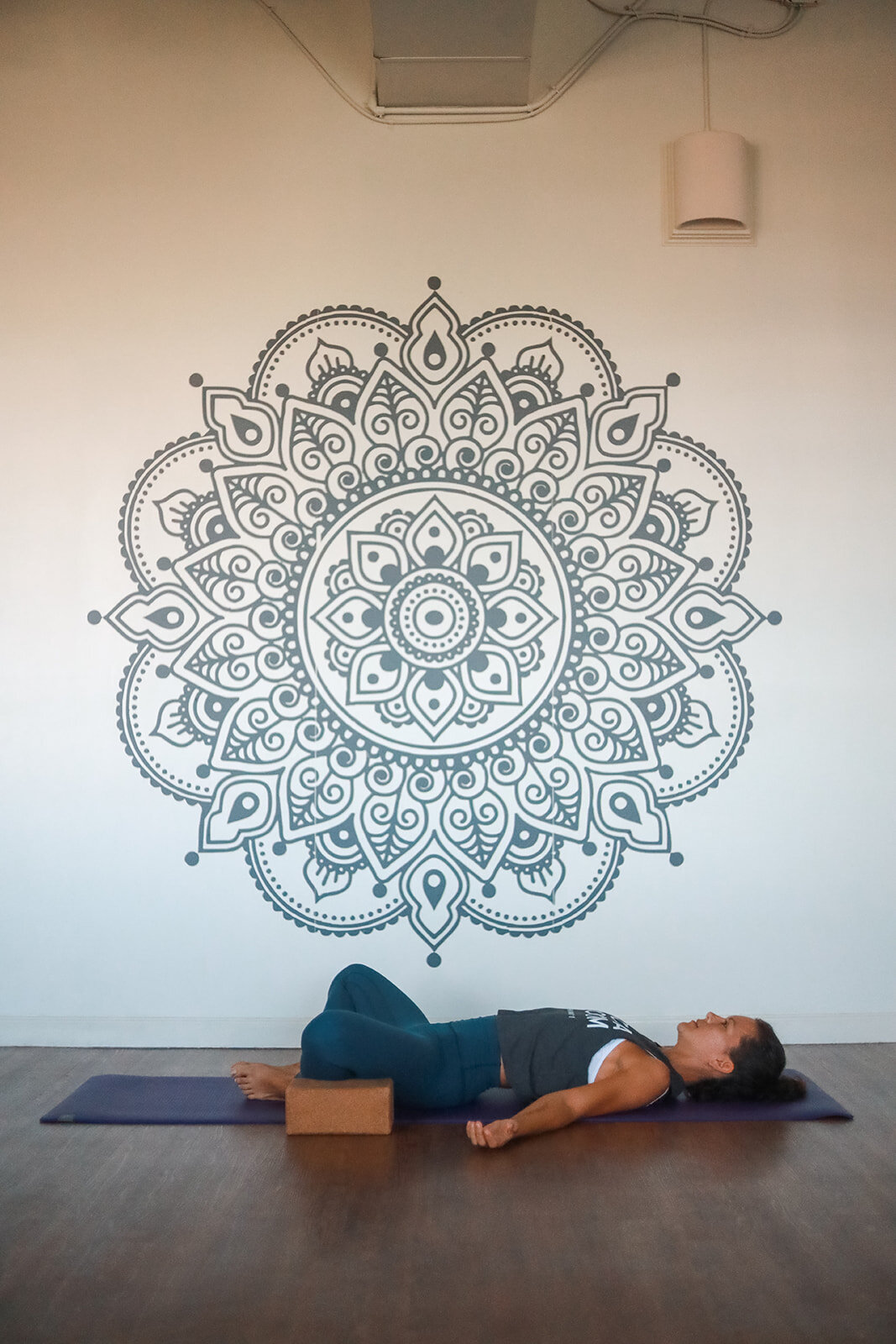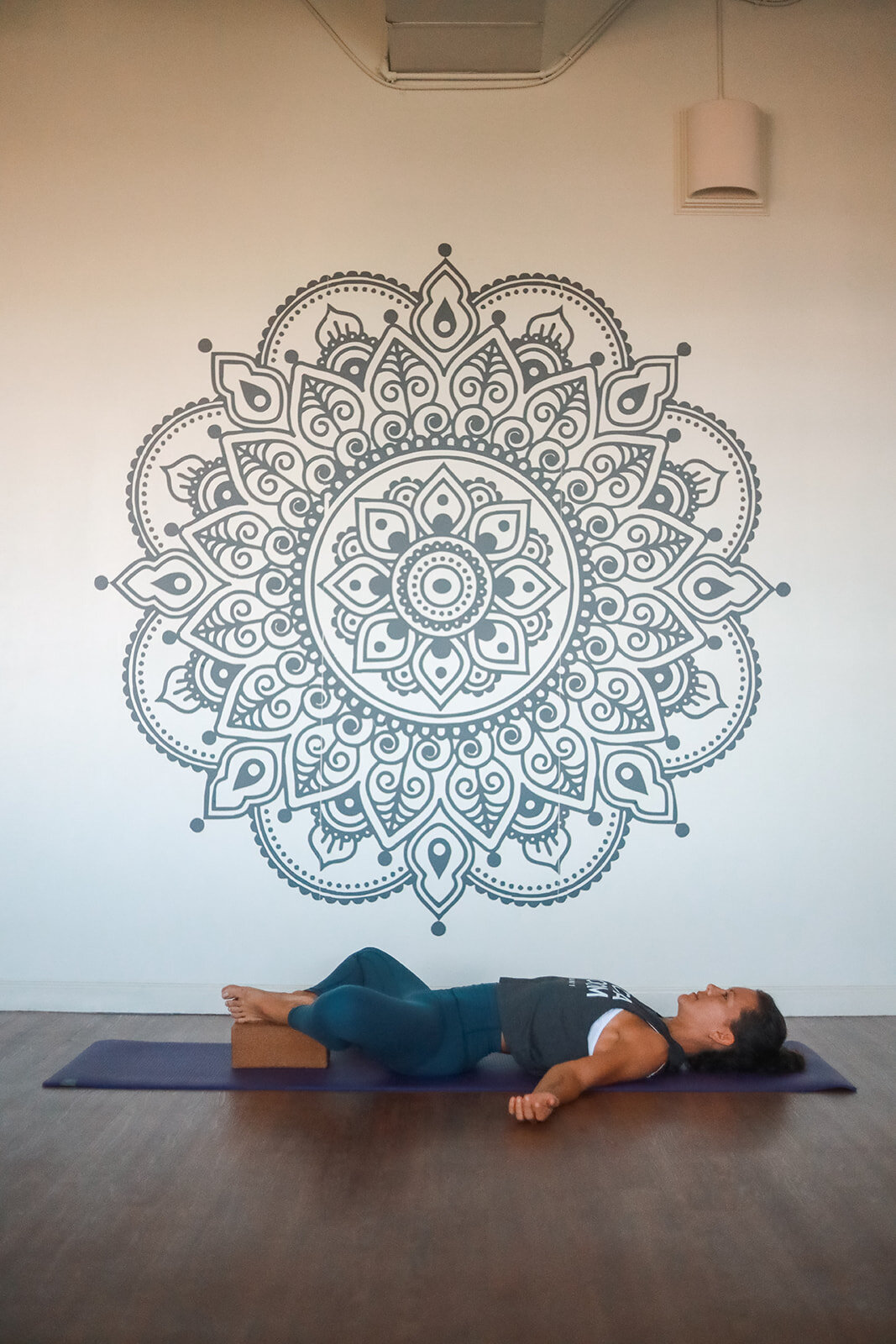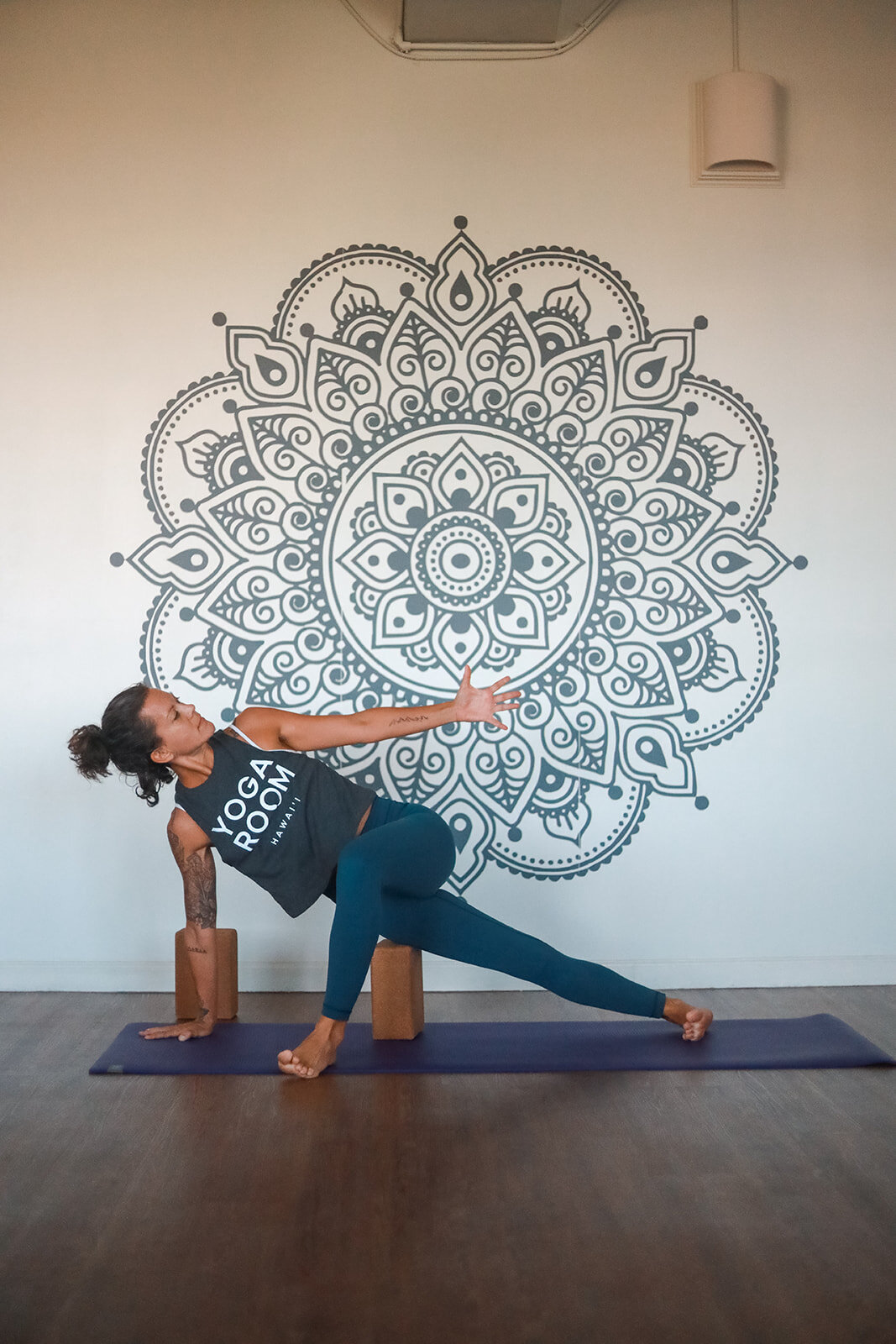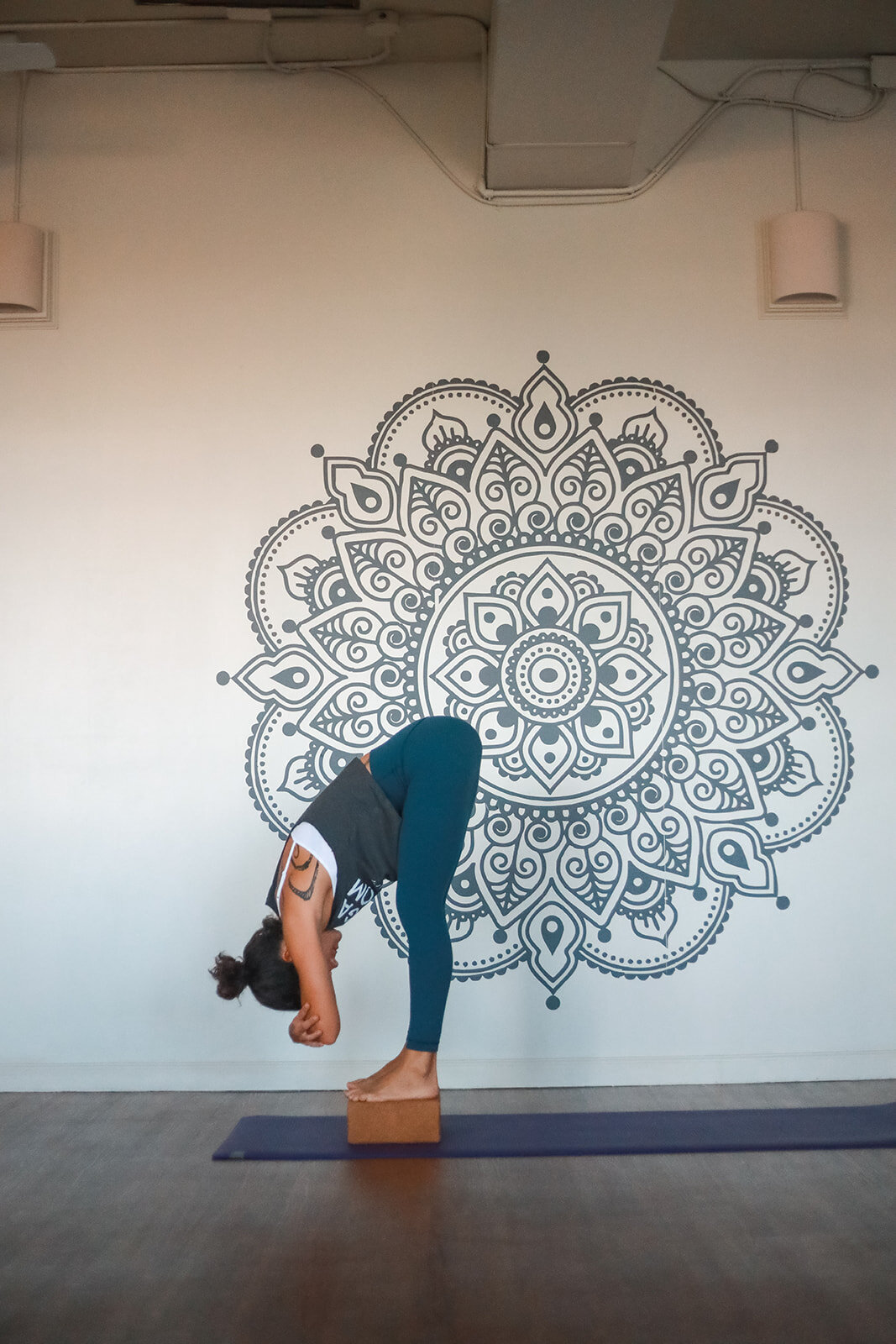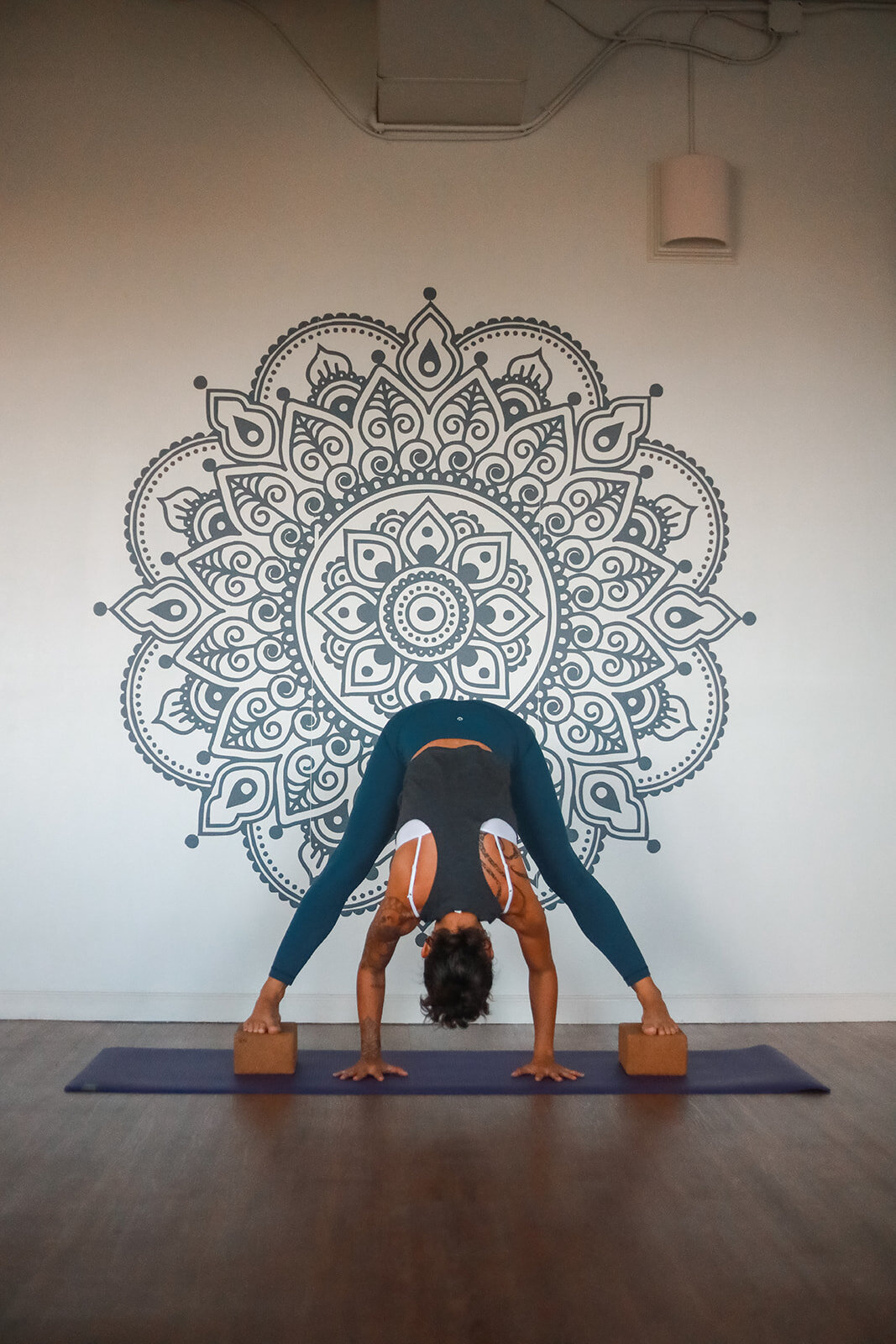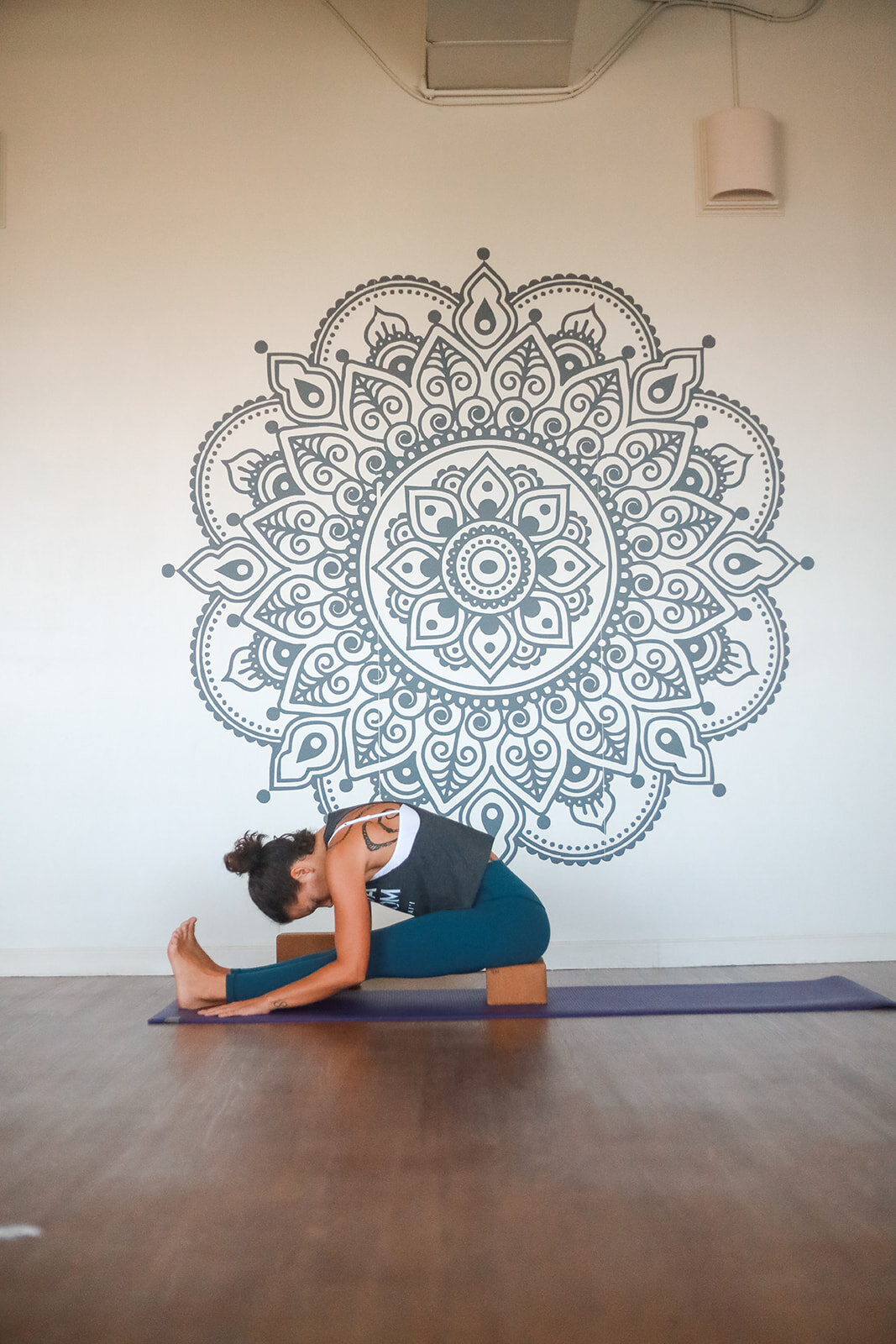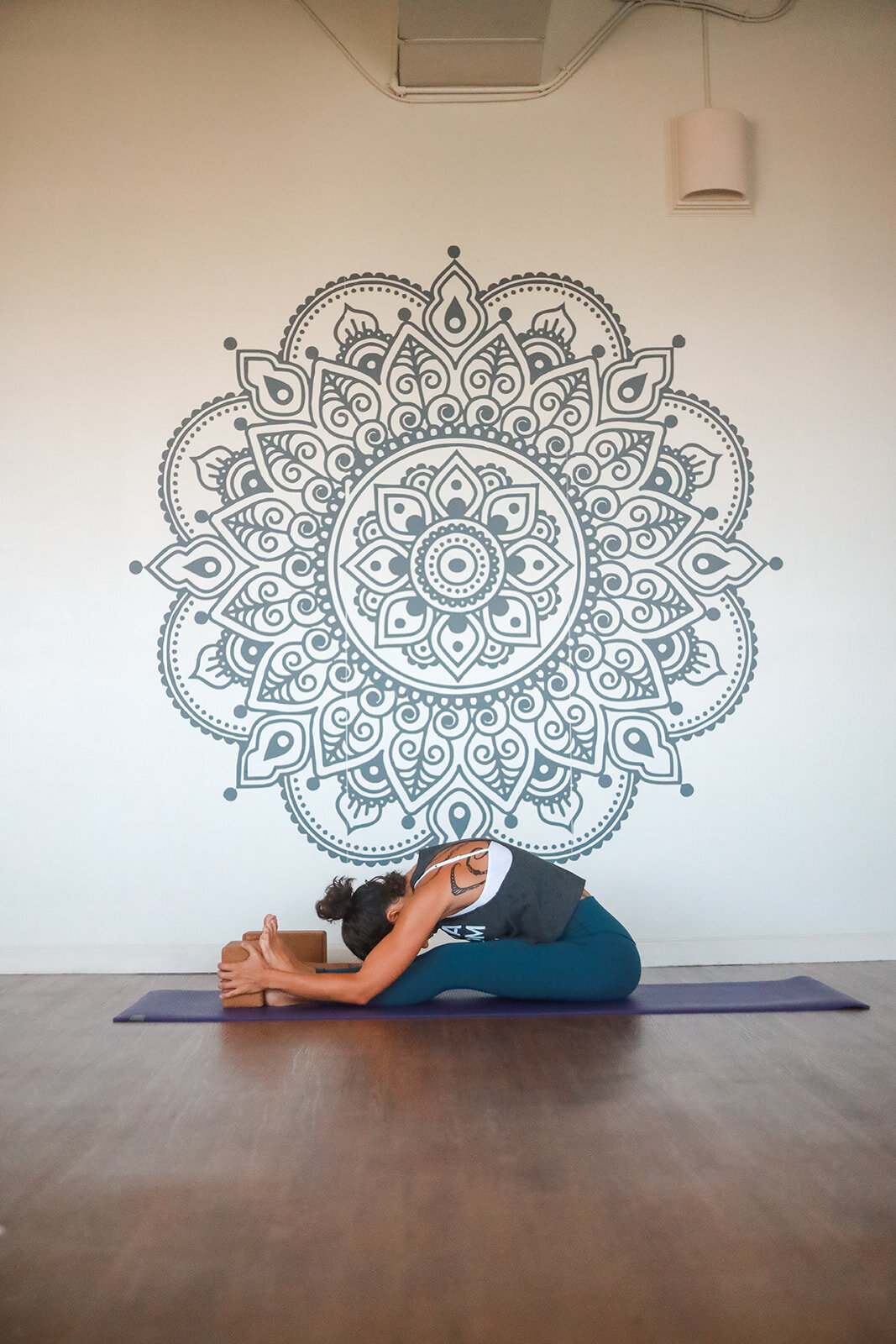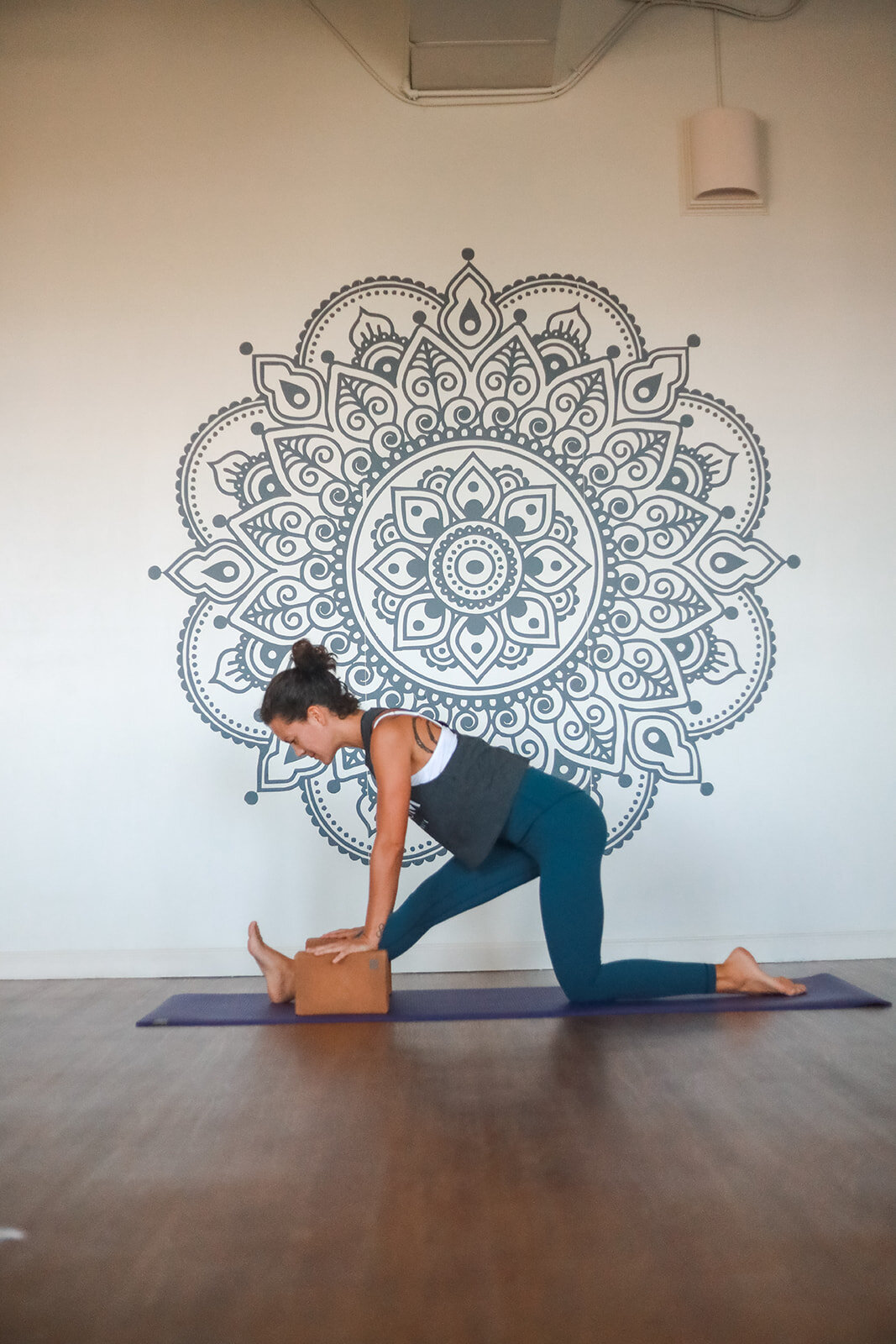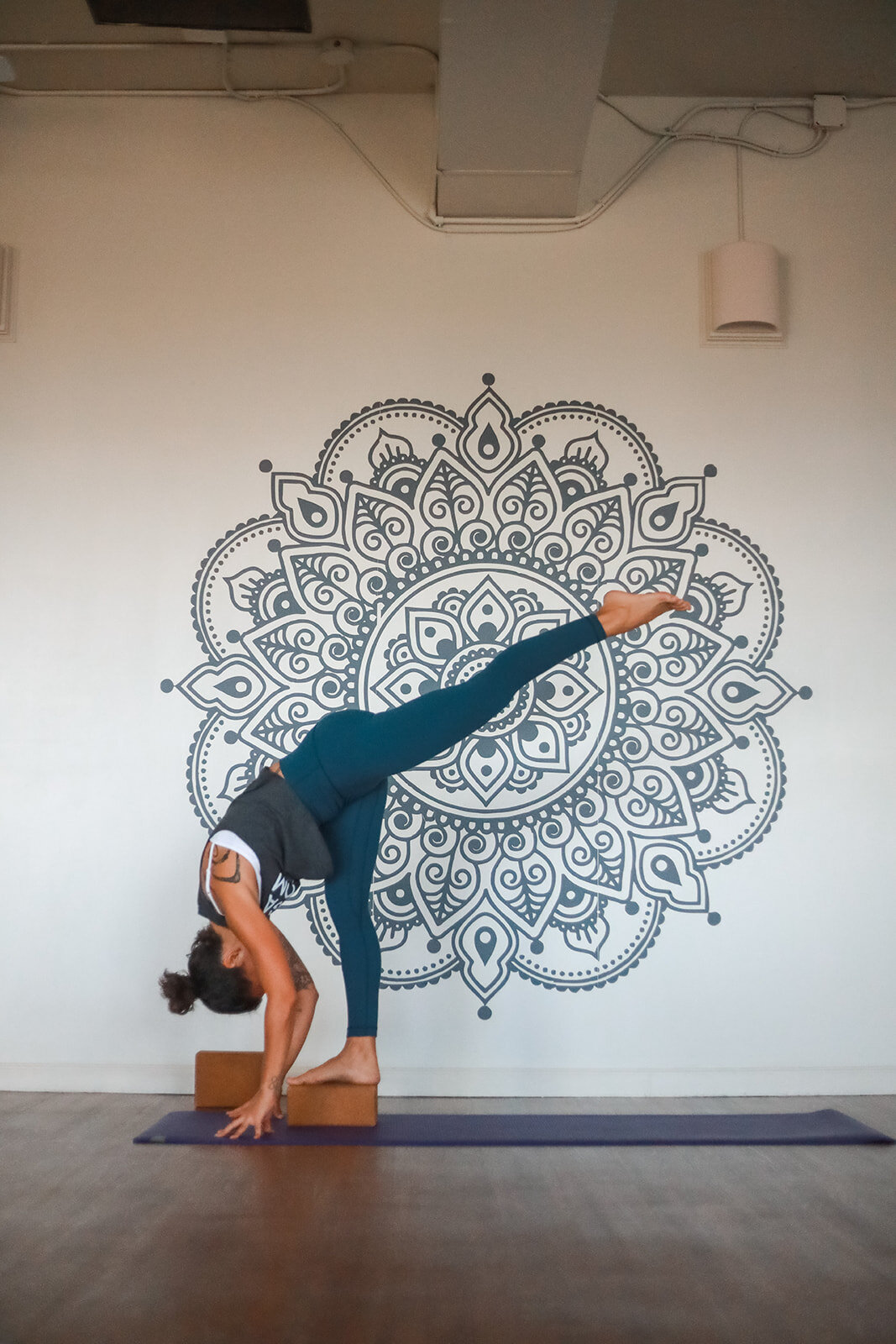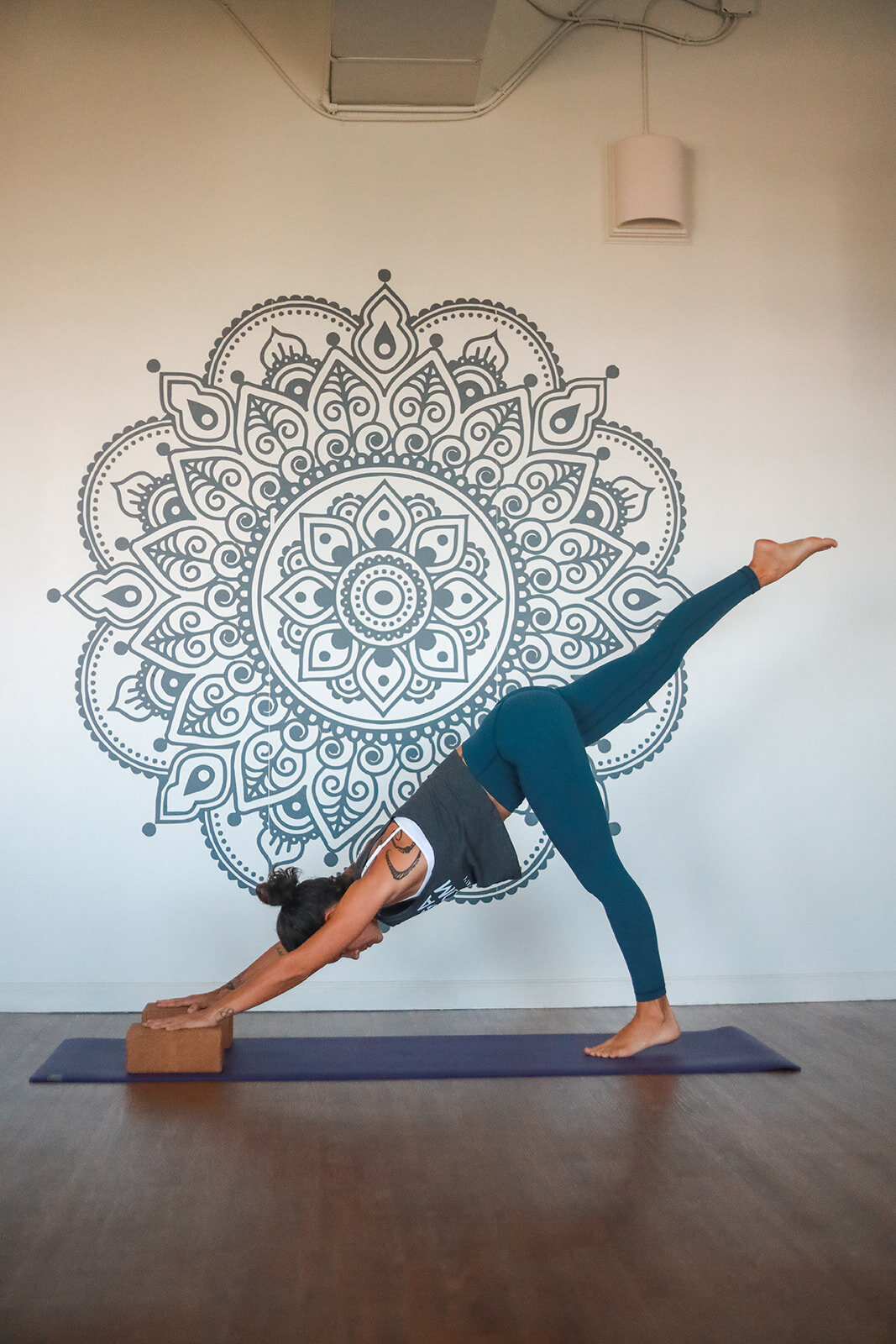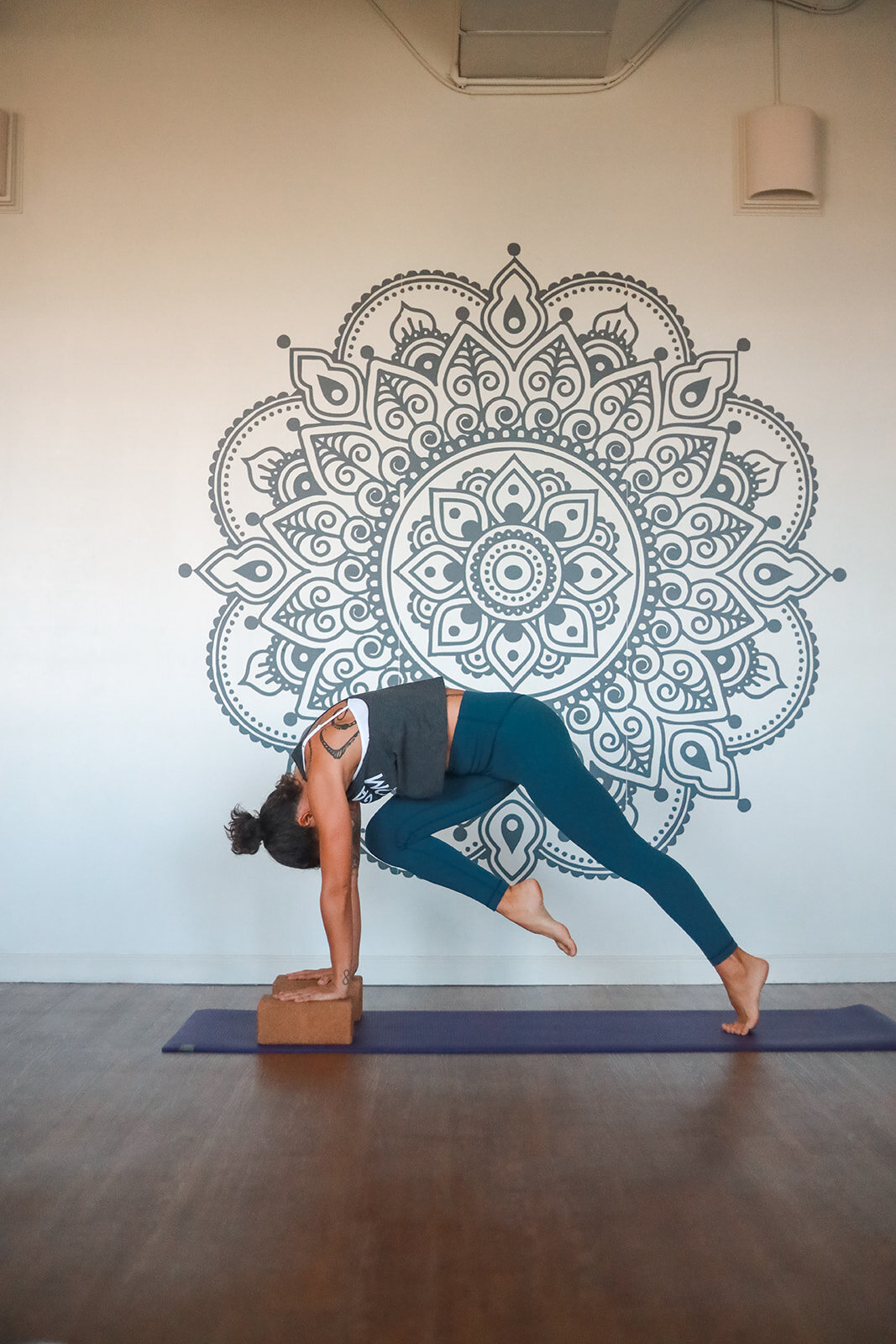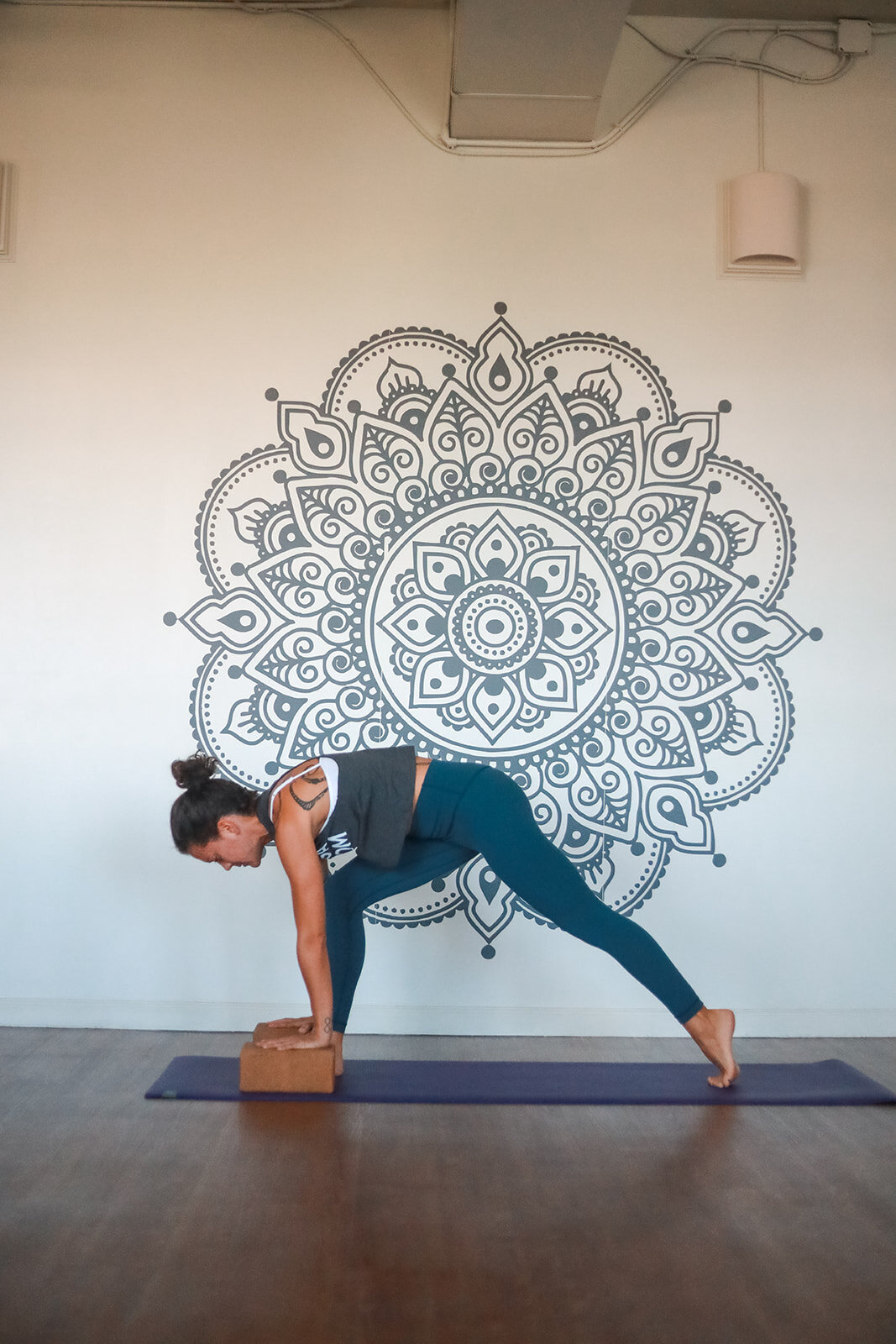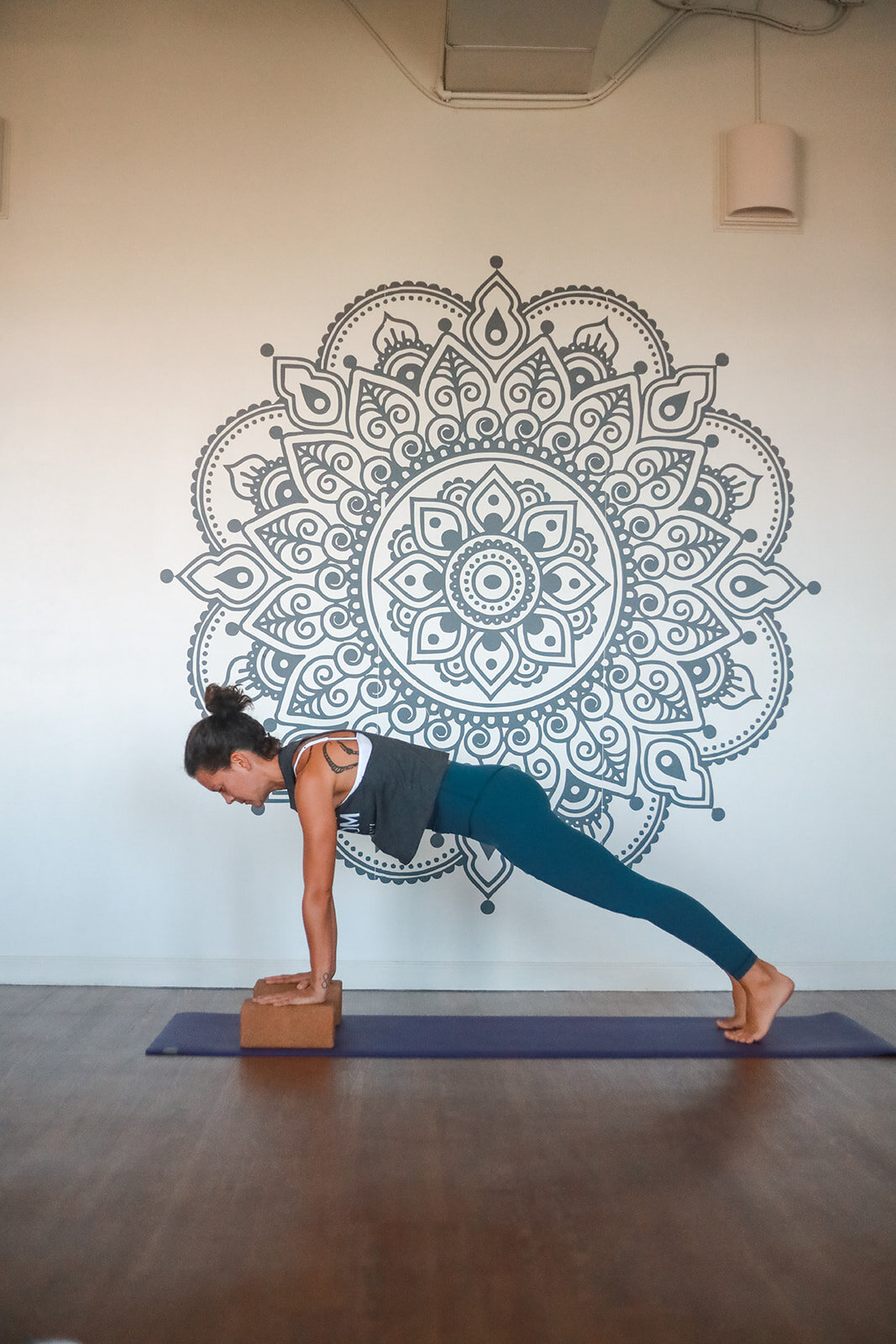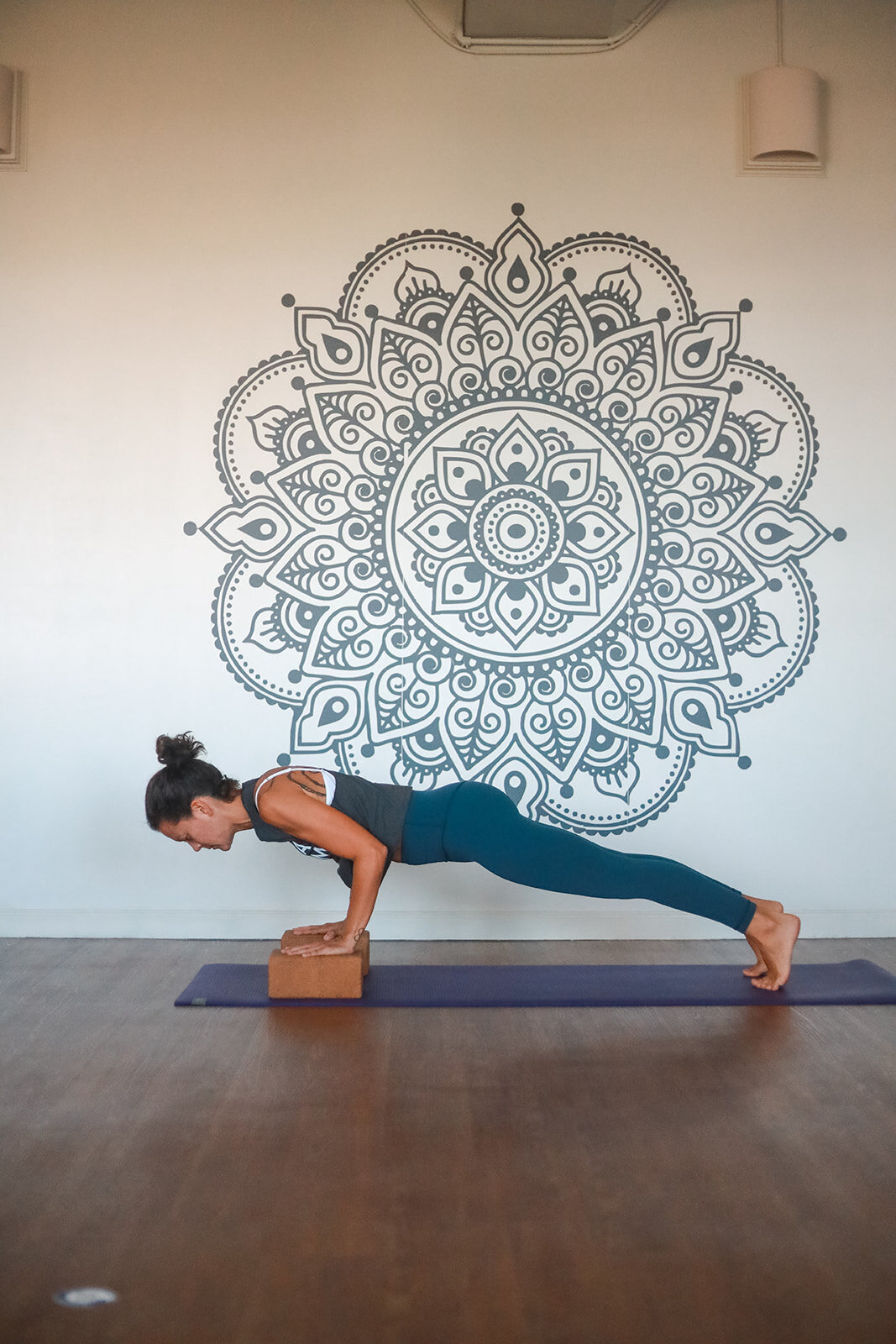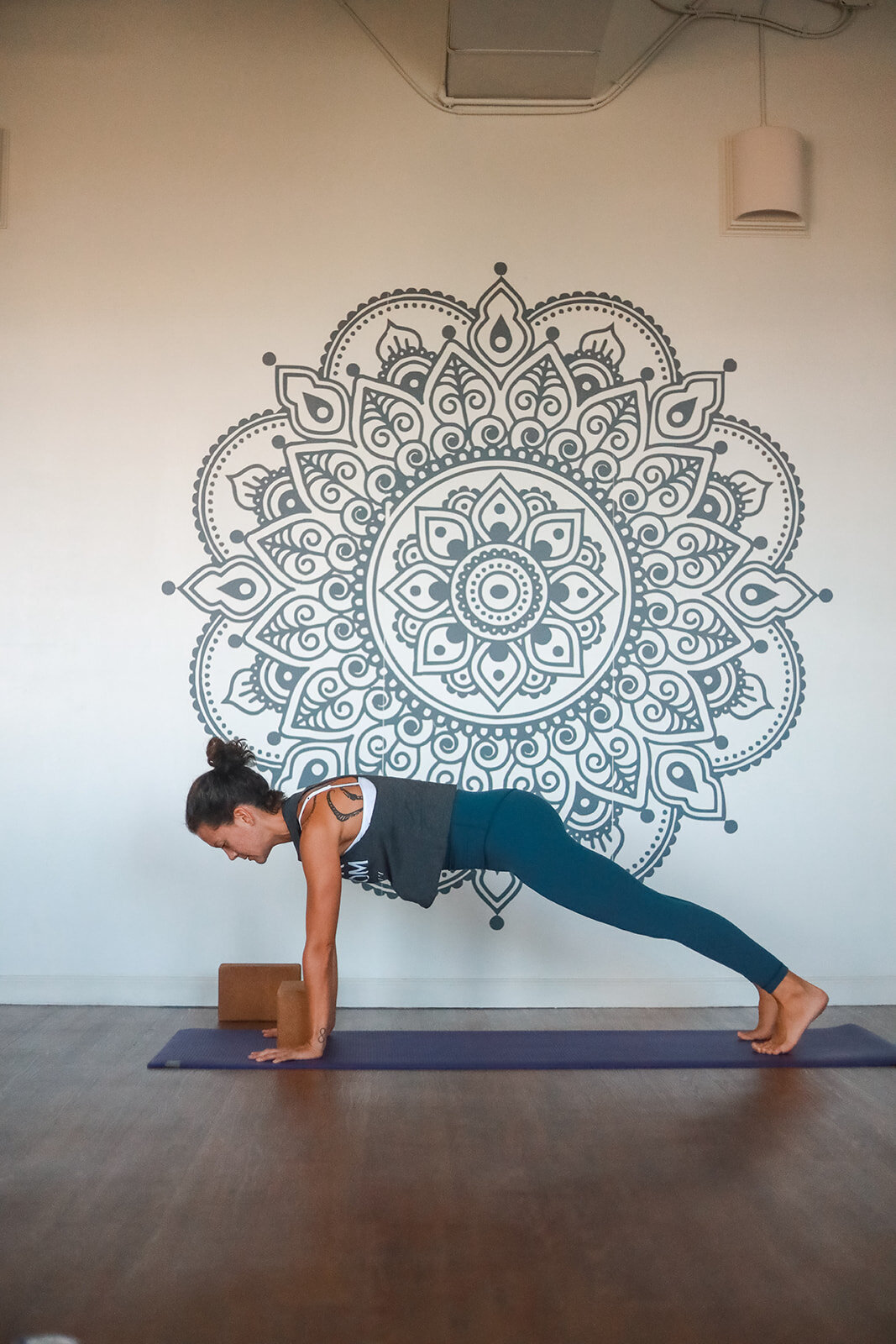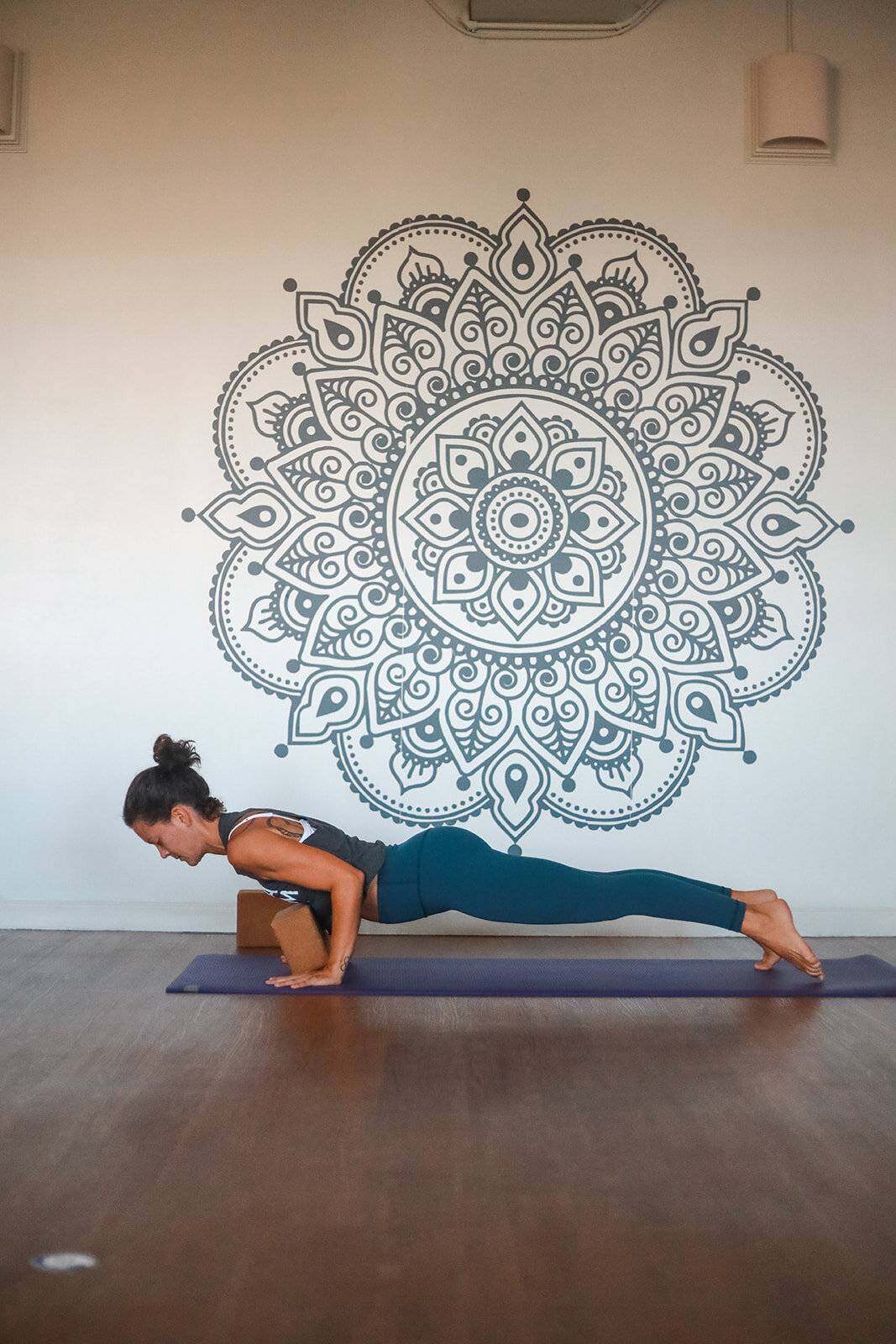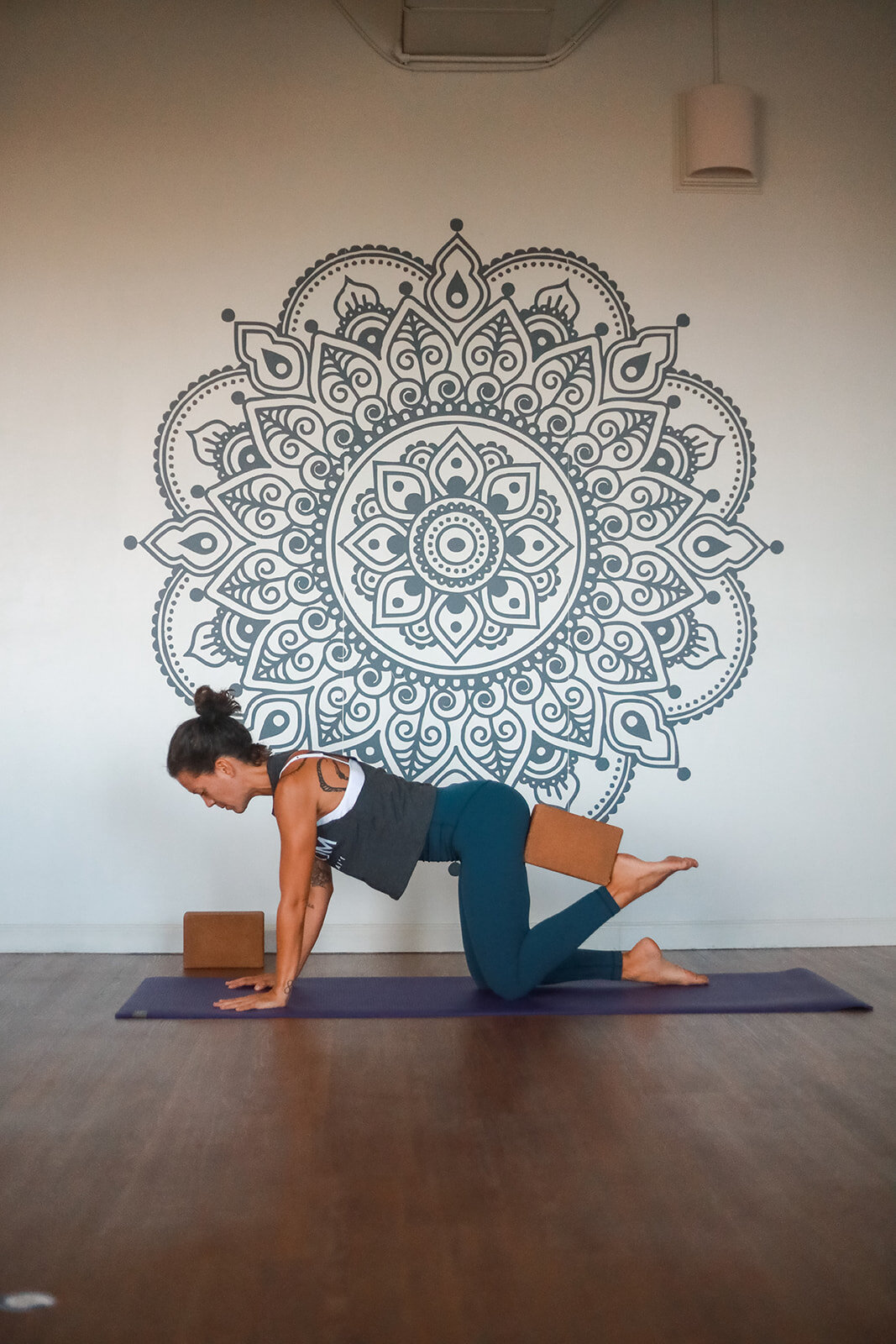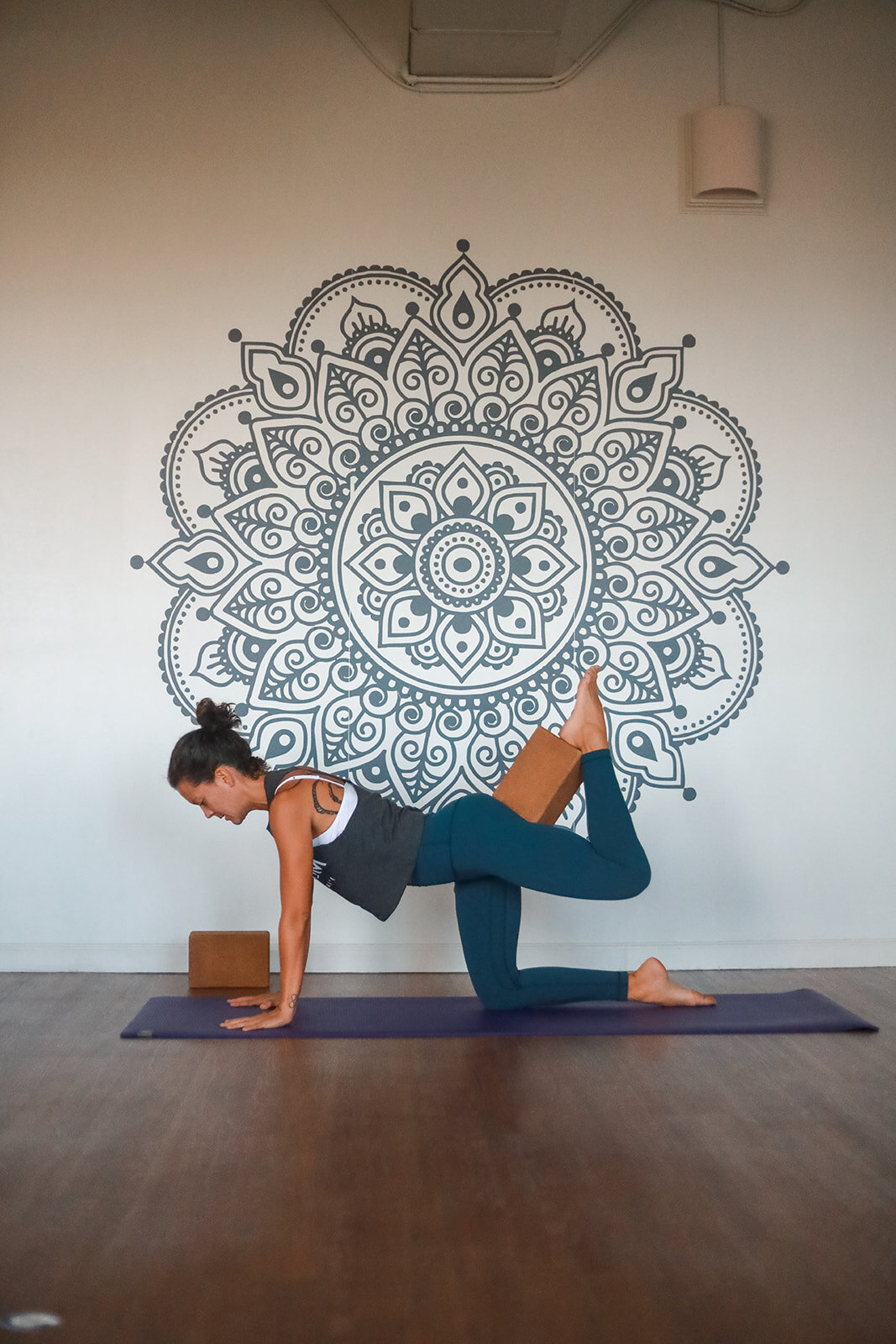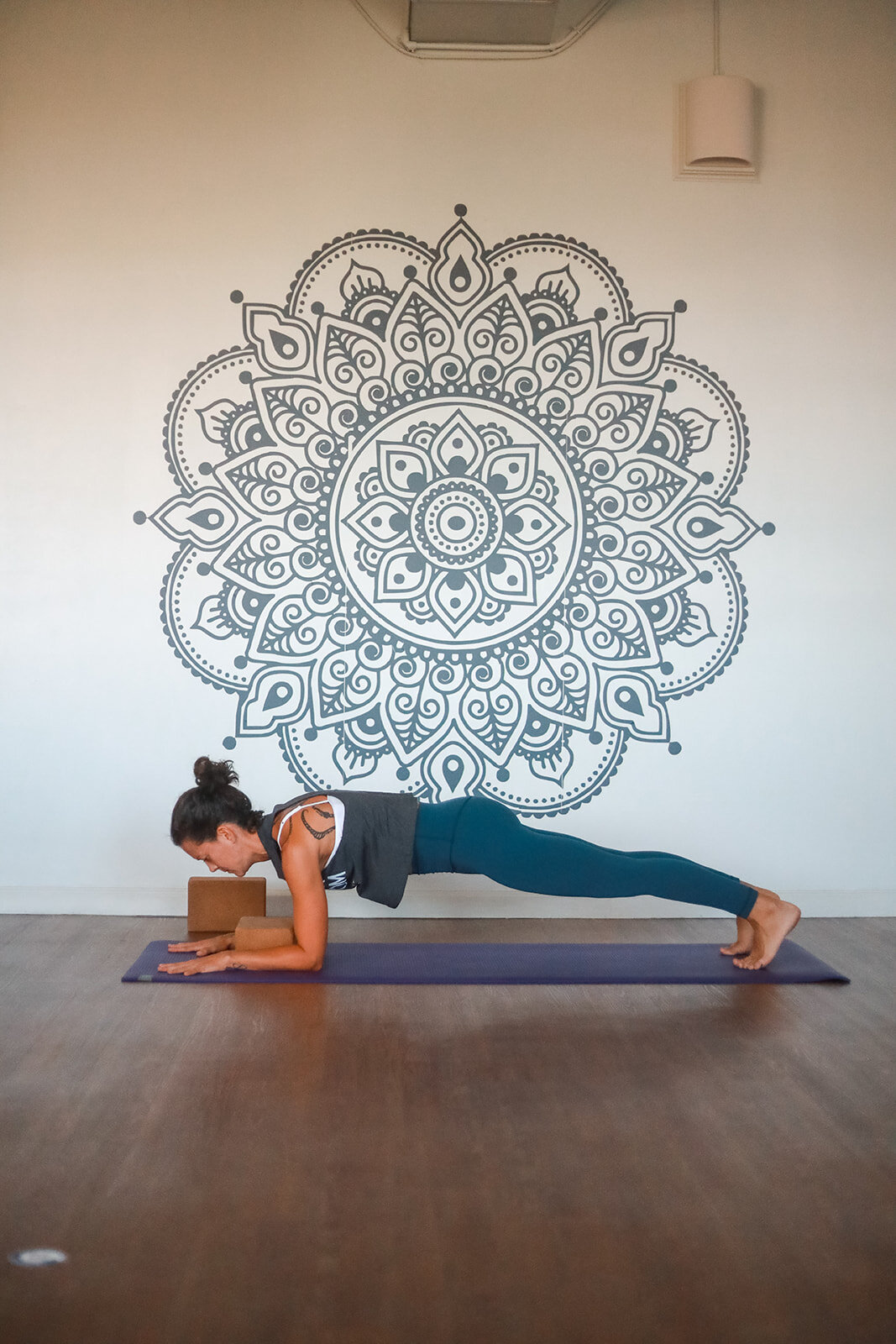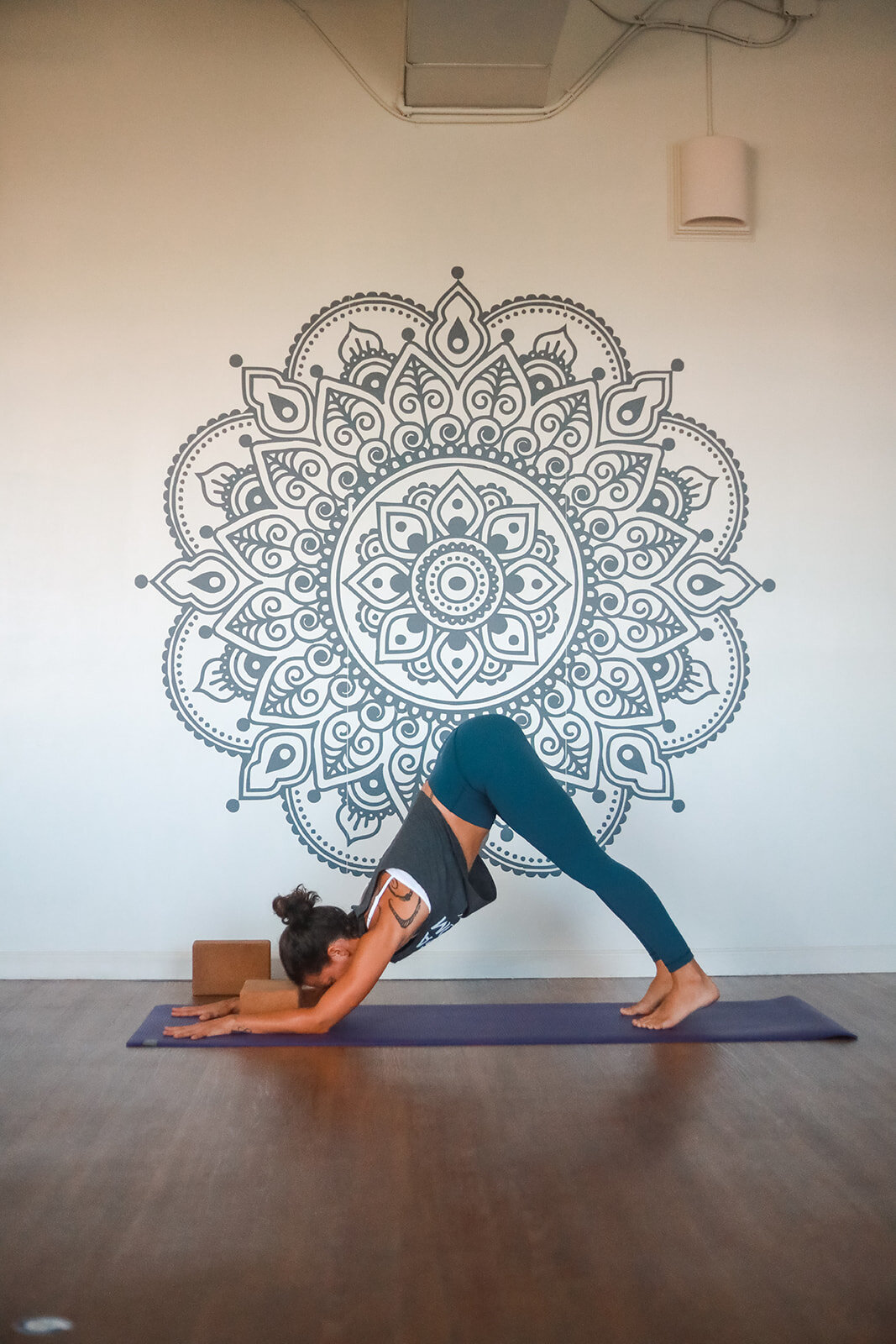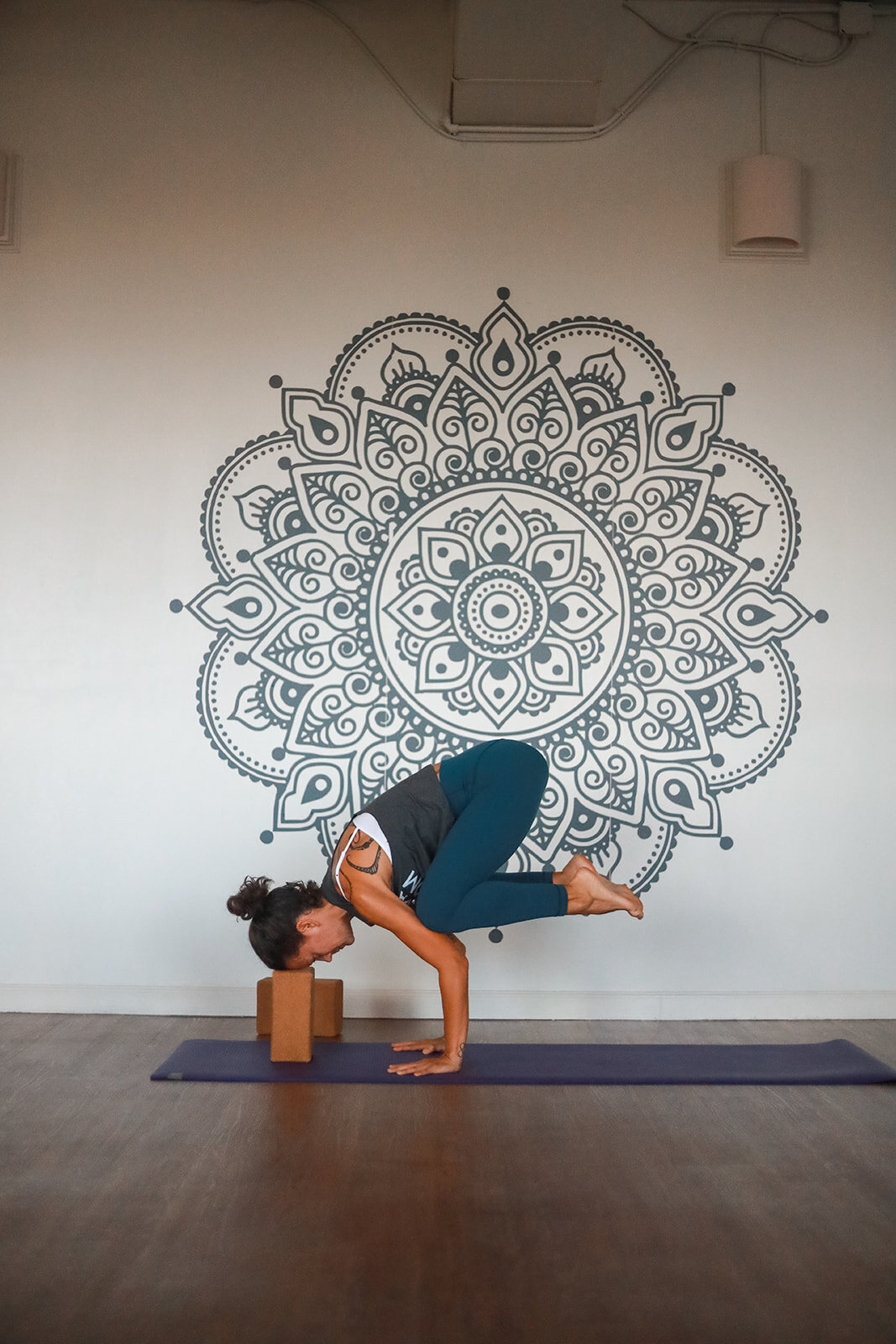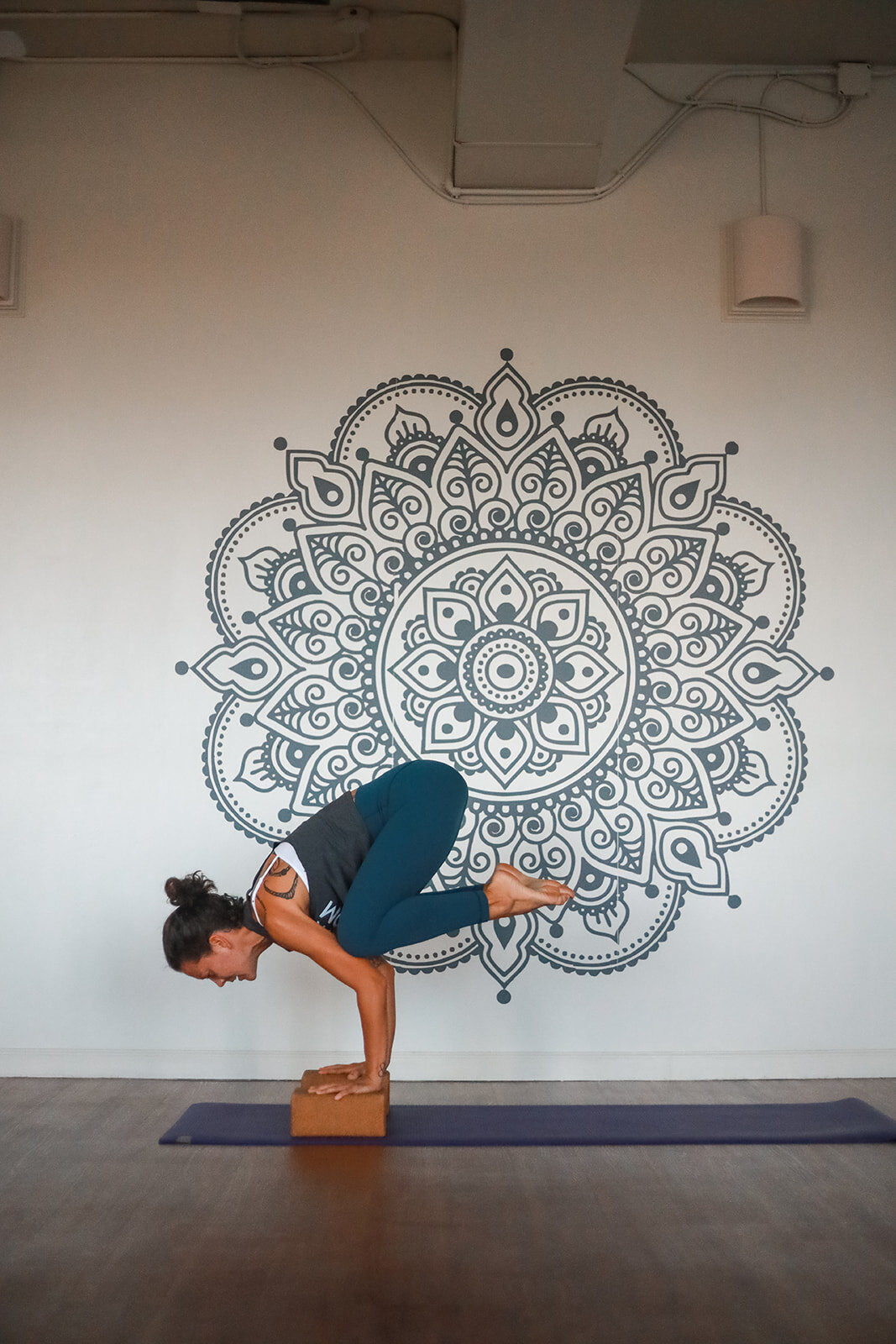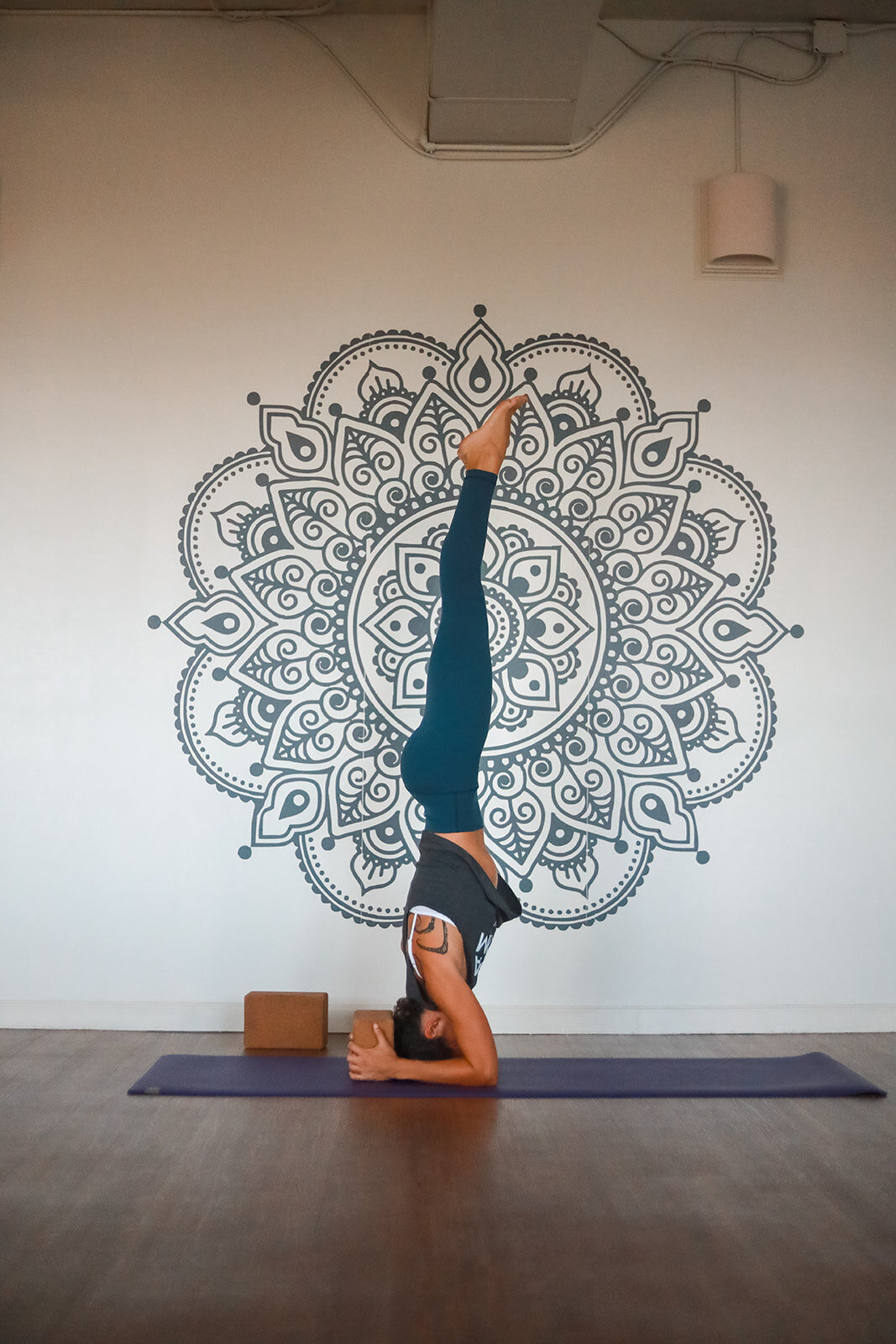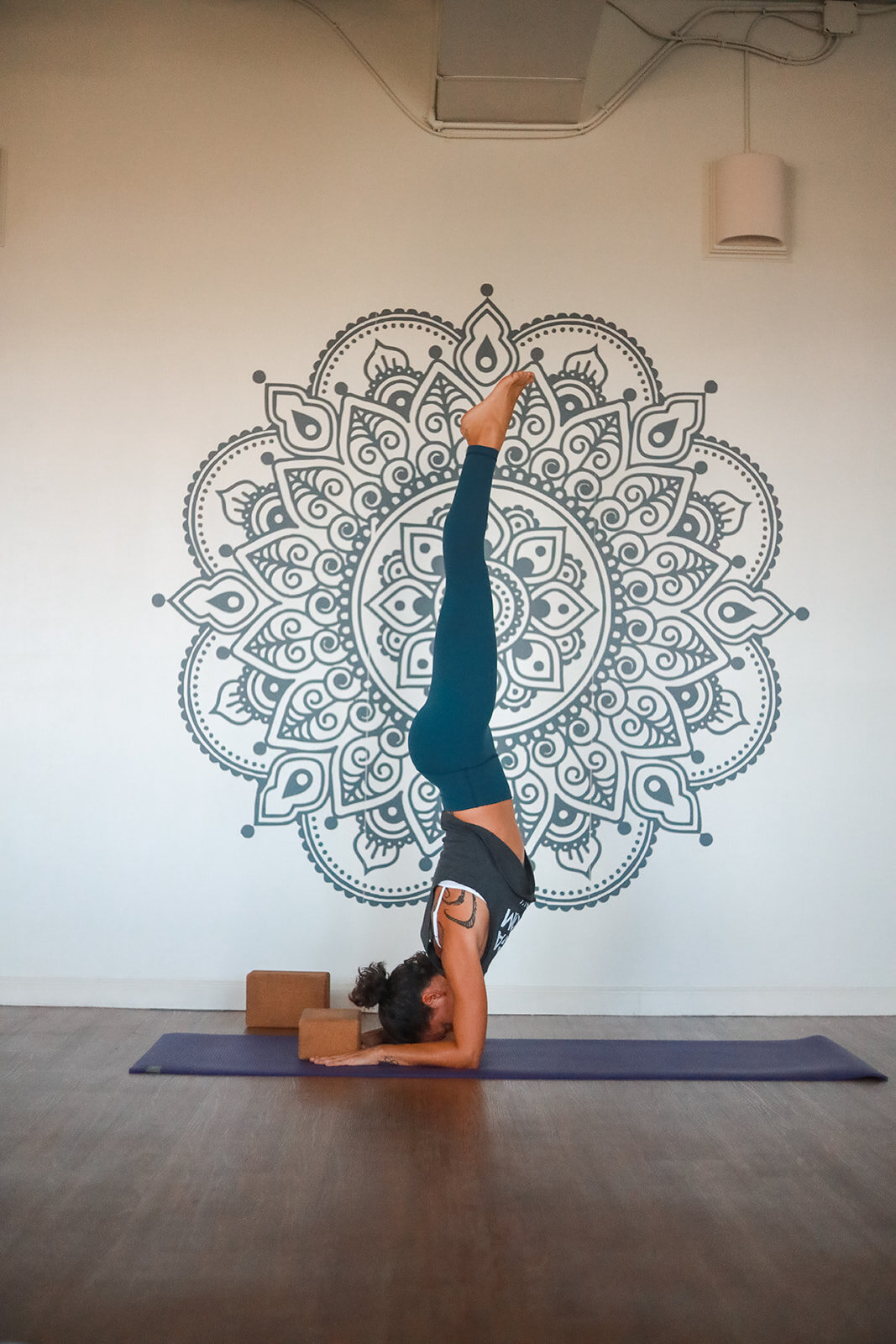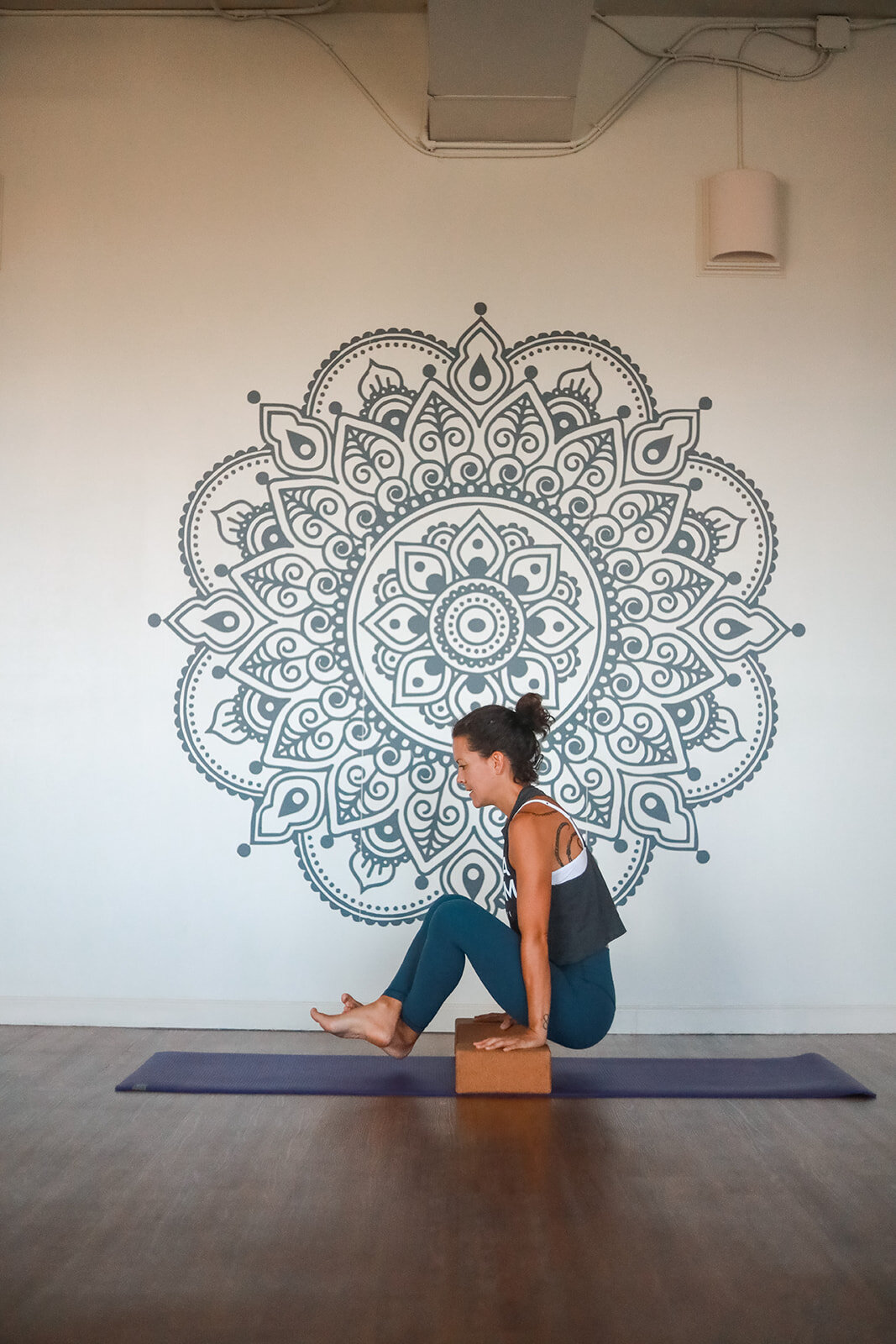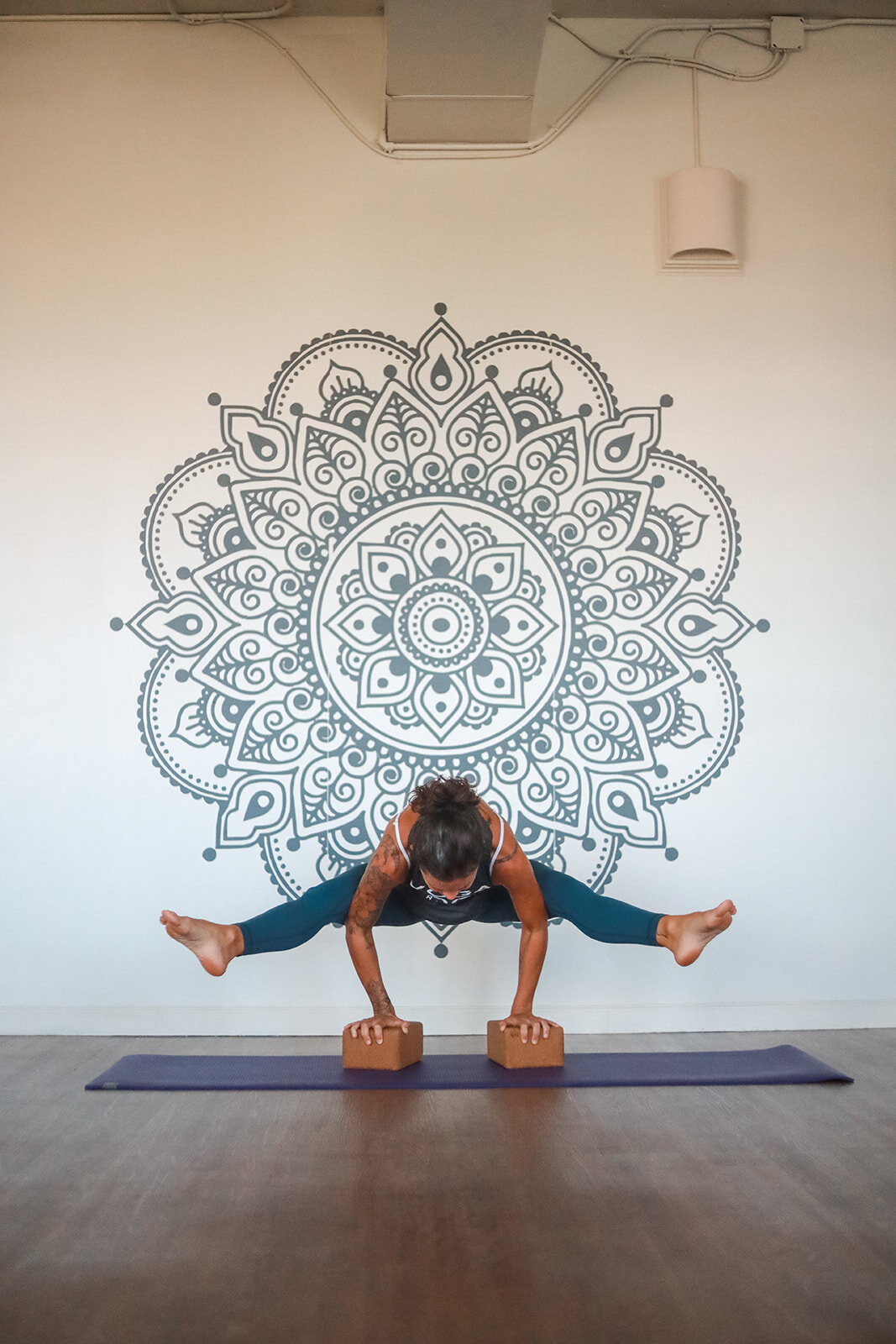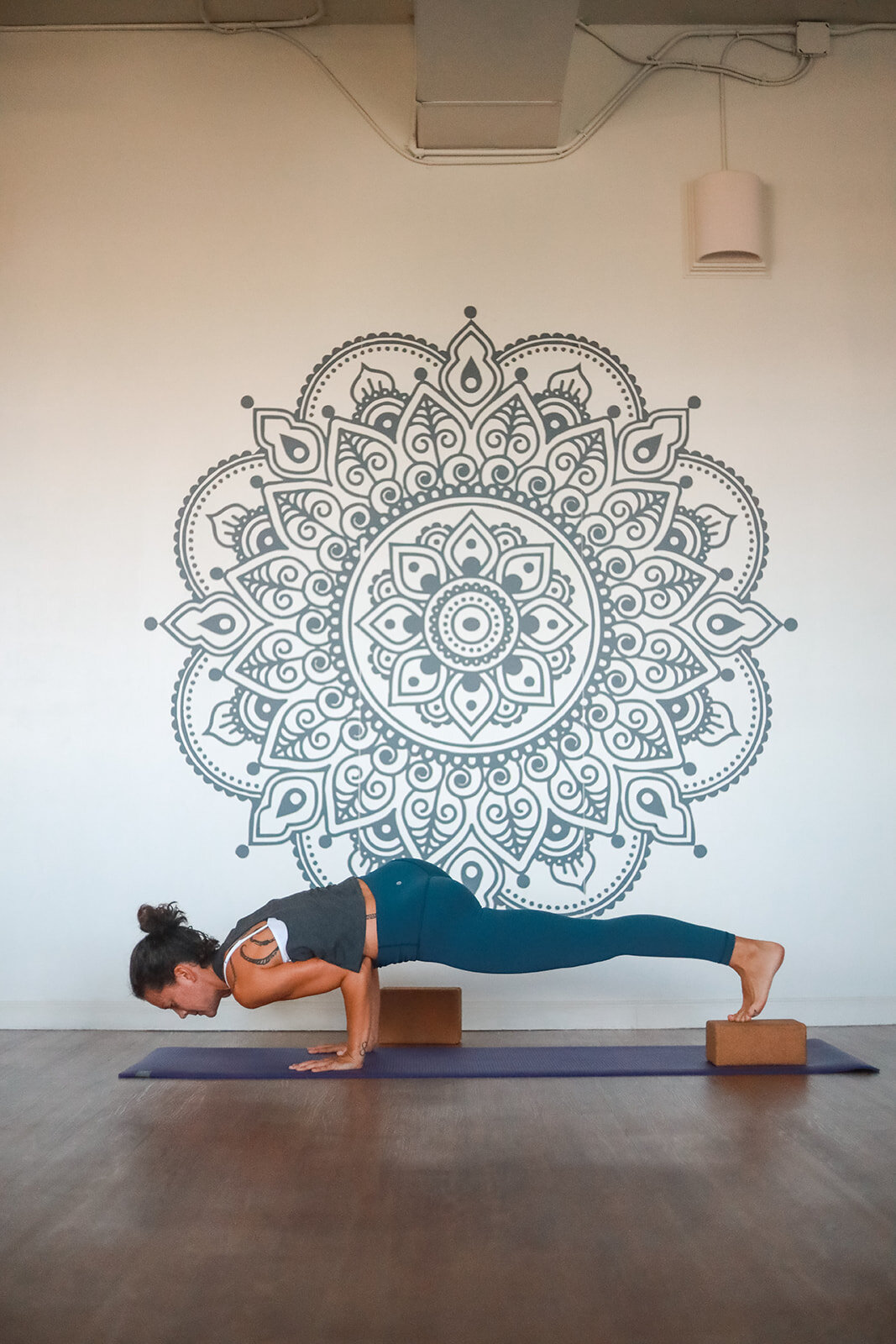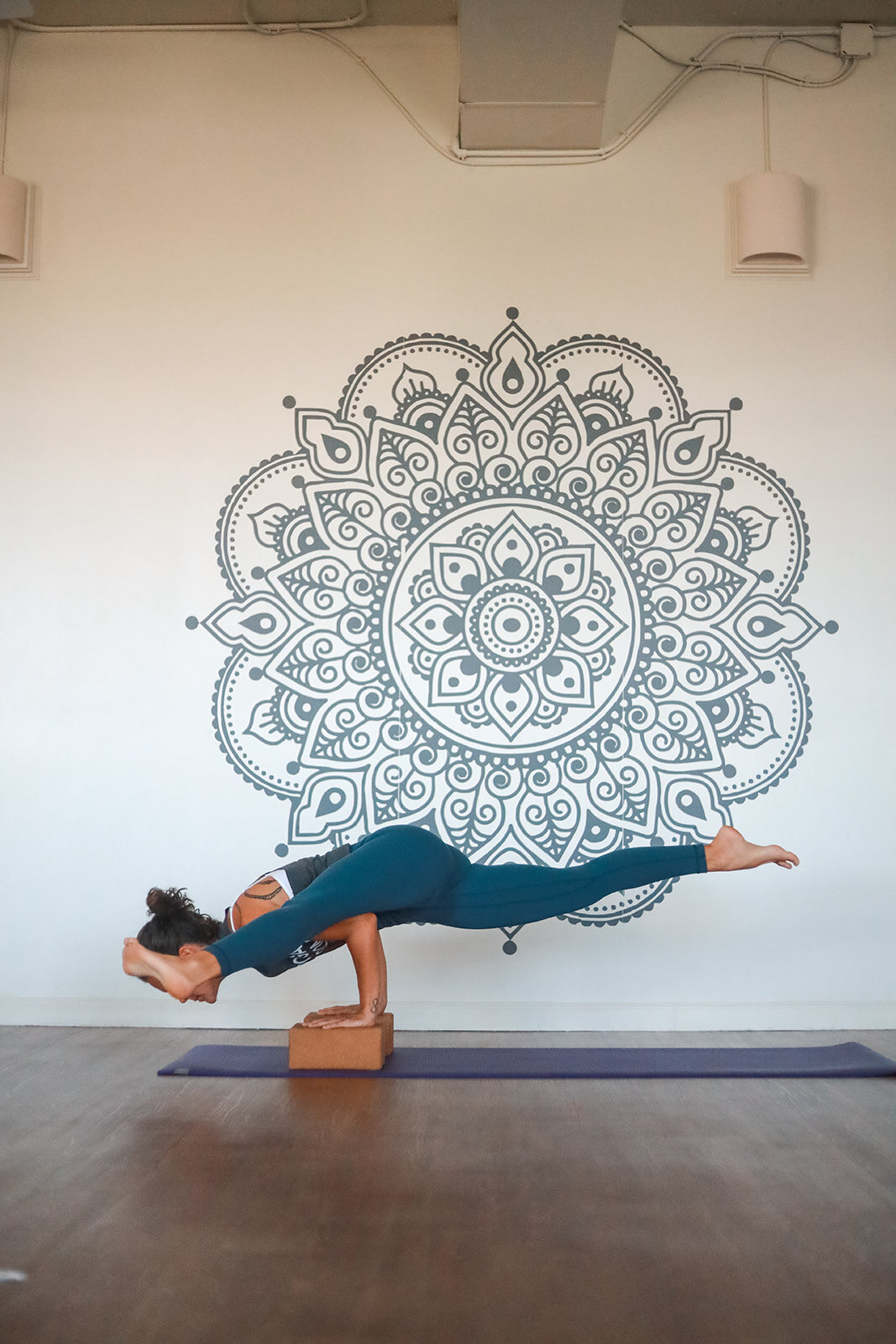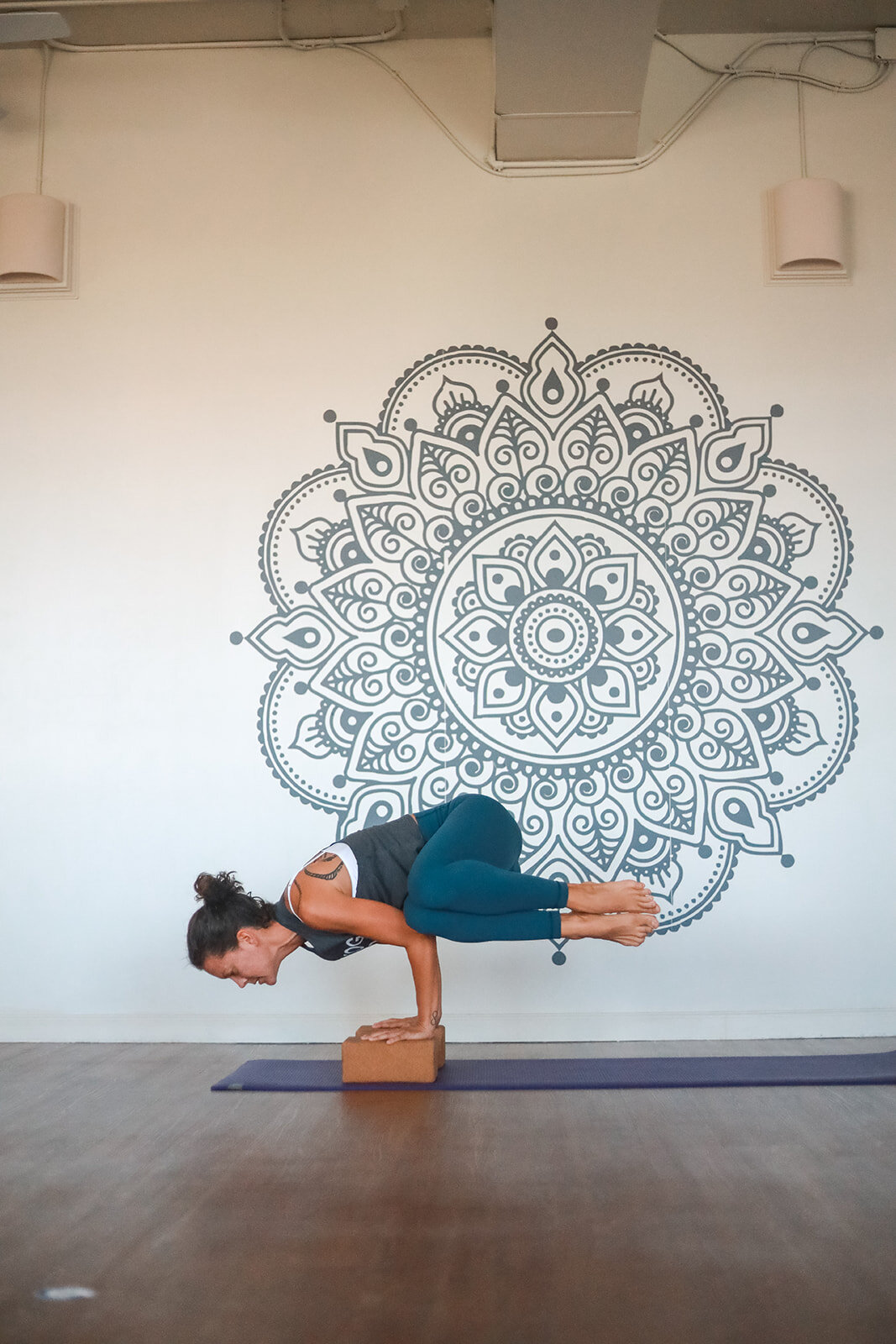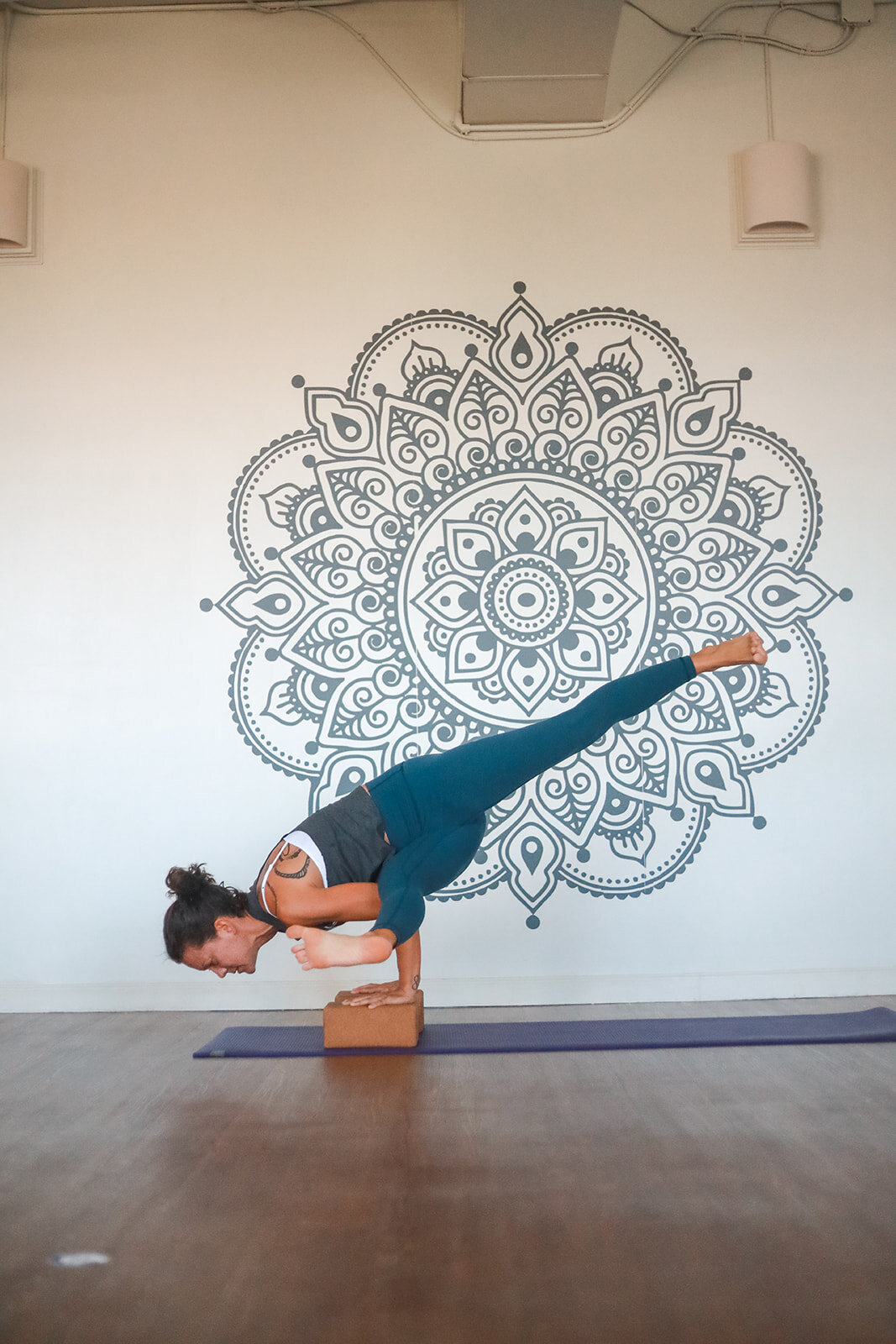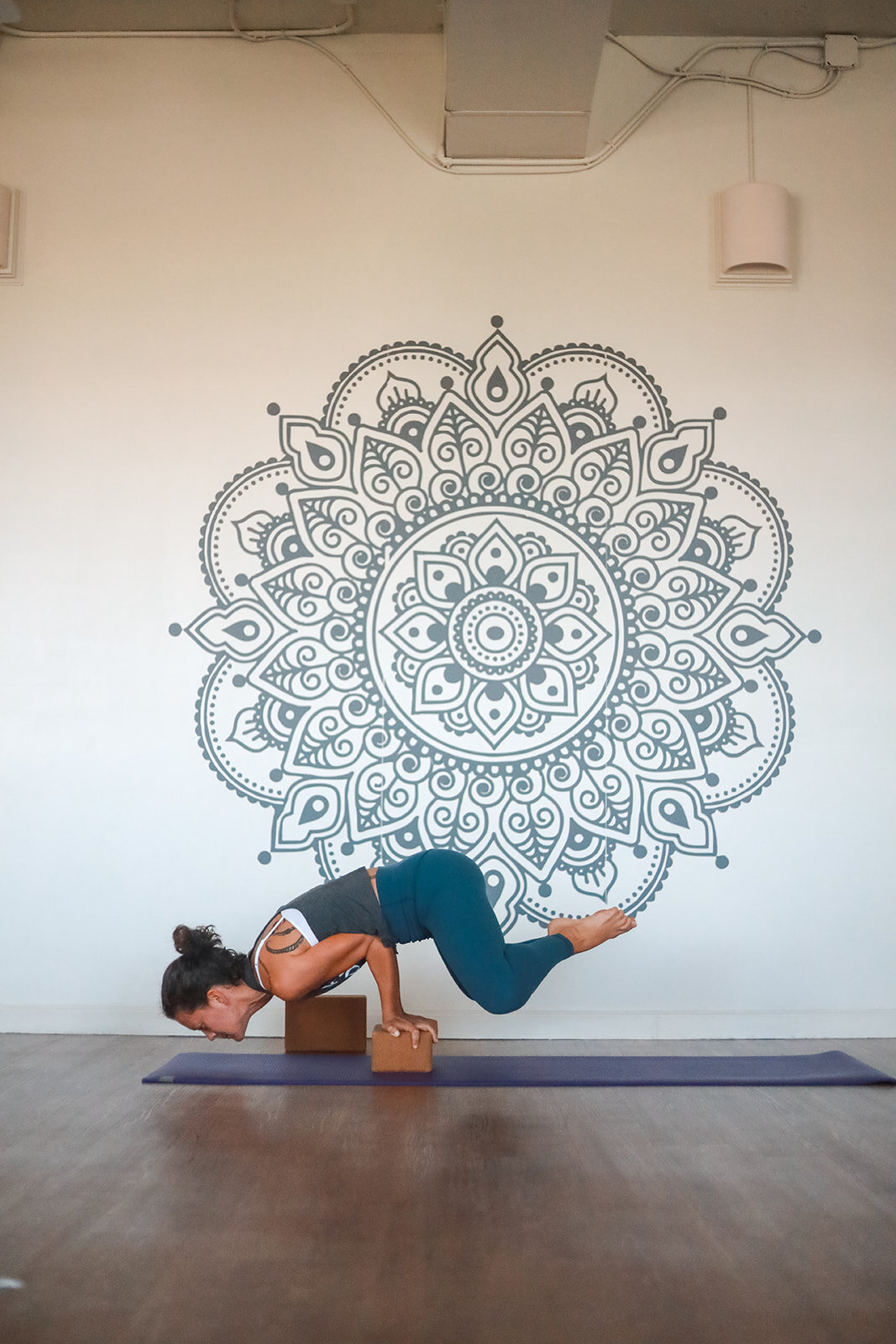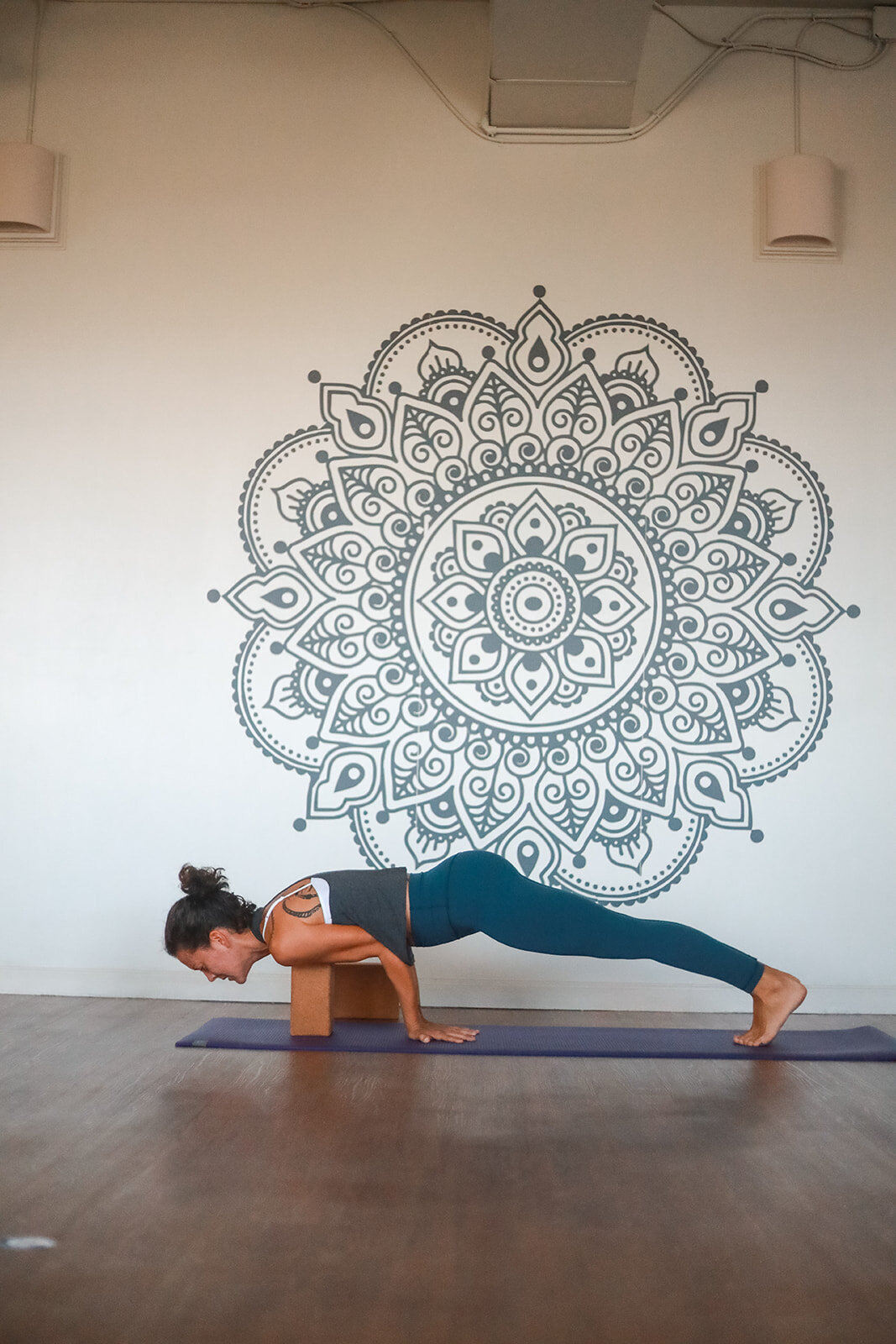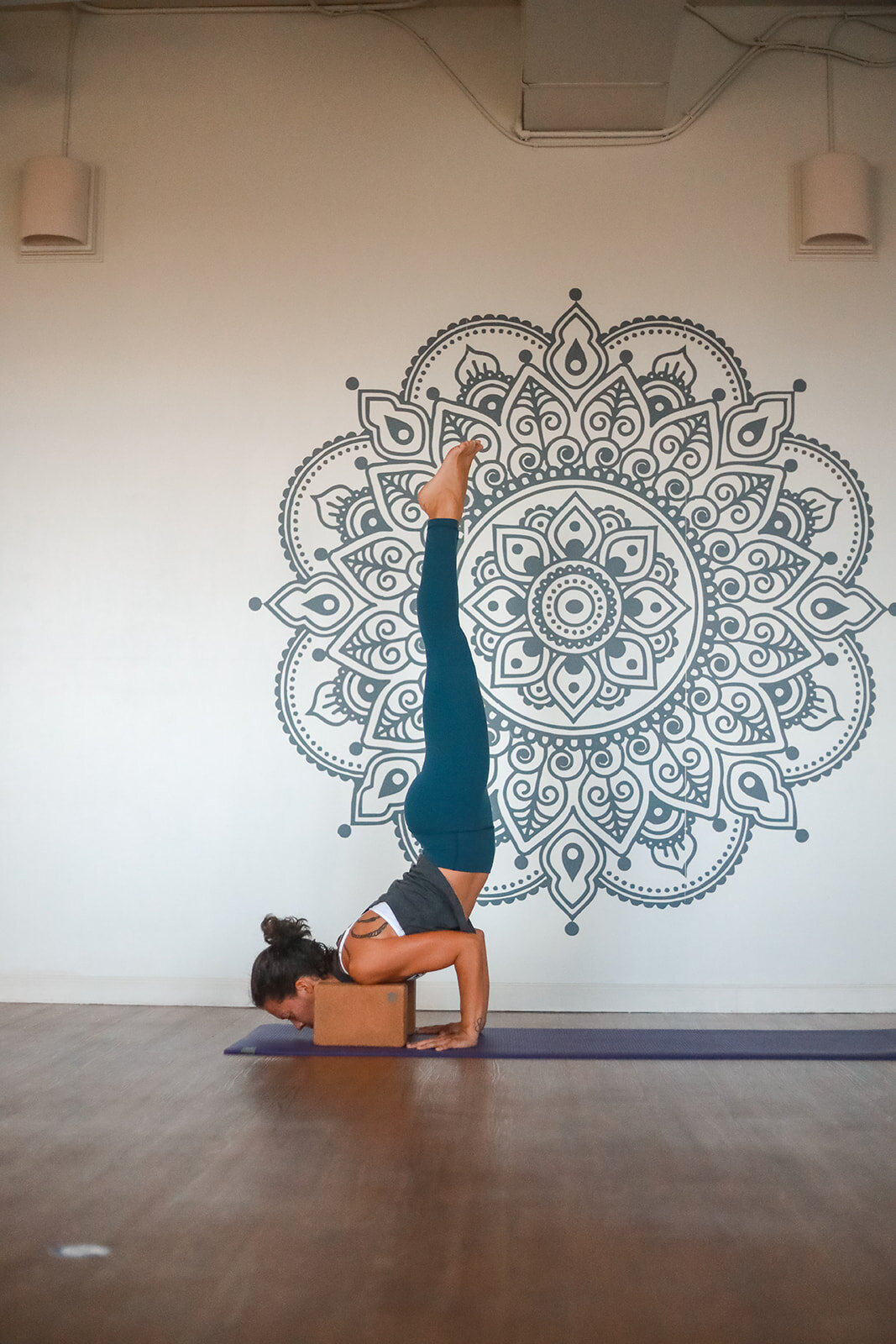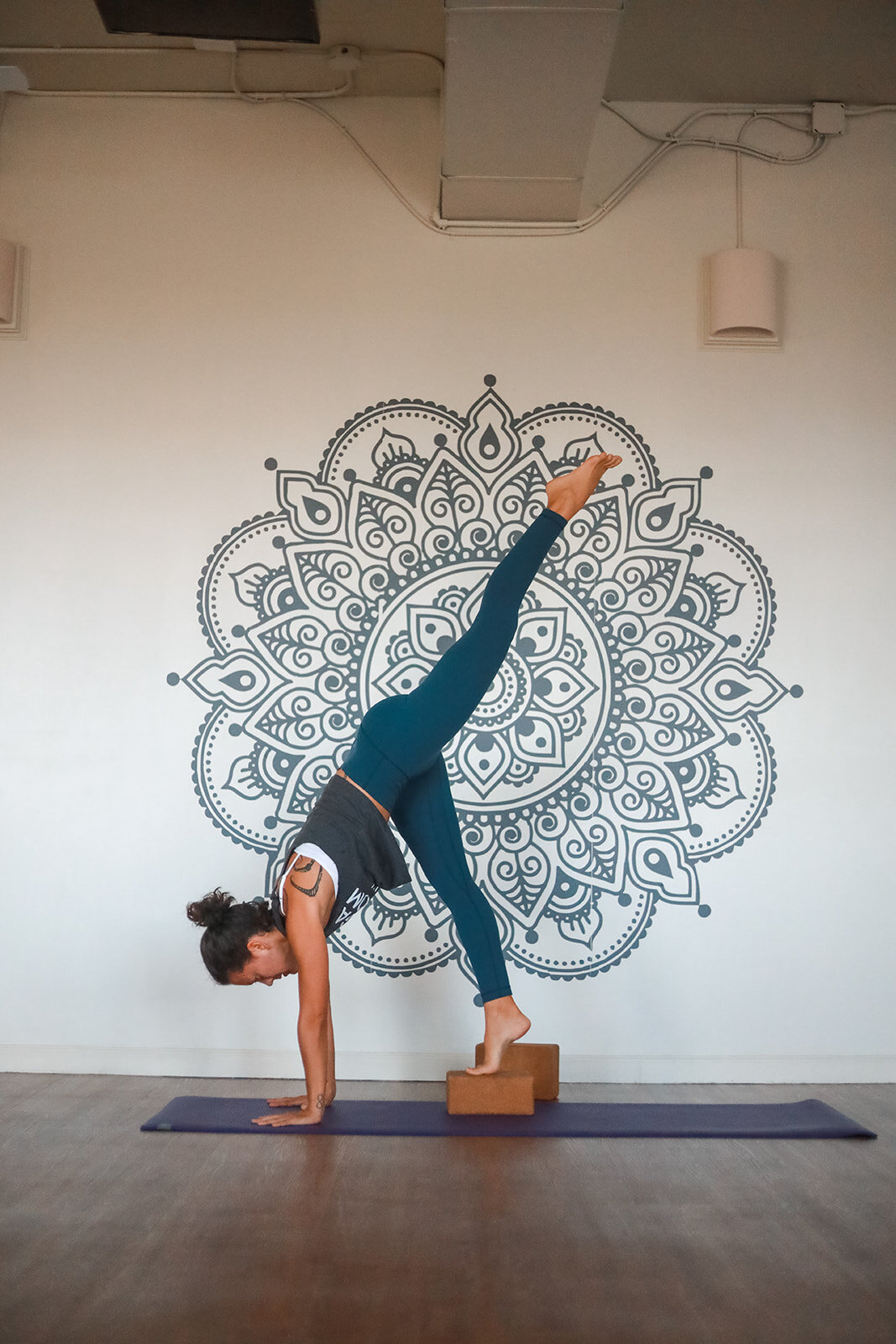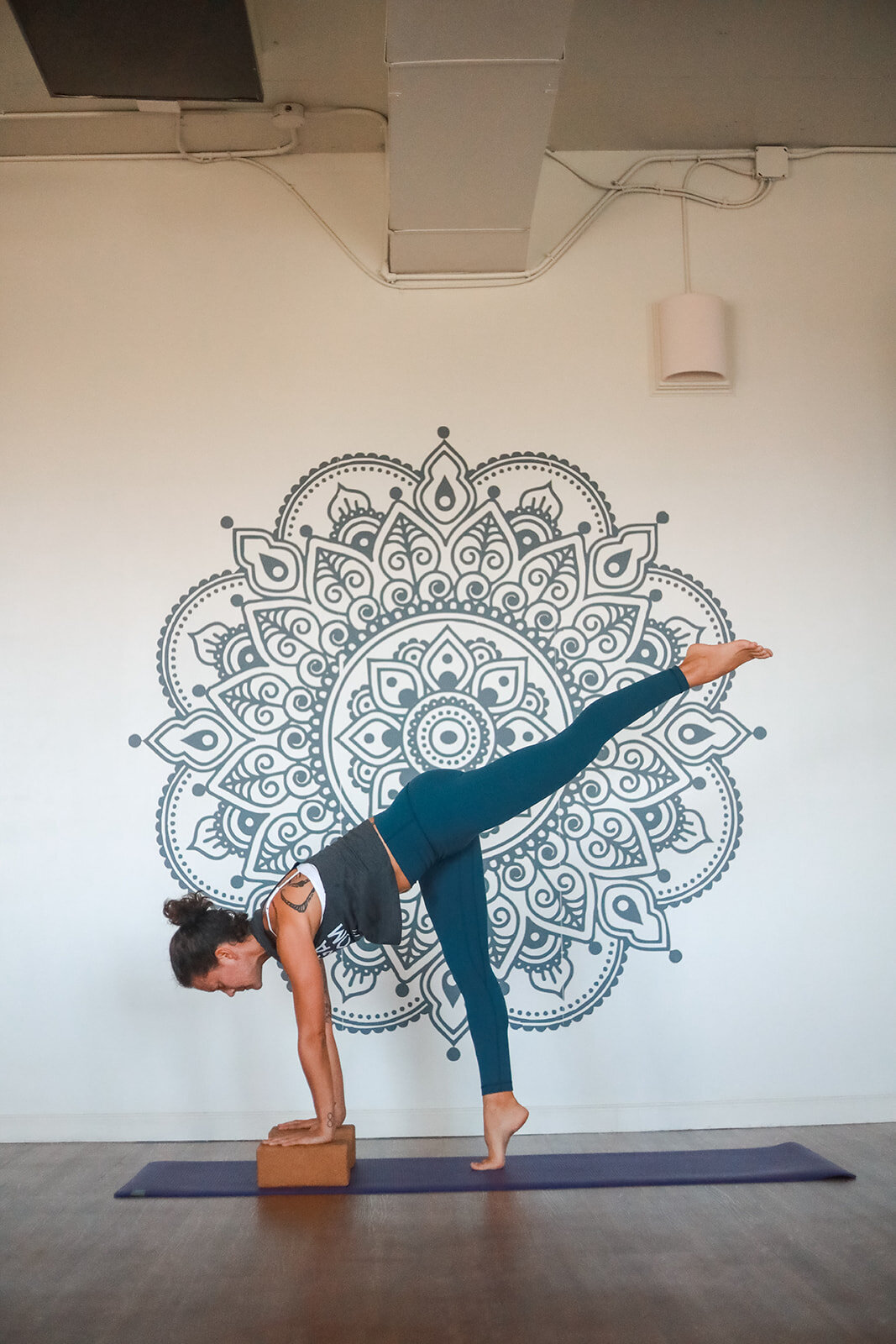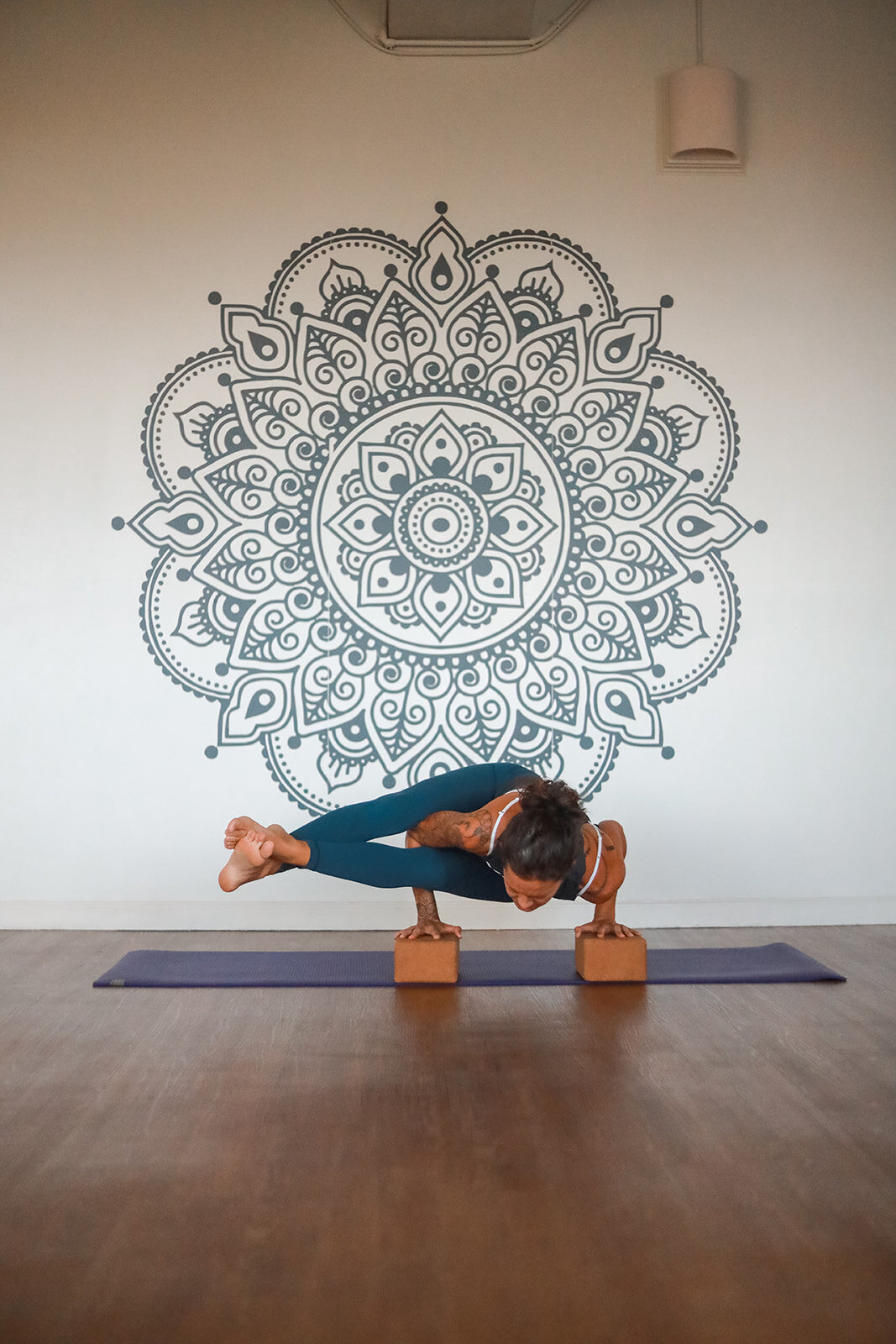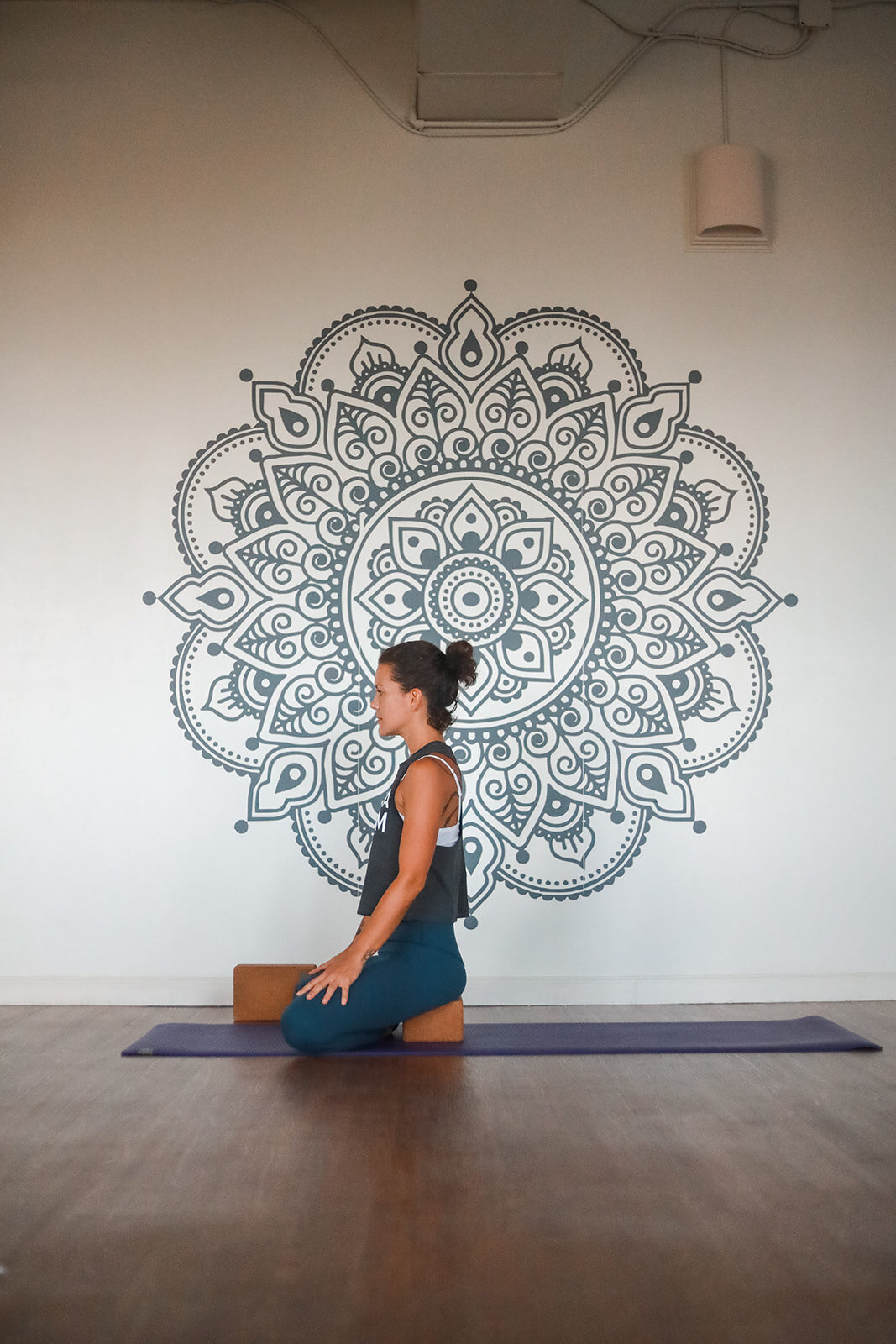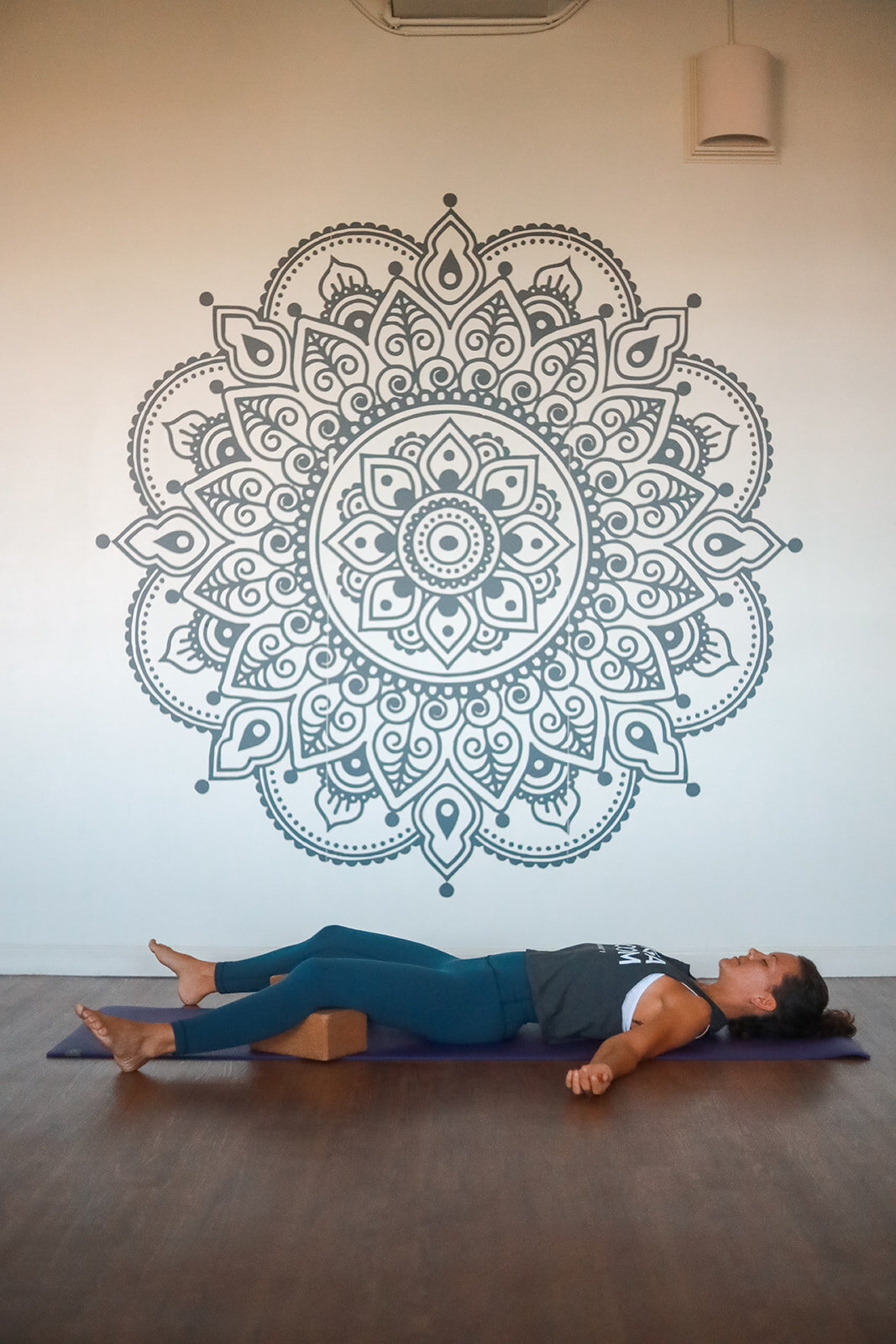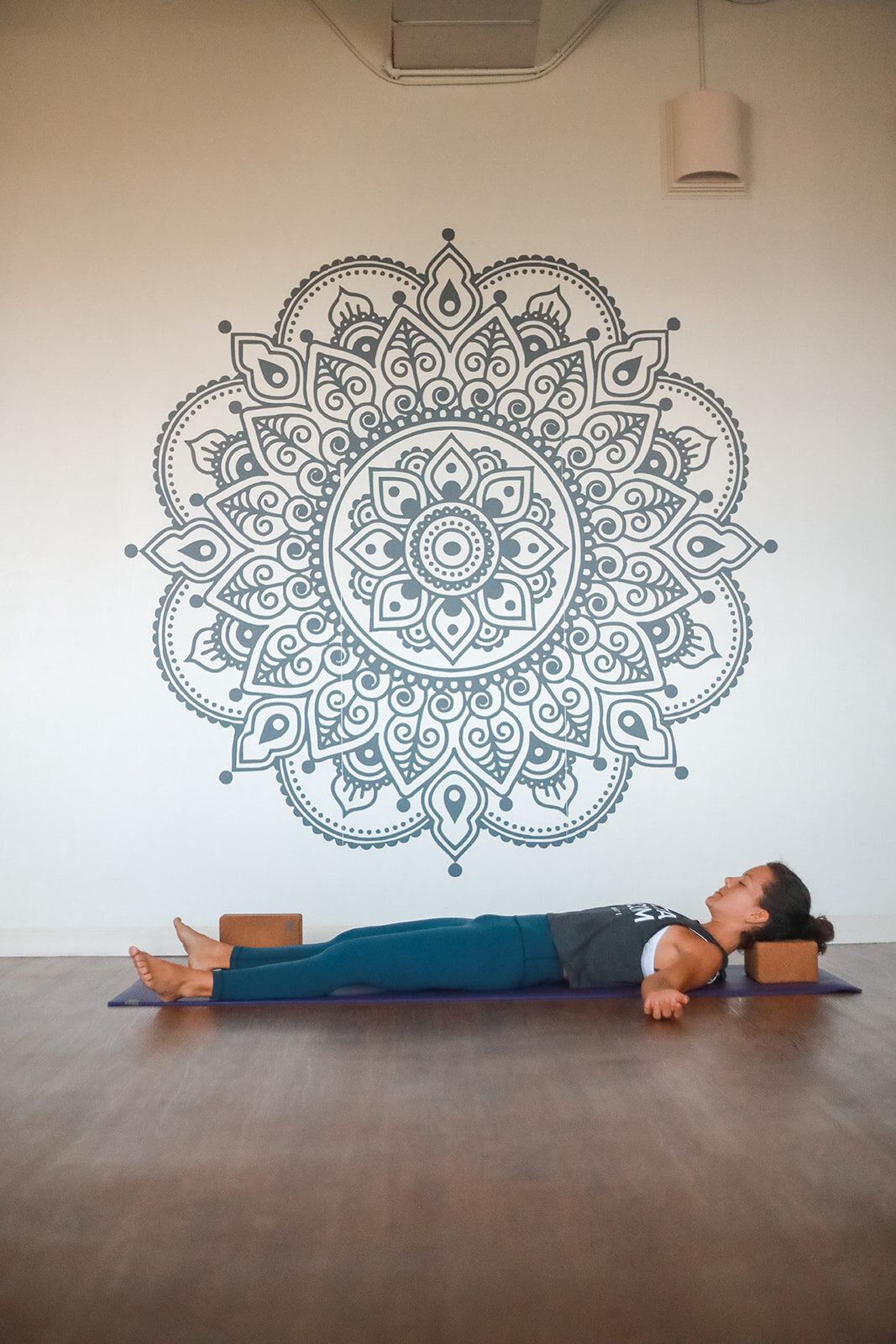101 Ways To Use Yoga Blocks: Beginner to Advanced
Have you reached a plateau with inversions?
Are you struggling to get deeper in your forward fold?
Do you want to build a stronger core?
You need a yoga block.
Yoga blocks (also called bricks) are far and away the most popular prop to practice with, and for good reason. Every single yoga pose can be modified or intensified by using a block, making them the most versatile tool around. In this post, we’re breaking down 101 ways you can use blocks to enhance your practice. If you’re new to the prop party, welcome! Your body will thank you later.
In this post we’ll cover:
Then, we’ll get into ways you can use blocks for:
Who should use yoga blocks?
If you’ve ever assumed that yoga blocks are only for beginners, you might be surprised to learn that blocks can - and should - be used by all levels of practitioners. Yoga postures look and feel different in every body, so it only makes sense that props would be the same way. Our advice? Try them in a variety of ways to find out what feels good for you!
What are the benefits of blocks?
Yoga blocks are simply tools to help you find proper alignment and engagement.
Let’s say part of that again: Blocks are simply tools.
There are three ways we can use these tools in our yoga practice:
To support
To stretch, and
To strengthen
Most people think of blocks as supports to make poses more accessible, but there are just as many ways to uplevel and intensify your practice using blocks. When you use a block correctly, it should help you move safely towards your edge.
How do I know what height is right?
Part of the versatility of blocks comes from the fact that they have three different heights - we’ll call them low, medium, and high.
Because of surface area, blocks on the lowest setting are much more stable than blocks on the highest setting. In this post, we will recommend block heights for individual exercises and postures.
If you’re unsure which height is right for you, start with the most accessible height and work your way up. If your breath no longer comes easily, you may have gone too far.
What’s the best type of yoga block?
Back in the 70s when yoga blocks were first introduced, they were most often made out of wood. While wooden blocks still exist today, most common yoga blocks are made out of foam or cork.
Foam blocks are great for beginners and anyone looking to practice restorative postures. If you often find yourself reaching for a yoga block to support your chest, forearms, or forehead in deep stretches, foam blocks are for you. They provide more comfort and cushioning than harder cork alternatives. Most yoga studios use foam blocks because they are versatile and lightweight.
We love: Manduka’s Recycled Foam Yoga Block
Cork blocks offer more stability and grip. For those wishing to build strength, choosing a heavier cork block can be a great way to add challenge in overhead block holds, drills, and core work. Cork is also the best choice if you want to practice arm balances on blocks. Since they’re made out of a natural material, cork blocks are eco-friendly!
* Yogi Tip: cover cork blocks with a yoga blanket or towel for more comfort in restorative poses
We love: Manduka’s Cork Yoga Block
Foundational Poses
1. Downward Facing Dog
Under Hands: Shifts your center of gravity backwards, taking pressure out of your hands and wrists
Under Feet: Places emphasis on hip height, deeply stretching the back of your legs and calves.
Yogi tip: If your mat is slippery, try using a yoga towel or situate your blocks against a wall.
2. Child’s Pose
Under Seat: Brings the ground closer to provide comfort in your hips and knees
Triceps Stretch: Elongates triceps while gently opening your chest and activating your shoulders
3. Mountain Pose
Between Hands: Strengthens arms by activating your shoulders, back, and serratus anterior muscles
Triceps Stretch: Elongates triceps while gently opening your chest and activating your shoulders
Chaturanga Arms: Helps mind-body connection to hug elbows into sides during High to Low Plank while activating triceps and back muscles
Plank Arms: Activates shoulders to prepare for plank pose
Between Thighs: Squeezing the block helps activate inner thighs to support pelvis, hips, and lower spine
4. Chair Pose
Between Hands: Strengthens arms by activating your shoulders, back, and serratus anterior muscles
Between Thighs: Activates inner thighs to support pelvis, hips, and lower spine
Under Feet: Adds balance challenge; strengthens stabilizer muscles in feet and ankles
5. Drinking Bird
Under Heels: Stretches soles of feet and activates stabilizers in feet and calves
Standing Poses
6. Warrior II
Block Under Front Foot: Strengthens front leg by adding challenge to hamstring and hip. Changes perception and requires more balance and mind-body connection.
7. Extended Side Angle
Under Front Fingertips: Encourages lift of chest and length through lower side-body to activate obliques.
Between Hands: Challenges transverse abdominals and obliques to hold torso in place while activating shoulders and back muscles when you squeeze the block.
8. Horse Pose
Under Heels: Strengthens calves, quads, and stabilizers in legs and feet
9. Extended Crescent Lunge
Between Hands: Challenges core, back, and arm muscles, while shifting more weight into the front leg turns increases challenge for front quadriceps.
10. Crescent Lunge
Under Back Toes: Shifts more weight into front leg, making the lunge more challenging by strengthening front quad and glute. For some, this may require more balance, too.
11. Double Lunge
Under Back Toes: Shifts more weight into front leg, strengthening front quadricep, hamstring, and glute.
12. Bear Pose
Between Hands: Challenges core, back, and arm muscles
Balancing Postures
13. Tree Pose
Block Under Foot: Activates stabilizer muscles in standing foot, calf, and leg
14. Standing Figure Four
Block Under Foot: Activates stabilizer muscles in standing foot and leg with extra challenge for core
15. Standing Figure Four
Blocks Under Fingertips: Supports ability to fold forward for more stretch in the hip as a preparation pose for flying squirrel and flying pigeon
16. Half Moon
Block Under Front Hand: Supports stability of upper body and encourages lift of chest using obliques
17. Legs Up The Wall
Block On Feet: Helps engage stabilizer muscles to keep block in one place. Allows you to find the place where your feet stack directly over your hips.
18. Chair Pose
Block Under Heels: Lifting the heels shifts weight slightly forward, which brings more challenge into the calves and quads
19. Tuck and Curl
Block Under Heels: Stretches soles of feet and activated stabilizers in feet and calves
20. Standing Half Moon
Block Between Hands: Squeezing the block helps to activate obliques, shoulders, and back muscles
Backbends
21. Floor Bow Pose
Between Thighs: Activates inner thighs to support pelvis, hips, and lower spine and maintain alignment
Under Belly: Encourages lift of chest and activation of back muscles to stay upright
22. Cobra Pose
Under Hands: Encourages keeping hands high and light to lift the sternum up with core and back engagement
23. Upward Facing Dog
Under Hands: Vertical space helps to distribute curve of the spine more evenly
24. Camel Pose
Between Thighs: Activates inner thighs and pelvic floor to keep core active during backbend
Under Hands: Supports deeper extension of spine as a step towards bringing hands down to ankles
25. Supported Bridge Pose
Under Back: Allows spine to gently experience extension with support for relaxation
26. Supported Fish Pose
Under Head/Chest: Encourages gentle heart opening with full support for relaxation
27. Modified Fish Pose
Under Mid Back: Keeps chest from collapsing down and allows back to be supported in deeper backbend
28. Fish Pose
Under Spine: Encourages lift of sternum and deep heart opening with support in this challenging backbend
29. Wheel Pose
Under Hands: If your shoulders are tight, propping your hands on blocks gives you extra lift to keep from crunching into your lower back
Under Feet: If you have tight hip flexors or quads, propping blocks under your feet can help you find the extension needed in your frontline.
30. Forearm Wheel
Under Elbows: Prepare yourself to move into deeper chest openings by using blocks. The higher support more evenly distributes the backbend through your spine to avoid crunching your shoulders or low back.
31. King Arthur Pose
Under Back Knee: Provides cushioning for back knee while shifting weight slightly forward to offer more hip flexor extension and less pressure in back knee
32. Wild Thing
Under Toes: Gives confidence to move into backbend by bringing the ground closer
33. Extended Cobra
Between Hands: Activates shoulders and back muscles, while weight of block provides more challenge in the lift
34. Reverse Crunches
Behind Head: Focuses strengthening on upper back, providing greater challenges
Twists
35. Twisted Forward Fold
Under Hand: Helps keep chest parallel to the earth and keep length in the spine
36. Prayer Twist
Block Between Hands: Encourages deeper twist and strengthens chest and arms when you squeeze the block
Block Between Thighs: Activates inner thigh muscles to keep hips squared during twists and support pelvic and lower spine stability
37. Quad Stretch
Under Hand: Lifts chest making it easier to find the grip between hand and back foot
38. Shoulder Twist
Under Temple: Allows head to release for more relaxation and support in twist
39. Revolved Crescent
Between Elbow and Thigh: Helps balance by needing to press both your elbow and thigh into the block
Between Hands: Encourages deeper twist by adding more space between palms
40. Open Twist
Under Hand: Encourages lift of chest and length in spine to support the twist
41. Revolved Triangle
Under Hand: Adds more length to spine to make twist more accessible
42. Revolved Half Moon
Under Hand: Supports balance and stability in bottom leg while adding length to spine to keep chest squared with earth for proper alignment
43. Revolved Sugarcane
Between Heel and Glute: Strengthens hamstring and glute of lifted leg while providing more of a balance challenge
44. Easy Twist
Between Thighs: Allows greater relaxation and support in gentle twist
Core Exercises
45. Reach and Crunch
Block Between Elbow and Thigh
To Do: Hold one block between your elbow and thigh on the same side, pressing firmly in both directions. Extend and crunch your other arm and leg in and out, lifting your chest up each time you crunch. Perform 10-20 reps per side.
46. Bicycles
Block Between Elbow and Opposite Thigh
To Do: Press block between your elbow and opposite thigh. Keeping your chest up, send your opposite leg up and down. For less intensity, bend your knee. Perform 10-20 reps per side.
47. Leg Lowers
Block Between Thighs
To Do: Squeeze the block between your thighs or shins. With your hands by your sides or behind your head, slowly lower your legs down to hover over the ground, and then lift back up. Perform 15-30 reps total.
48. Low Boat Hold
Block Between Hands
To Do: Lay on your back and squeeze the block between your palms overhead. Drive your lower back into the earth and lift your hands and feet off the ground to activate your belly. Hold for 3-5 breaths.
49. Russian Twists
Block Between Hands
To Do: In boat pose, squeeze a block between your hands. Lean your chest slightly back and start to twist side to side. Squeeze your side body with each twist. For more intensity, lift your toes off the ground.
50. Boat Pose
Block Between Thighs
To Do: Squeeze the block to activate your inner thighs and deep core muscles. Hold for 15-30 seconds.
Block Between Hands and Thighs
To Do: With a block between your hands, extend your arms overhead to activate your core, shoulders, and back muscles. Hold for 3-5 breaths.
51. Side Plank Threads
Block in Hand
To Do: From plank pose, lift one arm skyward with block in hand. Stack your hips on top of one another to stabilize your core and lift your hips high. Thread the block under your body, twisting from your ribcage, and then back to the sky.
52. Plank Pose
Block Between Thighs: Stack your shoulders over your wrists and your hips over your knees. Squeeze the block between your thighs to activate your inner thighs and stabilize your pelvis and core.
53. Split Leg Pulses
Between Hands
To Do: Extend one leg up to the sky and one leg forward to hover over the earth. With your block in hand, reach your arms past your top leg and squeeze the block so that it doesn’t make contact with your hamstring. Keep your chest lifted off the ground and pulse up. Perform 10-20 reps per side.
54. Block Switches
Hands to Feet
To Do: Lay on your back with your arms overhead and your legs out long. Start with a block between your hands. Pike your arms, legs and chest up, and switch the block to between your feet. Slowly lower to hover, then lift back up and switch the block back to your hands.
55. Block Thread Swimmers
Pass Hand to Hand
To Do: Lift your chest and and scissor your legs, passing the block under your thighs from hand to hand.
56. Cherry Pickers
Block on Feet
To Do: Balance the block on your feet to keep your hips stable. Reach one hand at a time to tap your opposite foot, lifting your chest off the ground as much as you can.
Hip Openers
57. Runner’s Lunge
Under Forearms: Bring the ground closer to make the pose more accessible
58. Lizard Pose
Under Back Thigh/Shin: Deepens the pose by lifting the back leg, or gives support compared to traditional lizard pose where your back leg is lifted with strength.
59. Side Lunge
Under Heel: Supports balance if heel does not come all the way to the earth, or strengthens calf and foot arch if heel naturally drops
60. Twisted Side Lunge
Under Hand: Encourages more length in spine and lift in chest while twisting open
61. Half Pigeon
Under Thigh: Provides support if hip is lifted off the earth or if dropping into hip causes any pain in your knee
62. Butterfly
Under Knees: Supports a more gentle opening if inner thighs/groin feel overstretches in traditional butterfly
Under Forehead: Allows upper body to fully release and relax in the fold
63. Deer Pose
Under Forearms: Brings the ground closer to allow you to fold with support
64. Yogi Squat
Under Seat: Provides support for hips to make the pose more accessible
65. Double Pigeon
Under Knee: Makes pose more accessible and helps find proper alignment and support if your knees don’t naturally fall to rest on each other
Under Forearms: Brings ground closer to facilitate a more accessible fold
66. Reclined Bound Angle
Under Knees: Allows inner thighs to relax and avoid overextension
Under Feet: Deepens stretch in inner thighs and groin
67. Rainbow Warrior
Block Supporting Back Thigh: Resting thigh on support allows you to keep hips lifted
Hamstrings & Folds
68. Ragdoll Pose
Under Feet: Gives more space to fold forward and brings more mind-body connection to the soles of your feet
69. Wide Legged Forward Fold
Under Feet: Gives more space to fold forward and brings more mind-body connection to the soles of your feet
70. Seated Forward Fold
Under Seat: Lifts hips to automatically lengthen hamstrings
Past Feet: Gives support for a deeper fold if your hands can reach past the soles of your feet
71. Half Splits
Under Fingertips: Brings the ground closer to allow more length in spine
72. Pyramid Pose
Under Hands: Brings the ground closer to allow more length in spine
73. Standing Splits
Under Foot: Challenges balance and allows for a deeper fold for those with very open hamstrings
74. Shiva Squat
Under Heel: Strengthens calf and quad of standing leg
75. Full Splits
Under Front Thigh: Makes splits more accessible and helps relax into deeper poses
76. Airplane Pose
Under Foot: Adds balance challenge and strengthens stabilizer muscles in standing leg
77. Modified Airplane
Under Foot: Adds balance challenge and strengthens stabilizer muscles in standing leg
Under Hands: Supports lift of upper back and helps build strength for full balance posture
78. Legs Up the Wall
Under Sacrum: Lifts hips to increase relaxation
Drills
79. Low Lunge Step Through
Blocks Under Hands
To Do: From three legged dog, pull knee forward towards your nose, keeping your shin lifted high. Gently lower your foot down between your hands.
80. High to Low Plank
Blocks Under Hands
From high plank, bend your elbows into your sides at 90 degrees, keeping your shoulders in line with your hips and toes. Then, straighten your arms and lift your chest into upward facing dog. Flip your toes and press back into downward facing dog.
Block Under Chest
When flowing from high to low plank, pull your chest forward to gently tap the block. As you move into upward facing dog, flip the block forward. This helps you lower to the correct alignment and lead the backbend with your heart.
81. Donkey Kicks
Block Between Heel and Thigh
Squeeze the block as you lift and lower your knee to activate your hamstring and glute.
82. Dolphin Push-Ups
Block Between Forearms
Squeeze the block between your forearms as you lift and lower your hips from forearm plank to dolphin pose, strengthening your shoulders, chest, and core.
Arm Balances
83. Crow Pose
Under Forehead: Helps lean forward with trust and stability.
Hands on Blocks: Adds more height in arms to help get your knees higher on your triceps and add challenge. Can also help with grip and your hand lock.
84. Headstand
Between Hands: Press the block into the back of your head between your hands to take pressure out of your neck.
85. Forearm Stand
Between Forearms: Squeeze the block to activate your chest and shoulders and to keep your elbows from splaying out, providing more stability.
86. Pentacle Pose
Blocks Under Hands: Adds more space between hips and the earth. Activate your core to lift your knees off the earth.
87. Firefly Pose
Blocks Under Hands: Provides more lift for your chest and arms
88. Hurdler’s Pose
Under Back Toes: Helps facilitate lift in back leg and get your hips high to bring your knee to your triceps more easily
89. Hurdler’s Pose
Blocks Under Hands: Adds more space between chest and earth to allow more weight to shift forward into your hands
90. Side Crow
Blocks Under Hands: Provides more lift for your chest and arms
91. Scissor Leg Side Crow
Blocks Under Hands: Provides more lift for your chest and arms
92. Peacock Pose Prep
Under Shoulders: Provides stability in upper body to be able to find the proper strength and alignment
93. Peacock Pose
Blocks Under Hands: Provides more lift for your chest and arms to shift forward and lower towards the earth
94. Chin stand
Under Shoulders: Provides stability in upper body to be able to find the proper strength and alignment
95. Handstand Prep
Block Under Toes: Gives more lift to lower body to make hops into handstand more accessible
96. Handstand Prep
Blocks Under Hands: Provides more lift for your chest and arms to shift forward and lower towards the earth
97. Eight Angle Pose
Blocks Under Hands: Provides more lift for your chest and arms to shift forward and lower towards the earth
Surrender Postures
98. Toe Squat
Under Knees: Relieves pressure in front of foot and lessens stretch in the sole of foot. Can also provide comfort for knees.
99. Easy Seat
Under Seat: Supports seat to lift up and out of hips, making the pose more accessible if you have knee, hip, or groin tightness
100. Supported Savasana
Under Knees: Flattens your lower back to the earth to take compression out of your spine. If you have cork blocks, cover them with a towel or blanket for more softness.
101. Savasana
Under Head: Tucks chin slightly to lengthen the back of your neck.
There you have it! 101 ways to use blocks in your yoga practice. Whether you’re new to your practice or not, try on some of these suggestions to see how they affect your practice. And if you do try them on, let us know by tagging us on Instagram at @yogaroomhawaii.
